Risultati: 191

Area STEM: Scienze biomediche e biotecnologie
Competenze: farmacologia cellulare e molecolare
Parole chiave: Alzheimer, coronavirus, Covid-19, farmaci, ictus, infarto miocardico, malattie degenerative, medicina preventiva, pandemie, sclerosi multipla, terapia, trauma cerebrale, vaccini
Regione: Lombardia
Funzione/Ruolo
Professoressa ordinaria di Farmacologia, Pro-Rettrice Vicaria, Pro-Rettrice delegata al coordinamento e alla promozione della Ricerca, Università degli studi di Milano. Presidente della Fondazione Filarete, Milano.
Percorso professionale
Dopo la laurea in Farmacia all'Università degli Studi di Milano nel 1979, prosegue gli studi attraverso una specializzazione in Tossicologia Sperimentale presso la stessa università nel 1984. Nel 1988 consegue un dottorato di ricerca in Medicina Sperimentale a Roma. Durante i suoi studi Maria Pia Abbracchio passa dei periodi di formazione all'estero: nel 1980 è Postdoctoral fellow del dipartimento di Farmacologia della University of Texas di Houston, nel 1992 è "Honorary Research Fellow" della London College University. Contemporaneamente prosegue la sua formazione e le sue ricerche prima come ricercatrice, poi come assistente alla docenza di Neuropsicofarmacologia ed infine nel 1998 come professoressa associata di Farmacologia presso l'Università di Milano. Dal 2002 è professoressa straordinaria e dal 2005 è professoressa ordinaria di Farmacologia nella stessa università. È attualmente responsabile di un gruppo di ricerca costituito da 12 giovani scienziati presso lo stesso ateneo.
Risultati scientifici
I suoi interessi scientifici si concentrano sui ruoli fisiopatologici delle purine, molecole di segnalazione universali che regolano crescita, sopravvivenza e differenziamento cellulare. Ha individuato un nuovo recettore purinergico coinvolto nel differenziamento delle cellule staminali ancora presenti nel cervello adulto e nel cuore, e sta sviluppando nuovi approcci terapeutici che possano, attraverso questo recettore, potenziare la riparazione dei danni presenti in malattie degenerative acute (ictus e trauma cerebrale, infarto miocardico) e croniche (Alzheimer, sclerosi multipla). Nel 2015 Maria Pia Abbracchio e colleghi nell'ambito di uno studio internazionale scoprono come il farmaco anti-infiammatorio per asmatici "Montelukast" possa stimolare la neurogenesi e quindi giovare nei casi di declino cognitivo. Partendo da studi precedenti che dimostravano la maggiore probabilità per pazienti con infezioni sistemiche di ammalarsi di Alzheimer (una malattia caratterizzata da infiammazione cerebrale), il gruppo di ricerca ha scoperto un recettore (GPR17) presente in cellule simil staminali del cervello che producono la mielina, sostanza che riveste i nervi. La scoperta di questo recettore si estende anche all'ippocampo (zona del cervello interessata nel processo di apprendimento e della memoria), e il gruppo di ricerca dimostra che la somministrazione del farmaco anti asmatico sperimentato su topi anziani migliora la capacità di apprendimento. La ricerca sul recettore purinergico GPR17 offre una speranza anche ai malati di sclerosi multipla. Mentre i farmaci attualmente disponibili intervengono a bloccare la progressione della malattia, affiancarli con farmaci che fanno ripartire l'azione di riparazione del danno indurrebbe il sistema nervoso a produrre nuova mielina e, sostenendo i prolungamenti nervosi con le sostanze di crescita presenti nella mielina, si potrebbe finalmente evitare quella neuro-degenerazione che è tipica delle forme progressive e genera disabilità.
Attività editoriali e pubblicazioni
È autrice di circa 180 pubblicazioni scientifiche, tra cui:
(2016) Vigan F, Schneider S, Cimino M, Bonfanti E, Gelosa P, Sironi L, Abbracchio MP, Dimou L. GPR17 expressing NG2-Glia: Oligodendrocyte progenitors serving as a reserve pool after injury. Glia, 64(2):287-99.
(2015) Marschallinger J, Schäffner I, Klein B, Gelfert R, Rivera FJ, Illes S, Grassner L, Janssen M, Rotheneichner P, Schmuckermair C, Coras R, Boccazzi M, Chishty M, Lagler FB, Renic M, Bauer HC, Singewald N, Blümcke I, Bogdahn U, Couillard-Despres S, Lie DC, Abbracchio MP, Aigner L. Structural and functional rejuvenation of the aged brain by an approved anti-asthmatic drug. Nature Communications, 6:8466.
(2015) Fumagalli M, Bonfanti E, Daniele S, Lecca D, Martini C, Trincavelli ML, Abbracchio MP. The ubiquitin ligase Mdm2 controls oligodendrocyte maturation by intertwining mTOR with G protein-coupled receptor kinase 2 in the regulation of GPR17 receptor desensitization. Glia, 63(12):2327-39.
(2014) Zaratin P, Battaglia MA & Abbracchio MP. Nonprofit foundations spur translational research. Trends in Pharmacological Sciences, 35, 552-5.
(2011) Ceruti S, Villa G, Fumagalli M, Colombo L, Magni G, Zanardelli M, Fabbretti E, Verderio C, van den Maagdenberg AM, Nistri A, Abbracchio MP. Calcitonin gene-related peptide-mediated enhancement of purinergic neuron/glia communication by the algogenic factor bradykinin in mouse trigeminal ganglia from wild-type and R192Q Cav2.1 Knock-in mice: implications for basic mechanisms of migraine pain. Journal of Neuroscience, 31:3638-49.
(2011) Fumagalli M, Daniele S, Lecca D, Lee PR, Parravicini C, Fields RD, Rosa P, Antonucci F, Verderio C, Trincavelli ML, Bramanti P, Martini C, Abbracchio MP. Phenotypic changes, signaling pathway, and functional correlates of GPR17-expressing neural precursor cells during oligodendrocyte differentiation. Journal of Biological Chemistry, 286:10593-604.
(2009) Ceruti S, Villa G, Genovese T, Mazzon E, Longhi R, Rosa P, Bramanti P, Cuzzocrea S, Abbracchio MP. The P2Y-like receptor GPR17 as a sensor of damage and a new potential target in spinal cord injury. Brain. 132:2206-18.
(2009) Di Virgilio F, Ceruti S, Bramanti P, Abbracchio MP. Purinergic signalling in inflammation of the central nervous system. Trends in Neurosciences, 32:79-87.
(2006) Abbracchio MP, Burnstock G, Boeynaems JM, Barnard EA, Boyer JL, Kennedy C, Knight GE, Fumagalli M, Gachet C, Jacobson KA, Weisman GA. International Union of Pharmacology LVIII: update on the P2Y G protein-coupled nucleotide receptors: from molecular mechanisms and pathophysiology to therapy. Pharmacological Reviews, 5:281-341.
(2006) Ciana P, Fumagalli M, Trincavelli ML, Verderio C, Rosa P, Lecca D, Ferrario S, Parravicini C, Capra V, Gelosa P, Guerrini U, Belcredito S, Cimino M, Sironi L, (2006) Tremoli E, Rovati GE, Martini C, Abbracchio MP. The orphan receptor GPR17 identified as a new dual uracil nucleotides/cysteinyl-leukotrienes receptor. EMBO Journal, 25:4615-27.
Riconoscimenti e premi
Fra i tanti riconoscimenti ricevuti, è stata nominata da Thomson Reuters "Highly cited scientist", definizione basata sul numero di citazioni ottenute nella letteratura scientifica internazionale che identifica gli scienziati autori delle pubblicazioni più influenti al mondo nel loro settore (meno dello 0,5% di tutti i ricercatori). Nel 2014 è stata insignita dell'onorificenza di Commendatore dell'Ordine al Merito della Repubblica Italiana. Nel 2016 è nominata "in nome di sua Maestà Filippo VI“ Foreign Member Of The Royal Academy Of Pharmacy Of Spain.
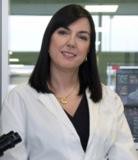
Area STEM: Scienze biomediche e biotecnologie
Competenze: biochimica, ricerca oncologica
Parole chiave: angiogenesi, chemioprevenzione, coronavirus, Covid-19, immunologia, metastasi in provetta, microambiente, ricerca di base, ricerca traslazionale, terapie biologiche, terapie geniche
Regione: Lombardia
Funzione/Ruolo
Responsabile del Laboratorio di Biologia Vascolare e Angiogenesi dell'IRCCS MultiMedica. Direttrice scientifica delle Fondazione Multimediaca Onlus. Professoressa di Patologia Generale all'Università di Milano Bicocca.
Percorso professionale
Dopo la laurea in chimica organica conseguita presso l'Università di Genova nel 1979, Adriana Albini si specializza in oncologia sia in Italia che all'estero. Lavora infatti al Max Planck Institute di Biochimica a Monaco di Baviera e per l'Istituto Superiore della Sanità Americano. Tornata in Italia dirige il laboratorio scientifico di Oncologia Molecolare dell'Istituto Nazionale per la ricerca sul Cancro, dove diventa Vice Direttrice Scientifica e Direttrice del Dipartimento di Oncologia Traslazionale. Nel 2002 consegue l'idoneità all'insegnamento universitario ed è a capo del Dipartimento "Infrastruttura Ricerca e Statistica" dell'Arcispedale Santa Maria Nuova di Reggio Emilia.
Attualmente Adriana Albini si occupa della direzione del Laboratorio di Biologia Vascolare ed Angiogenesi di IRCCS MultiMedica, a Sesto San Giovanni (MI) ed è Direttrice scientifica di Fondazione MultiMedica Onlus. E' inoltre docente a contratto di Patologia generale all'Università di Milano Bicocca.
Adriana Albini non ha mai smesso di condurre ricerca scientifica, i suoi principali campi di interesse sono: la biologia vascolare, l'invasione e metastasi, l'angiogenesi, il microambiente, la chemioprevenzione, l'immunopatogenesi legate all'AIDS e di tumori associati all'AIDS e la terapia genica con citochine (mediatori polipeptidici che permettono la comunicazione fra il sistema immunitario e le cellule di altri organi).
Risultati scientifici
Adriana Albini ha dedicato la maggior parte della sua carriera scientifica e didattica all'Oncologia Sperimentale. Attraverso la ricerca traslazionale (particolare disciplina che consente di convertire le scoperte scientifiche in terapie applicative) è riuscita a sviluppare nuove terapie nel campo dell'angiogenesi. Porta il suo nome la tecnica "metastasi in provetta" che ancora oggi consente nuove scoperte in tutto il mondo. Gli interessi di Adriana Albini non si fermano soltanto alla ricerca traslazionale, è infatti impegnata anche su temi quali la prevenzione nell'ambito delle malattie cronico-degenerative anche attraverso il suo ruolo di Presidente del Comitato Tecnico Scientifico dell'Osservatorio Salute Donna.
Attività editoriali e pubblicazioni
Adriana Albini è nel comitato editoriale delle più importanti riviste oncologiche internazionali, tra cui Journal of the National Cancer Institute, Cancer Research e Carcinogenesis. Si occupa di comunicazione scientifica ed è iscritta all'ordine dei giornalisti.
È autrice di più di trecento pubblicazioni scientifiche, tra cui:
(2016) Albini A, DeCensi A, Cavalli F, Costa A. Cancer Prevention and Interception: A New Era for Chemopreventive Approaches. Clinical Cancer Research, 22:4322-7.
(2015) Albini A, Cavuto S, Apolone G, Noonan DM. Strategies to Prevent "Bad Luck" in Cancer. Journal of the National Cancer Institute, 107.
(2014) Dallaglio K, Bruno A, Cantelmo AR, Esposito AI, Ruggiero L, Orecchioni S, Calleri A, Bertolini F, Pfeffer U, Noonan DM, Albini A. Paradoxic effects of metformin on endothelial cells and angiogenesis. Carcinogenesis, 35:1055-66.
(2014) Bruno A, Ferlazzo G, Albini A, Noonan DM. A Think Tank of TINK/TANKs: Tumor-Infiltrating/Tumor-Associated Natural Killer Cells in Tumor Progression and Angiogenesis. Journal of the National Cancer Institute, 106.
(2012) Albini A, Tosetti F, Li VW, Noonan DM, Li WW. Cancer prevention by targeting angiogenesis. Nature Reviews Clinical Oncology, 9:498-509.
(2010) Cammarota R, Bertolini V, Pennesi G, Bucci EO, Gottardi O, Garlanda C, Laghi L, Barberis MC, Sessa F, Noonan DM, Albini A. The tumor microenvironment of colorectal cancer: stromal TLR-4 expression as a potential prognostic marker. Journal of Translational Medicine, 8:112.
(2010) Albini A, Pennesi G, Donatelli F, Cammarota R, De Flora S, Noonan DM. Cardiotoxicity of anticancer drugs: the need for cardio-oncology and cardio-oncological prevention. Journal of the National Cancer Institute, 102:14-25.
(2010) Albini A, Noonan DM. The 'chemoinvasion' assay, 25 years and still going strong: the use of reconstituted basement membranes to study cell invasion and angiogenesis. Current Opinion in Cell Biology, 22:677-89.
(2007) Albini A, Sporn MB. The tumour microenvironment as a target for chemoprevention. Nature Reviews Cancer, 7:139-47.
(2007) Albini A, Benelli R. The chemoinvasion assay: a method to assess tumor and endothelial cell invasion and its modulation. Nature Protocols, 2:504-11.
Riconoscimenti e premi
Adriana Albini ha ricevuto numerosi premi e riconoscimenti:
Nel 1984, Premio internazionale "Max Buerger" conferito dalla società tedesca di gerontologia per il miglio lavoro inedito sull'invecchiamento.
Nel 1985, Premio internazionale "Doernkamp Zbinden" dell'Istituto John Hopkins di Baltimora per la messa a punto di un test in vitro per la valutazione del potenziale metastatico di cellule tumorali.
Nel 2000, Premio "Firenze Donna" per il settore ricerca scientifica.
Nel 2004, Premio "Amelia Earhart".
Nel 2007, Premio "Berlucchi" per la ricerca scientifica.
Nel 2010, Premio "Ippocrate", sezione "Il Ricercatore".
Nel 2013, Premio "ITWIIN" (Associazione Italiana Donne Inventrici e Innovatrici) per la "Migliore Donna Inventrice e Innovatrice" nella categoria Alta Formazione.
Nel 2014, Premio "Donne che ce l'hanno fatta" assegnato dall'assessore alle Pari Opportunità di Brescia.
Nel 2015, Premio "EUWIIN" (Network Europeo Donne Inventrici ed Innovatrici).
Nel 2016, Premio "Luigi Castagnetta" per la ricerca oncologica
Nel 2016, è stata inserita fra le "Top Italian Women Scientists", per l'impegno e l'alto numero di citazioni nella ricerca biomedica.
Nel 2021 è stata inserita dalla BBC nell'elenco delle "100 donne più influenti al mondo nel 2020", per aver guidato il cambiamento nell'anno della comparsa della pandemia da Covid-19.

Funzione/Ruolo
Ricercatrice presso l'INFN (Istituto Nazionale di Fisica Nucleare), sezione di Padova.
Percorso professionale
Dopo la laurea in Fisica presso l'università di Padova nel 1992, perfeziona la sua formazione attraverso un dottorato di ricerca in Fisica che consegue nel 1996. Già nello stesso anno prosegue i suoi studi con un post- doc presso l'università e l'INFN, sezione di Padova. Dal 2000 è ricercatrice confermata all'Istituto Nazionale di Fisica Nucleare presso la Sezione INFN di Padova. Nel 2008, 2012 e 2014 collabora come Associata Scientifica con il CERN di Ginevra e il laboratorio Fermilab di Chicago. Attualmente si occupa dello studio delle prospettive offerte dai nuovi progetti della Fisica delle Alte Energie dopo LHC.
Risultati scientifici
Nel 1996 osserva assieme ai colleghi del CDF il decadimento del top quark (particella fondamentale del Modello Standard) e ne misura la massa e la sezione d'urto di produzione attraverso lo sviluppo di un metodo originale di elaborazione dei dati che permette di estrapolare la stima da dati reali. Nel 2004 diviene membro della collaborazione CMS a LHC del CERN di Ginevra. Ha partecipato alla scoperta del bosone di Higgs nel 2012 come responsabile della qualità dei dati da utilizzare per l'analisi. Durante la sua carriera Patrizia Azzi ha focalizzato le sue ricerche sulle particelle e il loro comportamento per fornire spiegazioni sul funzionamento della fisica delle alte energie. Azzi è anche coordinatrice di numerosi progetti di ricerca: nel biennio 2002-2004 dirige il Top Physics Analysis Group per la collaborazione CDF al Tevatron per progettare e realizzare il programma di ricerca sul top quark con un gruppo di circa 200 fisici provenienti da tutto il mondo. Come membro dell'esperimento CMS ha coordinato vari gruppi fra cui il "Physics Perofrmance and Datasets" nel 2012/2013 che si occupa della qualità di dati per la fisica, il gruppo di Fisica "B2G" che si occupa di ricerche di fisica esotica nel 2014/15 e attualmente il gruppo di Fisica che si occupa di studi per il futuro progetto di High Luminosity LHC che inizierà nel 2024.
Patrizia Azzi è anche una sostenitrice attiva del progetto Future Circular Collider (FCC) nell'ambito del quale studia in particolare il potenziale per la misurazione più precisa della massa del quark top in un nuovo acelleratore di leptoni.
Attività editoriali e pubblicazioni
È autrice di numerose pubblicazioni nazionali ed internazionali, tra cui:
(2016) CMS Collaboration, Khachatryan S, [...] Azzi P, et al. Search for vectorlike charge 2/3 T quarks in pp collisions at √s=8 TeV.Physical Review D, 93:012003.
(2014) CMS Collaboration. Search for top-quark partners with charge 5/3 in the same-sign dilepton final state.Physical Review Letters, 112:171801.
(2014) Bicer M, [...] Azzi P, et al. First Look at the Physics Case of TLEP. The Journal of High Energy Physics, 01:164.
(2012) The CMS Collaboration. Observation of a new boson at a mass of 125 GeV with the CMS experiment at the LHC.Physics Letters B, 716:30-61.
(2009) CMS Tracker Collaboration, Adam W, [...] Azzi P, et al. Performance studies of the CMS Strip Tracker before installation.Journal of Instrumentation, 4.
(1999) CDF Collaboration, Abe F, [...] Azzi P, et al. Measurement of the top quark mass with the Collider Detector at Fermilab.Physical Review Letters, 82:271-276.
(1997) CDF Collaboration, Abe F, [...] Azzi P, et al. First observation of the all hadronic decay of t pairs. Physical Review Letters, 79:1992-1997.
(1995) CDF Collaboration, Abe F, [...] Azzi P, et al. Observation of top quark production in p collisions. Physical Review Letters, 74:2626-2631.
(1994) CDF Collaboration, Abe F, [...] Azzi P, et al. Evidence for top quark production in pcollisions at √s = 1.8 TeV.Physical Review Letters, 73:225-231.
(1994) Amidei D, Azzi P, et al. The Silicon Vertex Detector of the Collider Detector at Fermilab. Nuclear Instruments and Methods in Physics Research Section A, 350:73-130.
Riconoscimenti e premi
Nel 2013 riceve dalla Società europea di fisica il Premio "High Energy and Particle Physics", per l'eccezionale contributo alla fisica delle alte energie, assegnato alle collaborazioni ATLAS e CMS, "per la scoperta di un bosone di Higgs, come previsto dal meccanismo Brout-Englert-Higgs".
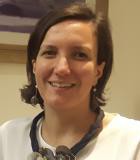
Funzione/Ruolo
Co-founder MIPU
Percorso professionale
Giulia Baccarin, classe 1981, si laurea con lode in Ingegneria Biomedica al Politecnico di Milano. Fin dai primi anni 2000 appassionata di modellazione predittiva, trascorre gli inizi della sua carriera professionale in Giappone in una società di consulenza, completando con successo il prestigioso ETP (Executive Training Programme) finanziato dalla Commissione Europea. Nel 2008, rientrata in Italia, fonda la sede italiana della società di ingegneria I-care, oggi leader in Europa nella manutenzione predittiva e dell’affidabilità. Parallelamente, spinta dal forte desiderio di promuovere e supportare lo spirito imprenditoriale di giovani talenti in Italia, ha co-fondato MIPU, un gruppo di imprese che portano l'intelligenza artificiale nella fabbrica.
Risultati scientifici
Le soluzioni sviluppate da MIPU si focalizzano proprio su analitiche predittive dedicate all'ottimizzazione dei processi industriali e sono ricercate da aziende leader in Italia e all'estero. Da oltre due anni Giulia Baccarin, che nel 2016 ha vinto il premio Gamma Donna per l'imprenditoria giovanile e femminile, è attiva nella promozione di una discussione profonda circa il ruolo dell’etica dell’intelligenza artificiale, la diversità nelle comunità di programmazione e la jobless society su prestigiosi palcoscenici come TedXRoma 2017, Wired Trends 2018 e Wired Next Fest 2017, DIGITAL ITALY SUMMIT 2017.
Riconoscimenti e premi
Premio Gamma Donna per l'imprenditoria giovanile e femminile, 2016
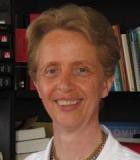
Funzione/Ruolo
Professoressa ordinaria di Medicina di Genere all'Università degli Studi di Padova. Presidente del Centro Studi Nazionale su Salute e Medicina di Genere. Membro eletto del Comitato scientifico della Società Internazionale di Medicina di genere www.isogem.com.
Percorso professionale
Dopo aver conseguito la laurea in Medicina e Chirurgia presso l'Università di Padova nel 1972, prosegue la sua formazione prima con la specializzazione in Endocrinologia all'Università di Pavia poi come research fellow presso la Ludolf Krehl Klinik dell'Università di Heidelberg (Germania Occidentale). Successivamente si specializza in Medicina Interna presso l'Università di Padova. Dal 1980 al 1988 ricopre il ruolo di ricercatrice confermata prima presso la cattedra di Gerontologia e Malattie del Ricambio dell'Istituto di Medicina Clinica, successivamente presso la Cattedra di Patologia Medica I dell'Istituto di Medicina Interna, dell'Università degli Studi di Padova. Dal 1987 è professoressa associata di Gerontologia e Geriatria nelle due università di Pavia e Padova, nel 1995 al 1999 è professoressa ordinaria di Medicina Interna all'Università di Sassari, dove nel 1996 fonda e dirige la Scuola di Specialità di Gerontologia e Geriatria dell'Università.
Dal 1999, alla carriera accademica affianca quella clinica, ricoprendo fino al 2017 la direzione dell'Unità Operativa Complessa di Medicina Generale dell'Azienda Ospedaliera Università di Padova.
Nel 2013 viene chiamata per "chiara fama" a ricoprire il ruolo di professoressa ordinaria di Medicina di Genere dall'Università di Padova, dove attualmente è professoressa ordinaria fuori ruolo.
Nell'aprile del 2020 viene chiamata dal Capo della Protezione civile, su proposta del Presidente del Consiglio, a integrare il Comitato tecnico-scientifico per la gestione dell'emergenza Covid-19.
Risultati scientifici
Dal 1996 a oggi l'attività di ricerca di Giovannella Baggio si è focalizzata prevalentemente sui fattori determinanti l'invecchiamento e la longevità, in particolare sull'interazione tra geni e fattori ambientali che nell'uomo e nella donna sembra seguire traiettorie differenti. Questi studi l'hanno condotta a occuparsi di Medicina di Genere e a fondare, nel 2009, il primo Centro Studi Nazionale su Salute e Medicina di Genere, di cui è Presidente. Si sa ormai che il genere gioca un ruolo cruciale nella manifestazione delle malattie e quindi nelle possibilità di prevenirle e di curarle. L'infarto, ad esempio, è la prima causa di morte nelle donne, ma i sintomi non sono gli stessi dell'uomo (il tipico dolore al petto, ad esempio, spesso nelle donne compare solo in una fase avanzata) e inoltre alcuni esami sono meno efficaci: il cicloergometro o test da sforzo nelle donne ha una sensibilità decisamente inferiore, mentre sono più adatti altri esami, come la scintigrafia o risonanza magnetica miocardica, l'ecostress cardiaca. Inoltre nelle donne il diabete aumenta il rischio di infarto tre volte più di quanto non accada nell'uomo, e chi fa prevenzione deve saperlo. Il riferimento per le ricerche sulla medicina di genere è Bernardine Healy, cardiologa e prima donna a capo del National Institutes of Health che nel 1991 pubblicò un articolo intitolato "La sindrome di Yentl", che diede una grande spinta alla consapevolezza delle diversità fra uomo e donna in cardiologia. Oggi non si studiano le differenze di genere solo nelle malattie cardiovascolari: le donne sono colpite due volte più degli uomini dall'Alzheimer, probabilmente a causa di fattori biologici, ambientali, genetici. Eppure quasi tutte le scoperte e i progressi dell'ultimo mezzo secolo sono stati ottenuti su casistiche maschili, con alcune eccezioni come la ricerca sulla depressione o sull'osteoporosi. Per diffondere questa nuova consapevolezza, negli ultimi anni Giovannella Baggio ha organizzato: il 1°, 2° e 3° Congresso Nazionale di Medicina di Genere a Padova, il 1° Congresso Nazionale di Oncologia di Genere, dove ricercatori italiani e stranieri per la prima volta si sono confrontati nei differenti campi della medicina sulle differenze di genere. Per tale motivo viene invitata in tutta Italia a tenere conferenze. Presenta lavori e partecipa in qualità di relatrice, di moderatrice e di "relatrice invitata" ai più importanti Congressi Nazionali ed Internazionali nel campo delle Malattie del Metabolismo, dell'Arteriosclerosi, della Farmacologia Clinica, della Gerontologia e Geriatria, della Medicina Interna e della Medicina di Genere.
Attività editoriali e pubblicazioni
Giovannella Baggio è fondatrice ed editor dell'Italian Journal of Gender-specific Medicine; è autrice di 6 monografie e 270 pubblicazioni scientifiche, fra cui:
(2016) Ostan R, Monti D, Gueresi P, Bussolotto M, Franceschi C, Baggio G. Gender, aging and longevity in humans: an update of an intriguing/neglected scenario paving the way to a gender-specific medicine. Clinial Science, 130(19):1711-25.
(2015) Sergi G, Veronese N, Fontana L, De Rui M, Bolzetta F, Zambon S, Corti MC, Baggio G, Toffanello ED, Crepaldi G, Perissinotto E, Manzato E. Pre-frailty and risk of cardiovascular disease in elderly men and women: the Pro.V.A. study. Journal of the American College of Cardiology, 65(10):976-83.
(2015) Baggio G. Dalla medicina di genere alla medicina genere-specifica. From Gender medicine to Gender-specific Medicine. Italian Journal of Gender-Specific Medicine, 1:2-5.
(2014) Toffanello ED, Sergi G, Veronese N, Perissinotto E, Zambon S, Coin A, Sartori L, Musacchio E, Corti MC, Baggio G, Crepaldi G, Manzato E. Serum 25-hydroxyvitamin d and the onset of late-life depressive mood in older men and women: the Pro.V.A. study. The journals of gerontology. Series A, Biological sciences and medical sciences, 69(12):1554-61.
(2013) Baggio G, Corsini A, Floreani A, Giannini S, Zagonel V. Gender medicine: a task for the third millennium. Clinical Chemistry and Laboratory Medicine, 51(4):713-27.
(2009) Bilato C, Corti MC, Baggio G, Rampazzo D, Cutolo A, Ilicato S, Crepaldi G. Prevalence, Functional Impact, and Mortality of Atrial Fibrillation in an Older Italian Population (from tha Pro.V.A. Study). American Journal of Cardiology, 104(8):1092-7.
(2008) Capri M, Salvioli S, Monti D, Caruso C, Candore G, Vasto S, Olivieri F, Marchegiani F, Sansoni P, Baggio G, Mari D, Passarino G, De Benedictis G, Franeschi C. Human longevity within an evolutionary perspective: The peculiar paradigm of post-reproductive genetics. Experimental Gerontology, 43(2):53-60.
(2007) Corti MC, Baggio G, Sartori L, Barbato G, Manzato E, Musacchio E, Ferrucci L, Cardinali G, Donato D, Launer LJ, Zambon S, Crepaldi G, Guralnik JM. White Matter Lesions and the risk of incident hip fracture in older persons: Results from the PRO.V.A. (PROgetto Veneto Anziani) Study. Archives of Internal Medicine, 167(16):1745-1751.
(2006) Caselli G, Pozzi L, Vaupel JW, Deiana L, Pes G, Carru C, Franceschi C, Baggio G. Family clustering in Sardinian longevity: A genealogical approach. Experimental Gerontology, 41(8):727-736.
(2002) Deiana L, Pes GM, Carru C, Ferrucci L, Franceschi C, Baggio G.The "Oldest Man on the Planet". Journal of the American Geriatrics Society, 50:2098-9.
Riconoscimenti e premi
Giovannella Baggio ha fatto parte e fa parte di numerose società scientifiche italiane e internazionali come la Società Italiana di Medicina Interna (SIMI), la Società Italiana di Gerontologia e Geriatria (SIGG) (nella quale ha fatto parte del direttivo dal 1997 al 2001 quale membro eletto) dal 1990 al 2005 e l'International Society of Gerontology (IAS). E' stata socia della Società Italiana per lo Studio dell'Arteriosclerosi (SISA), nella quale ha fatto parte del direttivo quale membro eletto fino al 2005. Fino al 2000 è stata socia del Gruppo di Studio per Malattie Dismetaboliche e dell'Arteriosclerosi. Dal 1977 al 1995 è stata membro dell'European Lipoprotein Club, della International Atherosclerosis Society e della European Atherosclerosis Society. Dal 1989 al 1996 e dal 2000 al 2006 è membro della Gerontological Society of America (GSA). Dal 2007 è membro della IGM Society (International Gender Medicine) e dal 2012 è Membro eletto del Comitato scientifico di tale Società Internazionale. Dal 2009 è Fondatrice e Presidente del Centro Studi Nazionale su Salute e Medicina di Genere Dal luglio 2014 è componente nell'ambito del Centro Studi, Documentazione e Ricerca della FNOMCeO della commissione "Promozione dell'educazione terapeutica e della medicina di genere" Dal giugno 2012 è eletta membro del Consiglio Direttivo della International Gender Medicine Society. Nel 2013 è vincitrice del Premio Paul Harris Fellow del Rotary Internazionale e nel 2016 vince il Premio AMMI "una donna, una storia".
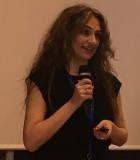
Funzione/Ruolo
Professoressa ordinaria di Linguistica alla Scuola Universitaria di Studi Superiori IUSS Pavia
Percorso professionale
Si forma in linguistica alla Scuola Normale Superiore di Pisa. Nel corso del dottorato di ricerca, conseguito nel 2007 sempre alla Scuola Normale Superiore di Pisa, intraprende studi di neurolinguistica, conducendo esperimenti di risonanza magnetica funzionale e di elettroencefalografia sulla comprensione della metafora verbale. Nel 2009, grazie ad un finanziamento ottenuto dalla Regione Toscana per la creazione di un test per la valutazione dei disturbi comunicativi nella patologia, diventa ricercatrice junior. Nel 2011 si sposta alla Scuola Universitaria di Studi Superiori IUSS di Pavia, prima come ricercatrice senior e poi come Professoressa Associata e, dal 1° novembre 2022, Ordinaria. Come docente a contratto o “visiting lecturer”, ha insegnato neurolinguistica e pragmatica sperimentale in vari atenei in Italia e all’estero, tra cui l’Università Vita-Salute S. Raffaele di Milano, l’Università di Pisa, l’Università di Verona, l’Università di Zurigo, la Scuola Normale Superiore di Pisa, l’Università di Trondheim. Alla Scuola IUSS coordina il Dottorato in Neuroscienze Cognitive e Filosofia della Mente, a titolo congiunto con l’Università Vita-Salute S. Raffaele di Milano.
Risultati scientifici
Si occupa di neurolinguistica, con particolare riferimento alle abilità comunicative cosiddette ‘pragmatiche’, che permettono di comunicare efficacemente e di andare oltre il significato letterale delle parole. I suoi risultati scientifici riguardano principalmente due filoni di ricerca. Il primo è incentrato sui meccanismi neurofisiologici che consentono la comprensione degli impliciti linguistici, come le metafore, l’ironia e le battute umoristiche. Si tratta di fenomeni molto frequenti, che da un lato apportano benefici alla comunicazione (ad esempio rendendola più efficace), ma dall’altro producono un aumento dei costi di elaborazione nel nostro cervello. In questo ambito ha realizzato uno studio di neuroimmagine sulla comprensione delle metafore e diversi studi con registrazione dell’elettroencefalogramma.
Il secondo filone di ricerca riguarda i disturbi del linguaggio, in particolare il disturbo pragmatico del linguaggio. Tale disturbo può manifestarsi nel neurosviluppo (ad esempio nello spettro autistico) ma anche in individui adulti affetti da patologie neurologiche o psichiatriche. Esso comporta difficoltà ad avere conversazioni adeguate al contesto e a cogliere gli aspetti più coloriti ed emotivi del linguaggio, compromettendo dunque gravemente la sfera sociale dell’individuo. In questo ambito di ricerca ha coordinato un progetto finanziato dalla Regione Toscana (2010-2013), che ha portato alla creazione del test APACS (“Assessment of Pragmatic Abilities and Cognitive Substrates”). APACS è stato utilizzato per descrivere il disturbo pragmatico del linguaggio in varie popolazioni, tra cui schizofrenia, sclerosi laterale amiotrofica, sclerosi multipla, dislessia, trauma cranico e malattia di Parkinson. Il test APACS è in corso di adattamento dall’italiano ad altre lingue.
Dal 2017 coordina il progetto “The interpretative brain”, finanziato dal MIUR e finalizzato alla creazione di strumenti di riabilitazione e promozione delle abilità pragmatiche nella patologia e nell’arco di vita. Il progetto si occupa anche dello studio dei rapporti tra abilità comunicative e abilità di cognizione sociale (teoria della mente), attraverso studi comportamentali e neurofisiologici.
Nel 2017 ha fondato (insieme a F. Domaneschi) il network XPRAG.it (Experimental Pragmatics in Italy), che mira a offrire un forum italiano per discutere – a livello internazionale – di temi di pragmatica in chiave sperimentale.
Attività editoriali e pubblicazioni
È autrice di numerose pubblicazioni scientifiche su riviste e volumi nazionali ed internazionali, fra cui:
In italiano a carattere didattico/divulgativo:
[2017] Bambini V. Il cervello pragmatico. Carocci.
[2017] Bambini V. Dove risiede il linguaggio? Linguaggio, cervello e neurolinguistica.In Masini F, Grandi N (a cura di), Tutto ciò che hai sempre voluto sapere sul linguaggio e sulle lingue, Caissa Italia, 113-116.
[2013] Bambini V. La lingua di Dante entra in risonanza: contributi italiani allo studio dei correlati neurobiologici del linguaggio. In Maraschio N, De Martino D (a cura di), L’italiano dei saperi. Ricerca, scoperta, innovazione, Le Lettere, 7-23.
In inglese a carattere specialistico:
[2019] Canal P, Bischetti L, Di Paola S, Bertini C, Ricci I, Bambini V. ‘Honey, shall I change the baby? – Well done, choose another one’: ERP and time-frequency correlates of humor processing.Brain and Cognition.
[2019] Bambini V, Canal P, Resta D, Grimaldi M. Time-course and neurophysiological underpinnings of metaphor in literary context. Discourse Processes, 56:77-97.
[2018] Lecce S, Ronchi L, Del Sette P, Bischetti L, Bambini V. Interpreting physical and mental metaphors: Is Theory of Mind associated with pragmatics in middle childhood?. Journal of Child Language.
[2018] Schaeken W, Van Haeren M, Bambini V. The understanding of scalar implicatures in Children with Autism Spectrum Disorder: Dichotomized responses to violations of informativeness.Frontiers in Psychology, 9:1266.
[2016] Bambini V, Arcara G, Martinelli I, Bernini S, Alvisi E, Moro A, Cappa S, Ceroni M. Communication and pragmatic breakdowns in amyotrophic lateral sclerosis patients. Brain and Language, 153–154:1–12 .
[2016] Arcara G, Bambini V. A test for the Assessment of Pragmatic Abilities and Cognitive Substrates (APACS): Normative data and psychometric properties. Frontiers in Psychology, 7:70
[2016] Bambini V, Bertini C, Schaeken W, Stella A, Di Russo F. Disentangling metaphor from context: An ERP study.Frontiers in Psychology, 7:559.
[2016] Bambini V, Arcara G, Bechi M, Buonocore M, Cavallaro R, Bosia M. The communicative impairment as a core feature of schizophrenia: Frequency of pragmatic deficit, cognitive substrates, and relation with quality of life. Comprehensive Psychiatry, 71:106-120.
[2014] Catani M, Bambini V. A model for Social Communication And Language Evolution and Development (SCALED).Current Opinion in Neurobiology, 28:165-171.
[2014] Weiland H, Bambini V, Schumacher P. The role of literal meaning in figurative language comprehension: evidence from masked priming ERP. Frontiers in Human Neuroscience, 8:583.
[2011] Bambini V, Gentili C, Ricciardi E, Bertinetto PM, Pietrini P. Decomposing metaphor processing at the cognitive and neural level through functional magnetic resonance imaging, Brain Research Bulletin 86(3-4):203-216.
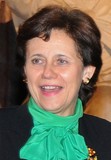
Area STEM: Chimica
Competenze: chimica, risonanza magnetica, scienze della vita
Parole chiave: biologia molecolare, biologia strutturale, disegno di vaccini, donne e scienza, ferro, infrastrutture di ricerca, metalli in sistemi biologici, metalloproteine, processi funzionali delle cellule, risonanza magnetica, trasporto rame nelle cellule
Regione: Toscana
Funzione/Ruolo
Direttrice del CERM (Centro Risonanze Magnetiche) e Professoressa di Chimica presso l'Università di Firenze
Percorso professionale
Dopo aver conseguito la laurea in Chimica presso l'Università degli studi di Firenze nel 1978, prosegue la sua formazione attraverso vari periodi di ricerca all'estero, principalmente negli USA. Prosegue la sua carriera accademica all'interno dell'Università di Firenze prima come ricercatrice e nel 1987 come professoressa associata. Dal 1999 è professoressa ordinaria di Chimica Generale e Inorganica e dal 2011 direttrice del CERM (Centro Risonanze Magnetiche) dell'Università di Firenze.
Risultati scientifici
Lucia Banci ha fornito e sta fornendo contributi originali e innovativi in Biologia strutturale e nella risonanza magnetica nucleare (NMR) applicata a sistemi biologici. In particolare ha acquisito visibiltà come leader internazionale per la caratterizzazione di processi funzionali in cellule viventi con risoluzione a livello atomico. Ha applicato e sta applicando questo approccio allo studio di processi responsabili del trasporto e utilizzo di ioni metallici, in particolare rame e ferro. Ha sviluppato un nuovo approaccio per "in cell NMR", cioè NMR ad alta risoluzione su cellule viventi, che permette di caratterizzare a livello atomico proteine umane in cellule umane viventi. Lucia Banci è impegnata nello sviluppo e nell'utilizzo della spettroscopia di risonanza magnetica nucleare (NMR) ad alta risoluzione, campo di ricerca nel quale ha fornito importanti progressi teorici e metodologici. È stata attiva in progetti di ricerca di genomica strutturale, nei quali utilizza un approccio "funzionale", cioè sfrutta la conoscenza della conformazione delle biomolecole per capirne la funzione e come questa possa essere alterata da mutazioni o altre alterazioni. Inoltre è stata pioniera nello sviluppo di un approccio assolutamente innovativo per il disegno razionale di vaccini altamente efficaci, cioè la vaccinology strutturale, basato sulla caratterizzazione strutturale degli antigeni e della loro interazione con gli anticorpi.
Attività editoriali e pubblicazioni
E' autrice di circa 400 articoli su riviste peer-reviewd con un totale di 21.000 citazioni, fra cui:
(2018) Luchinat E, Banci L. In-Cell NMR in Human Cells: Direct Protein Expression Allows Structural Studies of Protein Folding and Maturation. Acc Chem Res., 51, 1550-1557.
(2016) Nuttle X, Giannuzzi G, Duyzend MH, Schraiber JG, Narvaiza I, Camponeschi F, Ciofi-Baffoni S, Sudmant PH, Penn O, Chiatante G, Malig M, Huddleston J, Benner C, Stessman HAF, Marchetto MCN, Denman L, Harshman L, Baker C, Raja A, Penewit K, Tang WJ, Ventura M, Antonacci F, Akey JM, Amemiya CT, Banci L, Gage FH, Reymond A and Eichler EE. Emergence of a Homo sapiens-specific gene family and the evolution of autism risk at chromosome 16p11.2. Nature, 536:205-209.
(2015) Banci L, Ciofi-Baffoni S, Gajda K, Muzzioli R, Peruzzini R and Winkelmann J. N-terminal domains mediate [2Fe-2S] cluster transfer from glutaredoxin-3 to anamorsin. Nature Chemical Biology, 11:772-778.
(2011) Scarselli M, Aricò B, Brunelli B, Savino S, Di Marcello F, Palumbo E, Veggi D, Ciucchi L, Cartocci E, Bottomley M.J, Malito E, Lo Surdo P, Comanducci M, Giuliani M.M, Cantini F, Dragonetti S, Colaprico A, Doro F, Giannetti P, Pallaoro M, Brogioni B, Tontini M, Hilleringmann M, Nardi-Dei V, Banci L, Pizza M. & Rappuoli R, Rational design of a meningococcal antigen inducing broad protective immunity. Science Translational Medicine, 3:91ra62.
(2010) Banci L, Bertini I, Ciofi-Baffoni S, Kozyreva T, Zovo K & Palumaa P. Affinity gradients drive copper to cellular destinations. Nature, 465:645-648.
Riconoscimenti e premi
Lucia Banci attualmente dirige il CERM (Centro di Risonanze Magnetiche) di Firenze, centro di cui è anche co-fondatrice, una grande infrastruttura europea nel campo delle Scienze della Vita (Life Sciences). È membro di EMBO (Organizzazione Europea per la Biologia Molecolare) ed è la delegata italiana presso il Consiglio del Laboratorio Europeo di biologia molecolare (EMBL). Nel 2015 e' stata insignita del premio IUPAC "Donne Illustri in Chimica". Ha ricevuto il "Fiorino d'Oro della Città di Firenze" Medaglia d'oro del Comune di Firenze, ed altri premi e riconoscimenti.

Funzione/Ruolo
Professoressa associata di Assestamento forestale e Selvicoltura presso l’Università degli Studi della Tuscia.
Percorso professionale
Laureata in Scienze Forestali presso l’Università degli Studi di Firenze nel 1996. Nel 1997 completa il Post-graduate Master Course in “Remote sensing and natural resources evaluation” (Istituto Agronomico per l’Oltremare di Firenze) e nel 2001 consegue il Dottorato di Ricerca in Economia e Pianificazione Forestale presso l’Università degli Studi di Firenze. Nel 2007 ottiene il Master di II livello in “Ecologia del paesaggio e pianificazione ambientale” presso l’Università La Sapienza, Roma.
Diventa ricercatrice presso il Dipartimento per l’Innovazione nei sistemi Biologici, Agroalimentari e Forestali (DIBAF) dell'Università degli Studi della Tuscia (Viterbo) nel 2010 e nel 2016 Professoressa di seconda fascia. È attualmente Coordinatrice del progetto Europeo PREVAIL (PREVention Action Increases Large fire response preparedness) e tra le team leader dei progetti REFORM (Increasing resilience of forest mixtures) e FREShLIFE (Demonstrating Remote Sensing integration in sustainable forest management).
Risultati scientifici
I principali interessi di ricerca di Anna Barbati riguardano l’applicazione di tecniche integrate di telerilevamento (da satellite, aereo, drone) e rilievi campionari per l’analisi e il monitoraggio della struttura, composizione e funzionalità degli ecosistemi forestali. Nell’ambito di una collaborazione sviluppata con UNECE/FAO Timber Section e European Environment Agency, ha contribuito allo sviluppo di un sistema tipologico di classificazione delle foreste European Forest Types, attualmente utilizzato in Europa come standard per confrontare in modo armonizzato informazioni sullo stato delle foreste e indicatori di gestione forestale sostenibile.
Ha partecipato a tre progetti di ricerca d’interesse nazionale e internazionale sul tema degli incendi nella regione Mediterranea, applicando tecnologie di telerilevamento (dati ottici multispettrali e LIDAR) per la mappatura di tipologie combustibili presenti in foresta, funzionali alla modellizzazione del comportamento del fuoco tramite simulatori. Si è inoltre interessata alla comprensione dei rapporti tra frequenza e ripercorrenza degli incendi forestali nella Regione mediterranea e caratteristiche del paesaggio predisponenti l’innesco e la propagazione del fuoco. Ciò ai fini della definizione di strategie su larga scala di prevenzione del rischio degli incendi boschivi tramite interventi di gestione del combustibile.
Progetti di ricerca più recenti che la vedono coinvolta riguardano l’interazione tra biodiversità (numero di specie arboree forestali e complessità della struttura degli ecosistemi), servizi ecosistemici (prodotti legnosi e non, biomasse forestali, sequestro del carbonio, offerta di habitat per la conservazione della biodiversità) e resilienza al cambiamento climatico delle foreste.
Attività editoriali e pubblicazioni
È Autrice di circa 100 pubblicazioni scientifiche e tecniche tra cui:
[2018] Bagaram M.B.1, Giuliarelli D., Chirici G., Giannetti F., Barbati A. UAV Remote Sensing for Biodiversity Monitoring: Are Forest Canopy Gaps Good Covariates? Remote Sensing, 10, 1397.
[2018] Barbati A, Scarascia Mugnozza G, Ayan S, Blasi E, Calama R, Canaveira P, Cicatiello C, Collalti A, Corona P, del RíoM, DucciF, PeruginiL. Adaptation and mitigation. In: FAO and Plan Bleu. 2018. State of Mediterranean Forests 2018. Food and Agriculture Organization of theUnited Nations, Rome and Plan Bleu, Marseille: 128-146
[2015] Barbati A, Corona P, D’amato E, Cartisano R. Is Landscape a Driver of Short-term Wildfire Recurrence? LANDSCAPE RESEARCH, 40 (1): 99-108.
[2014] Corona P, Ferrari B, Cartisano R, Barbati A. Calibration assessment of forest flammability potential in Italy. IFOREST, 7: 300-305
[2014] Barbati A, Marchetti M., Chirici G., Corona P. European Forest Types and Forest Europe SFM indicators: Tools for monitoring progress on forest biodiversity conservation.FOREST ECOLOGY AND MANAGEMENT, 321: 145-157
[2013] Chiriacò MV, Perugini L, Cimini D, D’Amato E, Valentini R, Bovio G, Corona P, Barbati A (2013). Comparison of approaches for reporting forest fire-related biomass loss and greenhouse gas emissions in southern Europe. THE INTERNATIONAL JOURNAL OF WILDLAND FIRE, 22(6): 730-738.
[2013] Barbati A, Chirici G, Corona P, Montaghi A, Travaglini D (2009). Area-based assessment of forest standing volume by field measurements and airborne laser scanner data. INTERNATIONAL JOURNAL OF REMOTE SENSING, 30 (19): 5177-5194.
[2011] Corona P., Chirici G., McRoberts R.E., Winter S., Barbati A. Contribution of large-scale forest inventories to biodiversity assessment and monitoring. FOREST ECOLOGY AND MANAGEMENT, vol. 262, p. 2061-2069, ISSN: 0378-1127, doi: 10.1016/j.foreco.2011.08.044.
[2008] Lamonaca A, Corona P, Barbati A. Exploring forest structural complexity by multi-scale segmentation of VHR imagery. REMOTE SENSING OF ENVIRONMENT, vol. 112, p. 2839-2849, ISSN: 0034-4257.
Riconoscimenti e premi
Dal 2010 è Coordinator della International Union of Forest Research Organizations (IUFRO) Unit 8.02.01 - Key factors and ecological functions for forest biodiversity e Socia corrispondente dell’Accademia Italiana di Scienze Forestali.
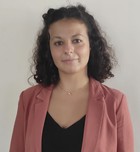
Area STEM: Ingegneria
Competenze: analisi di Big Data, matematica applicata, programmazione in Python, sviluppo di metodi matematici, sviluppo di metodi statistici, sviluppo di modelli di Machine Learning, sviluppo di piattaforme Cloud, sviluppo di strategie di Machine Learning, utilizzo di database relazionali e non, utilizzo di strumenti di Data-Visualization
Parole chiave: analisi dei dati, big data, cloud computing, Data-Driven, intelligenza artificiale, Machine Learning, Natural Language Processing
Regione: Lombardia
Funzione/Ruolo
Lead Data Scientist
Percorso professionale
Dopo la Laurea in Ingegneria Matematica e Statistica Applicata presso il Politecnico di Milano, è entrata come figura di Data Scientist in 3rdPlace, società milanese del gruppo Datrix fondata nel 2010 da ex senior manager di Google, dedicata allo Human Empowerment attraverso l’Intelligenza Artificiale. Oggi è Lead Data Scientist del team di ricerca e sviluppo di 3rdPlace con consolidata esperienza in metodi matematici e statistici, sviluppo di strategie e modelli di Machine Learning e Artificial Intelligence in ambito Big Data e Cloud computing.
Risultati scientifici
Le sue principali aree di ricerca riguardano la modellazione e l’analisi dei dati, lo sviluppo di modelli di Machine Learning e Artificial Intelligence in ogni sua sfumatura: la Computer Vision, il Natural Language Processing, il Forecasting, il Clustering.
Attività editoriali e pubblicazioni
[2021] B Talone, M Bazzarelli, A Schirato, F Dello Vicario, D Viola, E Jacchetti, M Bregonzio, MT Raimondi, G Cerullo, D Polli. Phototoxicity induced in living HeLa cells by focused femtosecond laser pulses: a data-driven approach. Biomed. Opt. Express 12, 7886-7905.
[2019] Manuela Bazzarelli, Milo Manica, Michelangelo Morganti, Daniela Casola, Giuseppe Bogliani. Studio preliminare della fenologia e del successo riproduttivo in una colonia di rondone comune (Apus apus) a Jerago con Orago (VA). DOI 10.13140/RG.2.2.32503.98727.
[2018] José Vicario, Ramon Vilanova, M Bazzarelli, Anna Paganoni, Umberto Spagnolini, Aldo Torrebruno, Miguel Prada, Antonio Morán, Manuel Dominguez, Maria João Pereira, Paulo Alves, Michal Podpora, Marian Barbu. Data mining tool for academic data exploitation: Selection of most suitable algorithms. ERASMUS+ KA2/KA203
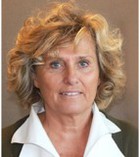
Funzione/Ruolo
Segretario scientifico dell'Istituto di Ricerche Farmacologiche IRCCS Mario Negri e Coordinatrice delle Ricerche delle sedi di Bergamo e Ranica (BG) Bergamo.
Percorso professionale
Dopo la Laurea in Scienze Biologiche all'Università degli Studi di Milano, consegue il Dottorato di Ricerca presso l'Università di Maastricht in Olanda.Trascorre periodi di formazione all'estero, presso il Centre Regional de Transfusion Sanguigne di Strasburgo, il Guy's Hospital a Londra, il Brigham and Women's Hospital a Boston. Il suo gruppo di ricerca si sta attualmente occupando di medicina rigenerativa con l'obiettivo di studiare se le cellule staminali possano curare le malattie renali acute e croniche e di capire come il rene sia capace di rigenerarsi.
Risultati scientifici
I suoi interessi di ricerca riguardano la comprensione delle cause dello sviluppo di malattie renali e i meccanismi di progressione del danno che porta alla perdita della funzionalità del rene. Nel campo del rigetto del trapianto è stata tra i primi a utilizzare con successo la terapia genica con vettori virali per prevenire il rigetto del trapianto di organo solido senza ricorrere a farmaci antirigetto. Dal 2007 al 2012 collabora con l'Organizzazione Mondiale della Sanità per un progetto multicentrico internazionale sui fattori angiogenici come causa di gestosi, malattia della gravidanza. Nel 2007 riceve l'incarico di "Senior Fellow in Obstetric Medicine" presso l'Università di Oxford, Nuffield Department of Obstetrics & Gynaecology. E' stata membro della Visiting Committee di AERES (Agence d'Évaluation de la Recherche et de l'Enseignement Supèrieur) per la valutazione dei ricercatori all'Hopital Necker di Parigi. Ha fatto parte del Comitato Scientifico per la realizzazione dei più importanti meeting internazionali di nefrologia (Word Congress of Nephrology, WCN 2015, Capetown, Sudafrica e American Society of Nephrology ASN 2016 Meeting, Chicago, USA).
Attività editoriali e pubblicazioni
Ariela Benigni ha fatto parte di comitati editoriali di riviste scientifiche internazionali: Associate Editor di Kidney International, Journal of Nephrology, International Journal of Artificial Organs, e anche Academic Editor di Expert Opinion on Therapeutic Patents, PeerJ, PLoS One. Da gennaio 2015 è Editor in Chief della rivista Nephron. Dal 2017 al 2019 è stata membro della Commissione “Innovation and Discovery Task Force” dell’American Society of Nephrology.
È attualmente membro della Commissione esaminatrice di progetti di grande innovazione per la Dutch Kidney Foundation.
È autrice di oltre 320 pubblicazioni scientifiche su riviste internazionali, tra cui:
(2016) Gagliardini E, Novelli R, Corna D, Zoja C, Ruggiero B, Benigni A, Remuzzi G. B7-1 is not induced in podocytes of human and experimental diabetic nephropathy. Journal of American Society of Nephrology, 27:999-1005.
(2015) Morigi M, Perico L, Rota C, Longaretti L, Conti S, Rottoli D, Novelli R, Remuzzi G, Benigni A, Sirtuin 3-dependent mitochondrial dynamic improvements protect against acute kidney injury. The Journal of Clinical Investigation, 125:715-726.
(2015) Trionfini P, Benigni A, Remuzzi G, MicroRNAs in kidney physiology and disease. Nature Reviews Nephrology, 11:23-33.
(2014) Benigni A, Gagliardini E, Remuzzi G, Abatacept in B7-1-positive proteinuric kidney disease. The New England Journal of Medicine, 370:1261-1263.
(2013) Parvanova A, van der Meer IM, Iliev I, Perna A, Gaspari F, Trevisan R, Bossi A, Remuzzi G, Benigni A, Ruggenenti P; for the Daglutril in Diabetic Nephropathy Study Group. Effect on blood pressure of combined inhibition of endothelin-converting enzyme and neutral endopeptidase with daglutril in patients with type 2 diabetes who have albuminuria: a randomised, crossover, double-blind, placebo-controlled trial. Lancet Diabetes Endocrinol, 1:19-27.
(2013) Remuzzi G, Benigni A, Finkelstein FO, Grunfeld JP, Joly D, Katz I, Liu ZH, Miyata T, Perico N, Rodriguez-Iturbe B, Antiga L, Schaefer F, Schieppati A, Schrier RW, Tonelli M, Kidney failure: aims for the next 10 years and barriers to success. Lancet, 382:353-362.
(2011) Mele C, Iatropoulos P, Donadelli R, Calabria A, Maranta R, Cassis P, Buelli S, Tomasoni S, Piras R, Krendel M, Bettoni S, Morigi M, Delledonne M, Pecoraro C, Abbate I, Capobianchi MR, Hildebrandt F, Otto E, Schaefer F, Macciardi F, Ozaltin F, Emre S, Ibsirlioglu T, Benigni A, Remuzzi G, Noris M, the PodoNet Consortium. MYO1E Mutations and Childhood Familial Focal Segmental Glomerulosclerosis. The New England Journal of Medicine, 365(4):295-306.
(2011) Benigni A, Morigi M, Rizzo P, Gagliardini E, Rota C, Abbate, M Ghezzi S, Remuzzi A, Remuzzi G. Inhibiting angiotensin-converting enzyme promotes renal repair by limiting progenitor cell proliferation and restoring the glomerular architecture. American Journal Of Pathology, 179(2):628-38.
(2010) Benigni A, Morigi M, Remuzzi G. Kidney regeneration. Lancet, 375(9722):1310-7.
(2009) Benigni A, Corna D, Zoja C, Sonzogni A, Latini R, Salio M, Conti S, Rottoli D, Longaretti L, Cassis P, Morigi M, Coffman TM, Remuzzi G. Disruption of the Ang II type 1 receptor promotes longevity in mice. The Journal of Clinical Investigation, 119(3):524-30.
Riconoscimenti e premi
Nel 2012 ha ottenuto la Benemerenza della città di Bergamo per i suoi studi in campo scientifico.
Nel 2019 le sono stati assegnati il Premio Internazionale “Tomoh Masaki” e il Premio internazionale “Trotula 2019” dell’Università Nuova Scuola Medica Salernitana
Nel 2020 le è stato consegnato il “Premio A.R.M.R 2020” dalla Fondazione Aiuti per la Ricerca sulle Malattie Rare.
Nel 2021 è stata insignita dal Presidente della Repubblica Sergio Mattarella dell’onorificenza di Cavaliere Ordine al Merito della Repubblica Italiana.

Funzione/Ruolo
Professoressa Associata di Algebra all'Università di Trento. Segretaria Unione Matematica Italiana.
Percorso professionale
Alessandra Bernardi inizia il suo percorso professionale conseguendo la laurea in Matematica presso l'Università di Bologna nel 2001. Subito dopo, prosegue gli studi dottorali presso l'Università degli Studi di Milano, dove ottiene il PhD in Matematica nel 2005. Durante il dottorato, si focalizza sulle varietà che parametrizzano le forme e le loro varietà secanti, sotto la guida del Prof. A. Gimigliano.
Dopo il dottorato, intraprende un percorso di ricerca internazionale che la vede ricoprire il ruolo di Assegno di ricerca presso l'Università di Bologna fino al 2009, e successivamente come Post Doctoral Researcher presso il CIRM - Fondazione Bruno Kessler a Trento. La sua carriera prosegue all'estero come Individual Marie Curie Fellow (Post Doc) presso l'INRIA Sophia Antipolis - Méditerranée in Francia dal 2010 al 2012, dove si dedica allo studio della decomposizione di tensori strutturati.
Rientrata in Italia, assume la posizione di Ricercatrice (RTD a) presso l'Università di Torino nel 2012, per poi passare a Ricercatrice (RTD b) presso l'Università di Bologna fino al 2016. In questi anni, Alessandra sviluppa ulteriormente la sua ricerca nell'algebra multilineare e nella geometria algebrica, con particolare attenzione alle applicazioni della decomposizione di tensori e varietà secanti.
Nel 2016, Alessandra Bernardi diventa Professoressa Associata presso l'Università di Trento, dove attualmente svolge la sua attività didattica e di ricerca.
Parallelamente alla sua attività di ricercatrice e docente, coordina progetti di ricerca di rilevanza internazionale e italiana, tra cui spiccano il progetto TENORS finanziato dalla Comunità Europea (Horizon 2020) e un progetto PRIN finanziato dal MUR. È inoltre attiva in numerose società matematiche tra cui l’Unione Matematica Italiana in cui ricopre il ruolo di Segretaria, comitati scientifici e comitati editoriali di riviste internazionali (SIMAX, Open Mathematics), contribuendo significativamente al progresso della ricerca matematica a livello globale.
Alessandra Bernardi si distingue per il suo impegno nella divulgazione scientifica e nella terza missione, organizzando eventi, laboratori e conferenze per avvicinare il pubblico alla matematica. La sua ricerca si concentra principalmente sulla decomposizione dei tensori, la geometria algebrica e le loro applicazioni in diversi campi, testimoniando il suo ruolo di leader nel suo campo di studi. Ha fondato il laboratorio TensorDec a Trento che si propone come destinatario privilegiato per attività sia di ricerca che di formazione, con l'obiettivo di connettere studenti di master e laurea ai diversi aspetti del tema delle decomposizioni di tensori.
Risultati scientifici
Nel corso della sua carriera, Alessandra Bernardi ha contribuito a diversi ambiti della matematica, con risultati scientifici che spaziano dall’algebra commutativa, la geometria algebrica alla decomposizione dei tensori, influenzando sia la ricerca teorica che le applicazioni pratiche.
All'inizio della sua carriera, dopo aver conseguito il dottorato presso l'Università degli Studi di Milano nel 2005, Bernardi si è dedicata allo studio delle varietà che parametrizzano forme e le loro varietà secanti. Questo periodo ha segnato l'inizio del suo interesse per le applicazioni della geometria algebrica nella decomposizione di tensori, un campo che diventerà centrale nella sua ricerca.
Successivamente, durante il suo periodo come Marie Curie Fellow presso l'INRIA Sophia Antipolis - Méditerranée in Francia, Bernardi ha approfondito lo studio della decomposizione di tensori strutturati, esplorando questioni computazionali e teoriche. La sua ricerca in questo periodo ha contribuito a stabilire connessioni fondamentali tra l'algebra multilineare, la geometria algebrica e la teoria della complessità, affrontando problemi computazionali nella ricerca pratica delle decomposizioni tensoriali.
Le sue ricerche hanno trovato applicazioni pratiche in numerosi campi, dalla fisica quantistica, l’ecologia, alla bioinformatica, dimostrando come i tensori e le loro decomposizioni siano strumenti potenti per l'analisi e l'elaborazione dei dati. La vasta gamma di applicazioni dei suoi studi evidenzia l'importanza trasversale della decomposizione dei tensori nei problemi del mondo reale, dai sistemi di telecomunicazioni all'elaborazione delle immagini, fino alla comprensione di complessi sistemi biologici.
Attività editoriali e pubblicazioni
Dal 2017, Alessandra Bernardi ha assunto il ruolo di Editor per il SIAM Journal on Matrix Analysis and Applications (SIMAX), una rivista di primaria importanza nel campo dell'analisi matriciale e delle sue applicazioni.
Nel 2019, ha ricoperto il ruolo di Guest Editor per il volume Quantum Physics and Geometry della serie Lecture Notes of the Unione Matematica Italiana (UMILN volume 25), dimostrando il suo interesse e la sua competenza anche nei legami interdisciplinari tra matematica e fisica quantistica.
Nello stesso anno, è stata anche Guest Editor per un numero speciale di JSC (Journal of Symbolic Computation) successivo a MEGA 2019, confermando il suo impegno nell'editoria legata ai metodi effettivi in geometria algebrica e nel calcolo simbolico.
Dal 2021, Alessandra Bernardi ha ricoperto la carica di Direttore Responsabile del Notiziario UMI (Unione Matematica Italiana), svolgendo un ruolo chiave nella divulgazione scientifica e nella comunicazione all'interno della comunità matematica italiana.
A partire da febbraio 2024, ha assunto il ruolo di Editor per Open Mathematics.
L'elenco completo delle sue pubblicazioni è disponibile online, al link: https://orcid.org/0000-0002-6948-1274
Riconoscimenti e premi
Editor Top Pick tra tutti gli articoli del 2021 nel Bollettino dell'Unione Matematica Italiana per il lavoro "High order singular value decomposition for plant diversity estimation" insieme a Martina Iannacito e Duccio Rocchini.
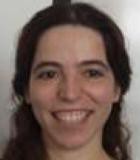
Area STEM: Matematica
Competenze: matematica applicata, meccanica statistica
Parole chiave: applicazioni a reti neuronali, entropia, geometria delle reti, modelli di non-equilibrio, multilayer networks, networks, percolazione, reti complesse, reti molecolari della cellula, sistemi complessi, social networks
Regione: ESTERO
Funzione/Ruolo
Professoressa associata di Matematica Applicata alla Queen Mary University of London, UK e Direttrice del master in Network Science presso la stessa università
Percorso professionale
Dopo la laurea in Fisica nel 1998 all'Università La Sapienza di Roma, nel 2002 ottiene il dottorato in Fisica alla Notre Dame University, Indiana, USA. Nell'anno 2002-2003 conduce attività di ricerca presso l'Université de Fribourg in Svizzera e nel periodo dal 2003 al 2009 lavora presso l'International Institute For Theoretical Physics (ICTP) di Trieste. Nel 2009 vince un posto da assistant professor al dipartimento di Fisica della Northeastern University of Boston, USA. Nel 2013 si sposta al dipartimento di Scienze Matematiche della Queen Mary University of London dove consegue il titolo di professoressa associata nel 2015. Dal 2014 è direttrice del master in Network Science della Queen Mary University of London.
Risultati scientifici
L'attività di ricerca di Ginestra Bianconi si svolge nel campo della teoria delle reti e dei sistemi complessi e risponde alla necessità di sviluppare nuovi approcci teorici alla frontiera tra la matematica applicata e la fisica statistica. Tra i risultati più rilevanti citiamo il modello Bianconi-Barabasi che spiega l'evoluzione di network come Internet e il World Wide Web tramite un parallelo con la Bose-Einstein condensation, fenomeno quantistico delle particelle di Bose, e i lavori sull'entropia delle reti che sono rilevanti per molteplici problemi di inferenza. Le reti complesse descrivono sistemi complessi caratterizzati da una ricca struttura di interazioni e sono strutture formate esclusivamente da nodi (che rappresentano gli elementi del sistema complesso) e archi (che descrivono le interazioni esistenti tra coppie di nodi). Gli esempi di reti complesse sono molteplici e includono il cervello, e le reti biologiche della cellula, arrivando fino ai network sociali e alle infrastrutture interdipendenti. Recentemente la ricerca di Ginestra Bianconi è incentrata sui multilayer networks, che descrivono reti formate da più reti interagenti e sulla geometria dei network. In questo contesto sviluppa modelli di robustezza, evoluzione, controllo e inferenza. Ginestra Bianconi conduce inoltre attività di ricerca con collaborazioni interdisciplinari in neuroscienze, bioinformatics e reti economiche.
Attività editoriali e pubblicazioni
Ginestra Bianconi è responsabile editoriale di numerose riviste scientifiche tra cui Nature Scientific Reports e Annals of Physics. È inoltre autrice di più di 100 pubblicazioni, tra cui:
(2018) Bianconi, G, Multilayer Networks: Structure and Function (Oxford University Press)
(2014) Bianconi G, Dorogovtsev SN. Multiple percolation transitions in a configuration model of a network of networks. Physical Review E, 89(6):062814.
(2014) Menichetti G, Dall'Asta L, Bianconi G. Network controllability is determined by the density of low in-degree and out-degree nodes. Physical review letters, 113(7): 078701.
(2014) Boccaletti S, Bianconi G, Criado R, Del Genio CI, Gómez-Gardenes J, Romance M, Sendina-Nadal I, Wang Z, Zanin M. The structure and dynamics of multilayer networks. Physics Reports, 544(1):1-122.
(2013) Bianconi G. Statistical mechanics of multiplex networks: Entropy and overlap. Physical Review E, 87(6):062806.
(2010) Stehlé J, Barrat A, Ginestra Bianconi G. Dynamical and bursty interactions in social networks. Physical review E, 81(3): 035101.
(2009) Bianconi G, Pin P, Marsili M. Assessing the relevance of node features for network structure. Proceedings of the National Academy of Sciences, 106(28):11433-11438.
(2009) Kartik A, Bianconi G. Entropy measures for networks: Toward an information theory of complex topologies. Physical Review E, 80(4):045102.
(2007) Bianconi G. The entropy of randomized network ensembles. Europhysics Letters, 81(2): 28005.
(2001) Bianconi G, Barabási A-L. Competition and multiscaling in evolving networks. Europhysics Letter, 54(4):436.
(2001) Bianconi G, Ginestra, Barabási A-L. Bose-Einstein condensation in complex networks. Physical review letters, 86(24):5632.
Riconoscimenti e premi
Ginestra Bianconi fa parte della Network Science Society, della European Complex Systems Society, della London Mathematical Society e della European Women in Mathematics Society.

Funzione/Ruolo
Professoressa ordinaria di Anestesiologia all’Università degli Studi di Parma e Direttrice UOC (Unità Operativa Complessa) presso l'Azienda Ospedaliera-Universitaria di Parma.
Percorso professionale
Laureata nel 2000 in Medicina e Chirurgia presso l’Università Statale di Milano, consegue il diploma di Specializzazione in Anestesia e Rianimazione presso l’Università Vita-Salute San Raffaele nel 2004. Nello stesso anno inizia la carriera di Dirigente Medica presso il Dipartimento di Anestesia e Terapia Intensiva Cardiochirurgica dell’Ospedale San Raffaele di Milano divenendo, nel 2017, direttrice UOC (Unità Operativa Complessa) presso l'Azienda Ospedaliera-Universitaria di Parma.
All’attività clinica affianca quella accademica e di ricerca: nel 2007 è docente nel corso teorico-pratico "La cardio-protezione" e inizia l’attività di correlatrice per le tesi di laurea e di specializzazione. Dal 2011 è professoressa a contratto all’Università Vita-Salute San Raffaele: alla Scuola di Specializzazione Anestesia e Rianimazione e alla Scuola di Specializzazione in Cardiochirurgia. Nel gennaio 2014 consegue l’abilitazione scientifica nazionale, come Professoressa di seconda fascia e, nel marzo 2017, l’abilitazione per la prima fascia. Nel dicembre dello stesso anno diviene professoressa ordinaria di Anestesiologia presso l’Università degli Studi di Parma.
Risultati scientifici
L’attività di ricerca di Elena Bignami si concentra soprattutto nell’ambito della Cardio-anestesia, indagando i fattori che possono influenzare l’outcome del paziente sottoposto a cardiochirurgia, in particolare la protezione renale, cardiaca e respiratoria. Nel corso della sua carriera, che da sempre affianca l’attività clinica a quella accademica, ha partecipato a numerosi progetti internazionali, fra cui: The effect of isoflurane on myocardial infarction and mortality in cardiac and non-cardiac surgery. A metanalysis of randomized controlled studies (2008), Use of halogenated anaesthetics in cardiac surgery (2012), Ruolo della Ouabaina Endogena come marcatore di danno renale in chirurgia cardiaca e vascolare (2015), CPBVent (Mechanical Ventilation during cardiac surgery) multicenter randomized controlled trial (2015), Expiratory flow limitation and mechanical ventilation during cardiopulmonary bypass in cardiac surgery (2016), Driving Pressure And EFL in Adult Cardiac Surgery (2017).
Attività editoriali e pubblicazioni
Elena Bignami ha contribuito alla realizzazione dei seguenti manuali di anestesia e terapia Intensiva:
Kirby, Taylor, Civetta (eds), Manuale di Terapia Intensiva, edizione italiana a cura di G. Torri, Delfino Editore, Roma, 2002; Chiesa, Melissano, Zangrillo (eds), Thoraco-Abdominal Aorta Surgical and Anesthetic Management, Springer, 2010; De Gaudio, Romagnoli (eds), Neuromuscolar Blocking Agents, Springer, 2017.
È autrice di più di 150 pubblicazioni scientifiche su riviste nazionali ed internazionali fra cui:
(2016) Bignami E, Guarnieri M, Saglietti F, Belletti A, Trumello C, Giambuzzi I, Monaco F, Alfieri O. Mechanical ventilation during cardiopulmonary bypass. Journal of cardiothoracic and vascular anesthesia, 30(6):1668-1675.
(2013) Bignami E, Casamassima N, Frati E, Lanzani C, Corno L, Alfieri O, Gottlieb S, Simonini M, Shah KB, Mizzi A, Messaggio E, Zangrillo A, Ferrandi M, Ferrari P, Bianchi G, Hamlyn JM, Manunta P. Preoperative endogenous ouabain predicts acute kidney injury in cardiac surgery patients. Critical care medicine, 41(3) 744.
(2010) Bignami E, Landoni G, Biondi-Zoccai, Boroli F, Messina M, Dedola E, Nobile L, Buratti L, Sheiban I, Zangrillo A. Epidural analgesia improves outcome in cardiac surgery: a meta-analysis of randomized controlled trials. Journal of cardiothoracic and vascular anesthesia, 24(4): 586-597.
(2009) Bignami E, Biondi-Zoccai G, Landoni G , Fochi O, Testa V, Sheiban Im Giunta F, Zangrillo A. Volatile anesthetics reduce mortality in cardiac surgery. Journal of cardiothoracic and vascular anesthesia, 23(5): 594-599.
(2007) Landoni G, Biondi Zoccani G, Zangrillo A, Bignami E, D’Avolio S, Marchetti C, Calabrò MG, Fochi O, Guarracino F, Tritapepe L, De Hert, S, Torri G, Desflurane and sevoflurane in cardiac surgery: a meta-analysis of randomized clinical trials. Journal of cardiothoracic and vascular anesthesia, 21(4): 502-511.
Riconoscimenti e premi
Nel dicembre 2017, è stata insignita del premio “Mimmo Mileto e Salvatore Filocamo” alla ricerca e all'innovazione scientifica. Nel 2015 ha vinto, come Principal Investigator, l’ESA Research Project Grant in 2016, con il progetto “VENTilation during CardioPulmonary Bypass (CPBVENT 2014) for cardiac surgery: a multicenter randomized controlled trial (N° clinical trials NCT 02090205)”.
Il progetto “The effect of isoflurane on myocardial infarction and mortality in cardiac and non-cardiac surgery. A metanalysis of randomized controlled studies" di cui è stata Principal Investigator è risultato Vincitore del Bando AIFA 2008 per la ricerca indipendente sui farmaci.
Nel 2006, ha vinto il premio "Lab Avant Garde Come Fare Una Ricerca Oggi: ANESTESIA A TERAPIA INTENSIVA: COSA DOMANI?" con il progetto: "Effetto dell'emodiluizione moderata in Circolazione Extra-Corporea sull'outcome postoperatorio in pazienti cardiochirurgici".

Area STEM: Matematica
Competenze: blockchains, geometria, geometric deep learning, informatica quantistica, pari opportunità nelle STEM, robotica
Parole chiave: analisi complessa, analisi quaternionica, dinamica olomorfa, divario di genere nella scienza, donne e matematica, donne e scienza
Regione: Emilia-Romagna
Funzione/Ruolo
Professoressa ordinaria di geometria all'Università degli Studi di Ferrara
Percorso professionale
Cinzia Bisi consegue la laurea in matematica all’Università di Modena nel 1995, trascorre l’ anno 1996 come borsista pre-doc presso l’ Indam a Roma e consegue il Dottorato di Ricerca presso l’ Università di Firenze nel 2001. Dopo alcuni anni di post-doc all’ Università di Parigi VI-VII, ricopre il ruolo di ricercatrice universitaria in Geometria all’ Università della Calabria dal 2005 al 2010, per poi trasferirsi nello stesso ruolo all’Università di Ferrara. Nel 2016 diviene professoressa associata in Geometria presso l’Università di Ferrara, per diventare professoressa ordinaria nel 2021 presso lo stesso ateneo. Parallelamente alla sua attività di ricercatrice e professoressa, nel periodo 2012-2014 entra come membro nel Senato Accademico dell’ Università di Ferrara, dal 2016 al 2021 è Delegata del Rettore dell’ Università di Ferrara per l’ Internazionalizzazione. Dal 2012 al 2014 è rappresentante del Dipartimento di Matematica ed Informatica nel Consiglio della Ricerca di Ateneo, e dal 2022 al 2026 è rappresentante del suo Dipartimento al Consiglio della Ricerca e Terza Missione di Ateneo. Dal 2024 al 2027 è membro del Nucleo di Valutazione dell’ Università della Magna Grecia. Dal 2024 al 2026 è membro GEV area CUN 1 di Anvur per la VQR 20-24, la valutazione della ricerca universitaria italiana.
Risultati scientifici
L’attività scientifica di Cinzia Bisi riguarda principalmente lo studio della dinamica olomorfa e degli automorfismi di varietà complesse, cui si aggiungono negli anni più recenti la geometria e l’analisi quaternionica ed ottonionica, che divengono poi centrali nella sua ricerca. Nell’ultimissimo periodo c’e’ stato poi un crescente interesse nelle applicazioni della geometria quaternionica al geometric deep learning, alla robotica ed al quantum computing. Cinzia Bisi si occupa anche di tematiche di genere in ambito STEM; di didattica della matematica, con particolare attenzione alle tecnologie digitali.
Attività editoriali e pubblicazioni
Ha scritto vari libri di testo di livello universitario :
(Bisi e Fioresi) Mathematical Methods for Life Sciences, Taylor and Francis, 2024
(Bisi e Fioresi) Metodi matematici per le scienze applicate, CEA-Zanichelli, 2022
(Bellisardi, Bisi e Fioresi) Esercizi risolti di metodi matematici per la scienze applicate, CEA-Zanichelli, 2024
Ha fatto curatele di svariati altri libri.
Dal 2021 è Editor degli Annali dell’ Università degli Studi di Ferrara-Sezione di Matematica, una rivista internazionale.
Dal 2019 al 2023 è stata Editor di Experimental Results, una rivista della Cambridge University Press.
È anche autrice di numerosi articoli scientifici pubblicati su riviste internazionali consultabili al sito: https://docente.unife.it/cinzia.bisi/pubblicazioni.
Riconoscimenti e premi
Nel periodo 2012-2014 è membro del Senato Accademico dell’Università di Ferrara, dal 2016 al 2021 è Delegata del Rettore dell’Università di Ferrara per l’Internazionalizzazione. Dal 2012 al 2014 è rappresentante del Dipartimento di Matematica ed Informatica nel Consiglio della Ricerca di Ateneo, e dal 2022 al 2026 è rappresentante del suo Dipartimento al Consiglio della Ricerca e Terza Missione di Ateneo. Dal 2024 al 2027 è membro del Nucleo di Valutazione dell’ Università della Magna Grecia. Dal 2024 al 2026 è membro GEV - Area 1 di Anvur per la VQR 2020-2024. Dal 2023 al 2025 è membro del Consiglio di Amministrazione del Conservatorio Frescobaldi di Ferrara.
Fa parte delle società scientifiche European Women in Mathematics e European Mathematical Society, dell’ Unione Matematica Italiana. E’ organizzatrice ed “invited speaker” di molte conferenze internazionali. Ha vinto diversi fondi europei e Pnrr. Organizza spesso eventi sull’uguaglianza di genere nelle STEM.
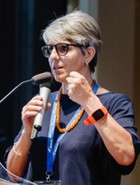
Funzione/Ruolo
Professoressa associata di Chimica al Politecnico di Torino dove è Referente per la task force Batteries@Polito
Percorso professionale
Dopo la laurea in Chimica presso l’Università di Torino e il Dottorato di Ricerca in Ingegneria Materiali presso il Politecnico di Milano, nel 1995 diventa Ricercatrice Universitaria in Fondamenti Chimici per la Tecnologia e poi nel 2015 Professoressa Associata nel medesimo SSD, presso il politecnico di Torino. Svolge la sua attività nel Dipartimento di Scienza Applicata e Tecnologia del Politecnico di Torino dove coordina un gruppo di ricerca costituito da 15 giovani tra ricercatori, assegnisti di ricerca e dottorandi.
L’attività didattica è prevalentemente svolta nell’ambito dei corsi di base di chimica. Inoltre svolge numerose attività didattiche nei master sull’elettrificazione e dal prossimo anno nel nuovo corso di sistemi elettrochimici di accumulo dell’energia.
Si occupa dell’avvio del nuovo Master Europeo sull’Energy Storage.
Leader delle attività di “education” nelle iniziative europee Battery2030+ (battery2030.eu) e nell’ETIP Batteries Europe.
Dal suo avvio nel 1995, è referente per i laboratori didattici di chimica e dal 2018 è referente per i corsi di chimica del Politecnico di Torino.
E’ anche responsabile dei laboratori sull’accumulo dell’energia presso il laboratorio interdipartimentale Energy Center Lab.
Risultati scientifici
La principale attività di ricerca di Silvia Bodoardo è nel gruppo di Elettrochimica del Politecnico di Torino.
Nel corso degli anni, la sua attività si è concentrata su varie linee di ricerca nel campo della chimica fisica e in particolare dell'elettrochimica studiando e progettando in particolare nuovi materiali per diversi tipi di generatori di energia elettrochimica.
I temi principali studiati sono le caratteristiche strutturali e le proprietà elettrochimiche del biossido di manganese come sostanza attiva nelle batterie alcaline, l'accumulatore piombo-acido, i materiali degli elettrodi per celle agli ioni di litio, i materiali ad alta capacità come l'anodo per celle agli ioni di litio, i materiali ad alto potenziale come il catodo per celle agli ioni di litio, gli elettrodi e i materiali elettrolitici per le celle al litio-zolfo, gli elettrodi e i materiali elettrolitici per celle ad aria al litio, la caratterizzazione di celle industriali per batterie agli ioni di litio, i sistemi ibridi elettrochimici: alta energia / alta potenza.
Ha partecipato a numerosi progetti finanziati dalla comunità Europea (coordinatrice del progetto STABLE) e anche a progetti nazionali e regionali. Attualmente è l’unica ricercatrice italiana che partecipa alla Large Research initiative Battery2030+ (battery2030.eu) nella quale si occupa di smart batteries. Inoltre è cochair nel WG3 su Advanced Materials nella piattaforma tecnologica ETIP BatteRIes Europe. Silvia ha organizzato numerose conferenze e seminari sui materiali con applicazione elettrochimica ed è stata chair woman al lancio del Premio Horizon sulle batterie innovative.
E’ inoltre valutatrice per la comunità europea dei progetti ERC e nell’area NMP e ICT, LCBAT. Valutatrice nazionale di progetti FIRB e PRIN, per Faraday e per il consiglio delle ricerche Norvegese.
Attività editoriali e pubblicazioni
[2019] Giai Pron, Vittorio; Versaci, Daniele; Amici, Julia; Francia, Carlotta; Santarelli, Massimo; Bodoardo, Silvia, Electrochemical Characterization and Solid Electrolyte Interface Modeling of LiNi0.5Mn1.5O4-Graphite Cells, Journal of Electrochem Soc. 166(10) 2255 doi: 10.1149/2.0941910jes
[2019] Zubair, Usman; Amici, Julia; Crespiera, Sandra Martinez; Francia, Carlotta; Bodoardo, Silvia, Rational design of porous carbon matrices to enable efficient lithiated silicon sulfur full cell, Carbon doi10.1016/j.carbon.2019.01.005
[2019] J. Amici, S. Romanin, M. Alidoost, D. Versaci, C. Francia,F .Smeacetto, S. Bodoardo, UV-cured methacrylate based polymer composite electrolyte for metallic lithium batteries, Journal of Electroanalytical Chemistry, 837 (2019) 103–107. DOI:10.1016/j.jelechem.2019.02.027
[2018] J. Amici, M. Alidoost, F. Caldera, D. Versaci, U. Zubair, F. Trotta, C. Francia, S. Bodoardo, PEEK-WC / nanosponge membranes for lithium anode protection in rechargeable Li-O2 batteries, ChemElectroChem 5, 1599–1605. DOI: 10.1002/celc.201800241R1
[2018] Bodoardo, S.; Zubair, Usman; Serrapede, M.; Amici, J.; Zaccagnini, P.; Versaci, D.; Francia, C.; Pirri, C.; Lamberti, A. Dispositivo elettrochimico a commutazione automatica per l’accumulo ad alta energia e ad alta potenza P2952PC00 - PCT/IB2019/053525
[2017] U. Zubair, A. Anceschi, F. Caldera, M. Alidoost, J. Amici, C. Francia, M. Zanetti, F. Trotta, S. Bodoardo, N. Penazzi. Dual confinement of sulphur with rGO wrapped microporous carbon from ß-cyclodextrin nanosponges as a cathode material for Li-S batteries, Journal of Solid State Electrochemistry, 21(12), 3411. DOI: 10.1007/s10008-017-3664-6
[2017] D. Versaci, R. Nasi, U. Zubair, J. Amici, M. Sgroi, M.A. Dumitrescu, C. Francia, S. Bodoardo, N. Penazzi, New ecofriendly low-cost binders for Li-ion anodes, Journal of Solid State Electrochemistry, 21(12), 3429-3435. DOI: 10.1007/s10008-017-3665-5
[2016]J. Amici, M. Alidoost, C. Francia, S. Bodoardo, S. Martinez Crespiera, D. Amantia, M. Biasizzo, F. Caldera, F. Trotta O2 selective membranes based on a dextrin-nanosponge (NS) in PVDF-HFP polymer matrix for Li-Air Cells, Chem. Commun., 52, 13683—13686. DOI: 10.1039/c6cc06954a
[2001] S. Bodoardo; N. Penazzi; P. Spinelli; M. Arrabito Influence of aluminium doping on the electrochemical behaviour of manganese dioxide J. Power Sources 94(2) 194 doi: 10.1016/S0378-7753(00)00586-3
[1998] Bodoardo S.; R.Chiappetta; B. Onida; F.Figueras; E.Garrone Ammonia interaction and reaction with Al-pillared montmorillonite: an IR study Microporous and Mesoporous Materials20,187
[1997] Fubini B; Mollo L; Bodoardo S.; Onida B; Oberson D; Lafuma C. Evaluation of the surface acidity of some phillosilicates in relation to their activity toward the enzyme human leucocyte elastase Langmuir 13 919
[1995] Bodoardo S. Maja M., Penazzi N. Processes involving gases in valve-regulated lead/acid batteries. J. Power Sources 55 (2) 183 doi:10.1016/0378-7753(95)02188-M
Riconoscimenti e premi
La professoressa Bodoardo ha ricevuto numerosi inviti da parte della Comunità europea per presentare i risultati della ricerca. Ad esempio, ha partecipato alla giornata di consultazione sui temi legati alle batterie promossa dal DG Connect (10 Gennaio 2018), e ha presentato le attività sul tema litio aria durante la giornata della FET (Bruxelles, 10 gennaio 2018) ed è stata relatrice del tavolo sulla mobilità. E’ dunque stata incaricata, con Marcel Meuss, Simon Perraud e Noshin Omar di riorganizzare le nuove roadmap sulle batterie.
E’ stata inviata dal MAE (Ministero Affari Esteri) in Bolivia per un corso sui sistemi al litio dal 16 al 22 maggio 2010.
E' stata invitata a presentare lavori scientifici presso numerosi convegni internazionali.
E’ membro attivo nel comitato scientifico della Fondazione Telios.
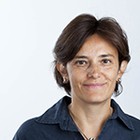
Funzione/Ruolo
Professoressa ordinaria di Sistemi di Elaborazione delle Informazioni al Politecnico di Milano, delegata del rettore per le relazioni internazionali con il Sud Est Asiatico, Vice Coordinatrice del Corso di Dottorato in Ingegneria dell'Informazione presso il Politecnico di Milano.
Percorso professionale
Dopo la laurea in Ingegneria Elettronica al Politecnico di Milano nel 1993, prosegue la sua formazione con un Dottorato di Ricerca in Ingegneria Automatica ed Informatica conseguito nel 1997. Nel 1999 è ricercatrice, nel 2003 è professoressa associata e dal 2014 è professoressa ordinaria di Sistemi di Elaborazione delle Informazioni al Politecnico di Milano. Dal 2016 è vice-coordinatrice per la sezione di informatica del Dottorato in Ingegneria dell'Informazione del Politecnico di Milano e fa parte della giunta di Dipartimento dal 2014. Dal giugno 2017 è delegata del rettore per le Relazioni internazionali con il Sud Est Asiatico.
Risultati scientifici
Il profilo scientifico di Cristiana Bolchini è duplice, avendo iniziato l’attività di ricerca nell’ambito delle architetture di calcolatori, sistemi dedicati e relative metodologie di progetto, e in seguito anche esteso i propri interessi all’area delle basi di dati con particolare riferimento alla gestione dei dati guidata dal contesto.
Più precisamente, l’attività di ricerca si è concentrata sin dall’inizio sugli aspetti di affidabilità dei sistemi di calcolo, dedicati e non, con l’obiettivo di sviluppare metodologie di progetto e di analisi di sistemi in grado di rilevare autonomamente la presenza o l’insorgere di guasti e di mitigarne gli effetti. Queste soluzioni, che in passato erano di interesse prevalentemente per ambiti particolarmente critici (come per esempio lo spazio o la salute), sono oggi particolarmente importanti, considerata la pervasività e la diffusione dei dispositivi elettronici. Per questo motivo, l’affidabilità assume un ruolo importante, insieme alle prestazioni e ai consumi, e la ricerca più recente vuole trovare soluzioni per realizzare sistemi capaci di configurarsi autonomamente e adattare i livelli di questi tre aspetti in relazione al contesto di funzionamento, alla criticità dell’ambito applicativo e ai requisiti. Questi temi sono stati al centro di un progetto di ricerca europeo coordinato da Cristiana Bolchini e conclusosi con successo nell’agosto 2016.
I consumi energetici sono anche al centro delle ricerche nell’ambito della gestione di dati, con riferimento alle problematiche di monitoraggio e controllo degli edifici, per individuare le principali fonti di consumi e per rendere gli utenti maggiormente consapevoli, tematiche di grande interesse nel contesto di una società attenta.
Attività editoriali e pubblicazioni
È co-autrice di circa 140 pubblicazioni scientifiche, tra cui:
[2017] C. Bolchini, A. Geronazzo, E. Quintarelli, Smart buildings: a monitoring and data analysis methodological framework. Elsevier Building and Environment, 121: 93-105.
[2017] M. H. Haghbayan, A. Miele, A. M. Rahmani, P. Liljeberg, A. Jantsch, C. Bolchini, H. Tenhunen, Can Dark Silicon Be Exploited to Prolong System Lifetime?. IEEE Design & Test, 34(2): 51-59.
[2017] C. Bolchini, L. Cassano, A Fully Automated and Configurable Cost-Aware Framework for Adaptive Functional Diagnosis. IEEE Design & Test 34(2): 79-86.
[2016] C. Bolchini, L. Cassano, A Novel Approach to Incremental Functional Diagnosis for Complex Electronic Boards. IEEE Trans. on Computers, 65(1): 42-52.
[2015] C. Bolchini, L. Cassano, P. Garza, E. Quintarelli, F. Salice, An Expert CAD Flow for Incremental Functional Diagnosis of Complex Electronic Boards. IEEE Trans. on Computer Aided Design of Integrated Circuits and Systems, 34(5): 835-848.
[2015] M. Ottavi, S. Pontarelli, D. Gizopoulos, C. Bolchini, M. K. Michael, L. Anghel, M. Baradaran Tahoori, A. M. Paschalis, P. Reviriego, O. Bringmann, V. Izosimov, H. A. R. Manhaeve, C. Strydis, S. Hamdioui, Dependable Multicore Architectures at Nanoscale: The View From Europe. IEEE Design & Test 32(2): 17-28.
[2014] C. Bolchini, C. Sandionigi, Design of Hardened Embedded Systems on Multi-FPGA Platforms. ACM Trans. Design Autom. Electr. Syst. 20(1): 16:1-16:26.
[2013] C. Bolchini, A. Miele, Reliability-Driven System-Level Synthesis for Mixed-Critical Embedded Systems. IEEE Trans. Computers 62(12): 2489-2502.
[2013] C. Bolchini, E. Quintarelli, L. Tanca, CARVE: Context-aware automatic view definition over relational databases. Inf. Syst. 38(1): 45-67.
[2011] C. Bolchini, A. Miele, C. Sandionigi, A Novel Design Methodology for Implementing Reliability-Aware Systems on SRAM-Based FPGAs. IEEE Trans. Computers 60(12): 1744-1758.
[2010] D. Bianchini, S. Montanelli, C. Aiello, R. Baldoni, C. Bolchini, S. Bonomi, S. Castano, T. Catarci, V. De Antonellis, A. Ferrara, M. Melchiori, E. Quintarelli, M. Scannapieco, F. A. Schreiber, L. Tanca, Emergent Semantics and Cooperation in Multi-knowledge Communities: the ESTEEM Approach. World Wide Web 13(1-2): 3-31.
[2009] C. Bolchini, C. Curino, G. Orsi, E. Quintarelli, R. Rossato, F. A. Schreiber, L. Tanca, And what can context do for data? Commun. ACM 52(11): 136-140.
Riconoscimenti e premi
Cristiana Bolchini ha ricevuto due gift Cisco University Research Program Fund of Silicon Valley Community Foundation per la sua ricerca sulla diagnosi funzionale di circuiti complessi. È stata Associate Editor per le riviste IEEE Transactions on Emerging Topics in Computing e IEEE Transactions on Computers.

Funzione/Ruolo
Professoressa Emerita di Biologia Vegetale, Università degli Studi di Torino.
Percorso professionale
Dopo aver conseguito la laurea in Scienze Biologiche all'Università di Torino nel 1970, Paola Bonfante prosegue la sua formazione con una borsa di studio presso il Centro di Studio sulla Micologia del Terreno (CSMT) del CNR di Torino. Dal 1973 è Ricercatrice del CNR, attività che svolge fino al 1985. Da quella data è Professoressa Ordinaria di Biologia Vegetale all'Università di Torino fino al 2017. Dal 1995 al 2009 è Responsabile della Sezione di Torino dell'Istituto di Protezione per le Piante del CNR. Dal 2006 al 2011 è Direttrice del Dipartimento di Biologia Vegetale dell'Università di Torino, e in seguito, fino al 2013, è Coordinatrice del corso di dottorato di ricerca in Biologia e Biotecnologia. Fino al 2017 coordina il laboratorio delle Interazioni Piante-Microorganismi. Oggi è Professoressa Emerita e unisce alla residua attività di ricerca un'intesa opera di divulgazione scientifica.
Risultati scientifici
Paola Bonfante professoressa Emerita di Biologia Vegetale all'Università di Torino ha dedicato la sua attività scientifica alle interazioni piante-microorganismi, un campo in cui è considerata una pioniera e che è rilevante sia per l'ambiente sia per le ricadute sulla società. In particolare, con il suo gruppo di ricerca si è focalizzata sin dal 1975 sullo studio della biologia delle associazioni simbiotiche e della tassonomia dei funghi, indagando le interazioni intime tra funghi e piante e tra batteri e funghi. Applicando le tecniche di indagine genetica, all'inizio degli anni Novanta ha fornito importanti contributi alla conoscenza delle micorrize (associazioni simbiotiche tra funghi del terreno e radici delle piante) presenti sia in natura sia negli agroecosistemi. Paola Bonfante ha scoperto un gruppo di endobatteri che vivono all'interno di funghi micorrizici, in un processo di simbiosi nella simbiosi, e che possono modulare alcuni dei tratti funzionali dei loro ospiti fungini. Grazie alle tecniche di Next Generation Sequencing, il suo gruppo di ricerca ha sequenziato genomi di funghi micorrizici e continua a studiare le basi cellulari e molecolari delle interazioni pianta-fungo: indagandone i determinanti genetici si propone di definirne la biodiversità e le modalità di comunicazione. Scopo ultimo della ricerca è di valutare l'impatto e l'applicazione del cosiddetto plant microbiota agli ecosistemi naturali e agricoli, alla luce delle indicazioni di sostenibilità scaturite dal New Green Deal.
Attività editoriali e pubblicazioni
Paola Bonfante è stata editor di Environmental Microbiology dal 2013 al 2022, membro dell'Editorial Board di diversi giornali scientifici internazionali come l'ISME Journal e New Phytologist. Svolge attività di revisione per Plant Cell, Plant Journal, Plant Physiology, Planta, Fungal Biology & Genetics, PNAS e per la National Science Foundation (NSF) americana ed europea. Svolge compiti di valutazione per numerose istituzioni europee e internazionali. Ha scritto un libro per il Mulino (Una Pianta non è un'isola, 2021) in cui parla dei temi scientifici che più la affascinano.
È autrice di oltre 300 pubblicazioni scientifiche internazionali, elencate su Google Scholar.
Riconoscimenti e premi
Nel 2010 Paola Bonfante riceve due prestigiosi riconoscimenti: il Premio per la Biologia Vegetale dall'Accademia dei Lincei e il premio French Food Spirit nella sezione Scienza.
Dal 2012 al 2016 è componente del Comitato scientifico del CNR; dal 2014 al 2018 del Comitato scientifico per le attività di ricerca della Provincia di Trento; dal 2020 al Consiglio Generale della Fondazione Compagnia di San Paolo.
E' socia di numerose Accademie, tra cui l'Accademia delle Scienze di Torino e l'Accademia dei Lincei, ha ricevuto premi internazionali, tra cui il Kondorosi Award (2021), ed è Commendatore della Repubblica per meriti scientifici (2019). È stata tra gli Highly Cited Researchers 2017, 2018, 2020 (Clarivate Analitcs), ed è nella lista dei Top Italian Scientist.

Funzione/Ruolo
Professoressa ordinaria di Bioingegneria Elettronica alla Scuola Universitaria Superiore IUSS di Pavia.
Percorso professionale
Laureata in Fisica nel 1991 presso l'Università degli Studi di Genova e Dottoressa di Ricerca in Bioingegneria presso il Politecnico di Milano nel 1996, dedica la sua carriera scientifica allo studio di materiali semiconduttori a base organica con i quali realizzare dispositivi e sistemi elettronici per la sensoristica, con applicazioni che vanno dal monitoraggio di segnali biomedicali con sensori indossabili, ai sensori per la genomica, ai sensori cellulari per drug testing, interfacce cervello-macchina, robotica, agricoltura di precisione. Nel 1996 diventa Ricercatrice in Elettronica presso l’Università degli Studi di Cagliari, dove successivamente diventa Professoressa Associata e poi Ordinaria di Bioingegneria Elettronica. Dal 2015 al 2017, ha ricoperto il ruolo di Prorettrice all’Innovazione e ai rapporti con il Territorio presso l’Università degli Studi di Cagliari. Dal 2014 siede nel consiglio di amministrazione del Centro Ricerche, Sviluppo, Studi Superiori in Sardegna (CRS4). Nel 2017 ne diventa Presidente, prima donna dalla fondazione (1990) a ricoprire questo ruolo che mantiene fino al 2020. Dal 2024 è Professoressa Ordinaria presso la Scuola Universitaria Superiore IUSS di Pavia.
Risultati scientifici
Dal 2001 ha lavorato alla realizzazione di dispositivi elettronici a semiconduttore organico con i quali realizzare sistemi di biomonitoraggio per il corpo umano a varia scala dimensionale (sino alla singola cellula e alla rilevazione di segnali biochimici provenienti da macromolecole biologiche). Il suo gruppo di ricerca è stato tra i primi al mondo a lavorare e pubblicare sullo sviluppo di sensori elettronici su substrati non convenzionali quali carta, plastica, tessuti. Ha realizzato e brevettato un metodo per realizzare fibre e tessuti conduttivi. A partire da questo metodo, con il suo gruppo di ricerca ha realizzato dispositivi e sistemi di biosensing indossabili che comprendono sia dispositivi integrati in indumenti sia sistemi da usare a diretto contatto con la pelle, come tatuaggi elettronici, per la rilevazione di segnali cardiaci, muscolari, e più in generali di biopotenziali generati dal corpo umano o animale. In parallelo, questi stessi sistemi possono essere impiegati per realizzare sensoristica avanzata dedicata al controllo ambientale. È autrice di 12 brevetti internazionali focalizzati sull’utilizzo di dispositivi a semiconduttore organico per il biomonitoraggio. È stata coordinatrice di diversi progetti di ricerca internazionali e nazionali in questo ambito.
Attività editoriali e pubblicazioni
Annalisa Bonfiglio è autrice di più di 200 articoli scientifici su riviste internazionali e atti di conferenze. Di seguito una selezione fra le più recenti:
[2024] G. Casula, S. Lai, E. Loi, L, Moi, P. Zavattari, A. Bonfiglio, “An innovative PCR-free approach for DNA methylation measure: An application for early colorectal cancer detection by means of an organic biosensor”, Sensors and Actuators B: Chemical, Volume 3981 January 2024 Article number 134698, DOI 10.1016/j.snb.2023.134698.
[2023] S. Lai, K. Kumpf, P.C. Ricci, P. Fruhmann, J. Bintinger, A. Bonfiglio, P. Cosseddu, “Isotropic contact patterning to improve reproducibility in organic thin-film transistors”, Organic Electronics, 122, 106887, November 2023.
[2023] A. Mascia, A. Spanu, A. Bonfiglio, P. Cosseddu “Multimodal force and temperature tactile sensor based on a short channel organic transistor with high sensitivity” Scientific Reports Open Access Volume 13, Issue 1December 2023 Article number 16232, DOI 10.1038/s41598-023-43360-y.
[2022] Andrea Spanu, Tommaso Losi, Antonello Mascia, Annalisa Bonfiglio, Mario Caironi, Piero Cosseddu, “Submicrometer-Channel Organic Transistors with MHz Operation Range on Flexible Substrates by a Low-Resolution Fabrication Technique”, Advanced Materials Technologies, 2022, doi: 10.1002/admt.202200891.
[2021] S. Lai, Y. Vlamidis, N. Mishra, P. Cosseddu, V. Mišeikis, P. C. Ricci, V. Voliani, C. Coletti, A. Bonfiglio"A flexible, transparent chemosensor integrating an inkjet-printed organic field-effect transistor and a non-covalently functionalized graphene electrode", Advanced Materials Technologies.
[2021] F.Torricelli, D. Z. Adrahtas, Z. Bao, M. Berggren, F. Biscarini, A. Bonfiglio, C. A. Bortolotti, C. D. Frisbie, E. Macchia, G. G. Malliaras , I. McCulloch, M. Moser, T.- Q. Nguyen, R. M. Owens, A. Salleo, A. Spanu and L. Torsi, “Electrolyte- gated transistors for enhanced performance bioelectronics”, Nature Reviews|Methods Primers ID (2021) 1:66, doi: s43586-021-00065-8.
[2021] A. Spanu, L. Martines, A. Bonfiglio, “Interfacing cells with organic transistors: a review of in vitro and in vivo applications”, Lab on a Chip, 2021, DOI: 10.1039/D0LC01007C.
[2021] A. Spanu, A. Botter, A. Zedda, G. L. Cerone, A. Bonfiglio, D. Pani, “Dynamic surface electromyography using stretchable screen-printed textile electrodes”, IEEE Trans Neural Syst Rehabil Eng. 2021;29:1661-1668. doi: 10.1109/TNSRE.2021.3104972.
[2020] Spanu, A., Colistra, N., Farisello, P., Friz, A., Arellano, N., Rettner, C., Bonfiglio, A., Bozano, L., Martinoia, S., "A Three-Dimensional Micro-Electrode Array for in-vitro neuronal interfacing" , Journal of Neural Engineering, in press (2020): JNE-103422.R2.
[2019] Spanu, A., Tedesco, M., Martinoia, S., Bonfiglio, A., “From MEAs to MOAs: The Next Generation of Bioelectronic Interfaces for Neuronal Cultures”, Advances in Neurobiology 22, pp. 155-167, 2019 10.1007/978-3-030-11135-9_6.
Riconoscimenti e premi
Nel 2016 è insignita del premio Itwiin come "Migliore inventrice Italiana del 2016" dall'Associazione Italiana Donne Inventrici e Innovatrici.
Nel 2017 le viene assegnato il premo Tecnovisionaria dall’Associazione Donne & Tecnologia.

Area STEM: Chimica
Competenze: caratterizzazione dei materiali, carbonatazione, eco-materiali, economia circolare, materiali sostenibili, materie prime critiche, recupero, riciclo, stabilizzazione
Parole chiave: materiali, metalli pesanti, metalli strategici, sostenibilità, transizione energetica
Regione: Lombardia
Funzione/Ruolo
Professoressa ordinaria di Fondamenti Chimici delle Tecnologie all'Università di Brescia. Responsabile della linea di ricerca sugli eco-materiali presso il laboratorio di Chimica per le Tecnologie.
Percorso professionale
Dopo la Laurea in Ingegneria Ambientale presso l'Università di Brescia, prosegue gli studi presso lo stesso ateneo con un dottorato di ricerca in Materiali per l’Ingegneria, concentrandosi prevalentemente sulla caratterizzazione dei materiali e avanzate tecniche di caratterizzazione a raggi X. Durante il dottorato, lavora a Grenoble (Francia), presso il "Laboratoire de Crystallographie", nel gruppo del professor Raoux. Dal 2011 è professoressa ordinaria di Fondamenti Chimici delle Tecnologie presso l’università degli Studi di Brescia.
Risultati scientifici
Elza Bontempi è stata tra il 2017 e 2020 TOP WORLD RESEARCHER (dato SciVal) per la ricerca nell'ambito dell'incenerimento dei rifiuti, dei rifiuti solidi urbani e della carbonatazione.
Dal 2021 è nella lista del Top 2% World Scientists, prodotta dalla Stanford University. È stata responsabile di diversi progetti di ricerca nazionali ed internazionali, sviluppando nuove tecnologie e nuovi materiali sostenibili, provenienti da rifiuti e sotto-prodotti. La sua attività scientifica negli ultimi anni si è rivolta al recupero di materie prime critiche in ambito di economia circolare, come per esempio il litio e cobalto, da batterie esauste. È autrice di diversi brevetti in ambito di recupero di materiali ed ha vinto diversi premi. È inserita nella lista dei Top Italian Scientist (https://topitalianscientists.org/) in ambito di scienze naturali e ambientali.
Attività editoriali e pubblicazioni
Elza Bontempi è autrice di numerose pubblicazioni, fra cui:
[2023] Ducoli, S., Zacco, A., Valentim, B., Zanoletti, A., Ye, G., Mousa, E., Bontempi, E.
ESCAPE simplified approach designed to evaluate materials sustainability: The case of new adsorbent materials for activated carbon substitution, Sustainable Materials and Technologies, 38, art. no. e00709.
[2023] Fahimi, A., Alessandri, I., Cornelio, A., Frontera, P., Malara, A., Mousa, E., Ye, G., Valentim, B., Bontempi, E. A microwave-enhanced method able to substitute traditional pyrometallurgy for the future of metals supply from spent lithium-ion batteries, Resources, Conservation and Recycling, 194, art. no. 106989.
[2023]Sorrentino, G.P., Zanoletti, A., Ducoli, S., Zacco, A., Iora, P., Invernizzi, C.M., Di Marcoberardino, G., Depero, L.E., Bontempi, E. Accelerated and natural carbonation of a municipal solid waste incineration (MSWI) fly ash mixture: Basic strategies for higher carbon dioxide sequestration and reliable mass quantification, Environmental Research, 217, art. no. 114805.
[2022]Fiameni, L., Fahimi, A., Federici, S., Cornelio, A., Depero, L.E., Bontempi, E.
A new breakthrough in the P recovery from sewage sludge ash by thermochemical processes, Green Chemistry, 24 (18), pp. 6836-6839.
[2022] Fahimi, A., Ducoli, S., Federici, S., Ye, G., Mousa, E., Frontera, P., Bontempi, E.
Evaluation of the sustainability of technologies to recycle spent lithium-ion batteries, based on embodied energy and carbon footprint, Journal of Cleaner Production, 338, art. no. 130493.
[2022] Bontempi, E. A global assessment of COVID-19 diffusion based on a single indicator: Some considerations about air pollution and COVID-19 spread, Environmental Research, 204, art. no. 112098.
[2021] Zanoletti, A., Cornelio, A., Bontempi, E. A post-pandemic sustainable scenario: What actions can be pursued to increase the raw materials availability?, Environmental Research, 202, art. no. 111681.
[2021] Fahimi, A., Federici, S., Depero, L.E., Valentim, B., Vassura, I., Ceruti, F., Cutaia, L., Bontempi, E. Evaluation of the sustainability of technologies to recover phosphorus from sewage sludge ash based on embodied energy and CO2 footprint, Journal of Cleaner Production, 289, art. no. 125762.
[2020] Assi, A., Bilo, F., Federici, S., Zacco, A., Depero, L.E., Bontempi, E.
Bottom ash derived from municipal solid waste and sewage sludge co-incineration: First results about characterization and reuse, Waste Management, 116, pp. 147-156.
[2020] Assi, A., Bilo, F., Zanoletti, A., Ponti, J., Valsesia, A., La Spina, R., Zacco, A., Bontempi, E.Zero-waste approach in municipal solid waste incineration: Reuse of bottom ash to stabilize fly ash, Journal of Cleaner Production, 245, art. no. 118779.
[2018] Bilo, F., Pandini, S., Sartore, L., Depero, L.E., Gargiulo, G., Bonassi, A., Federici, S., Bontempi, E. A sustainable bioplastic obtained from rice straw, Journal of Cleaner Production, 200, pp. 357-368.
[2017] Bontempi, E. A new approach for evaluating the sustainability of raw materials substitution based on embodied energy and the CO2 footprint, Journal of Cleaner Production, 162, pp. 162-169.
La lista completa è disponibile sul sito OPENBS Iiris dell'Università di Brescia.
Riconoscimenti e premi
Vincitrice del premio europeo: EIT Raw Materials Business Ideas Competition, in collaborazione con Velaworks (dicembre 2016).
Vincitrice del premio nazionale nell’ambito della tematica “Tecnologie abilitanti e soluzione innovative per la città sostenibile” assegnato da Associazione Italiana per la Ricerca Industriale (AIRI) nel maggio 2018.
Vincitrice del premio nazionale Gaetano Marzotto (novembre 2018)
Vincitrice del premio nazionale ITWIIN (ITalian Women Innovators and Inventors Network) come innovatrice (novembre 2018)
Vincitrice del premio nazionale “Innovation Village Award” istituito da Innovation Village e da ASviS – Alleanza Italiana per lo Sviluppo Sostenibile (aprile 2019).
Vincitrice del ENERGY GLOBE AWARD nazionale (luglio 2020).
Vincitrice del premio “European Business Idea Competition on raw materials” from European Institute of Innovation & Technology (EIT) Raw Materials, per una nuova tecnologia di recupero di materie prima da rifiuti (febbraio 2022).
Vincitrice del premio 2031 (ex Gaetano Marzotto) (novembre 2023).
Vincitrice dell’Intellectual Property Award nell’ambito Climatech (premio per l'imprenditoria femminile) per il brevetto innovativo “Metodo di recupero di materiali da rifiuti o scarti tramite processo carbotermico migliorato” (novembre 2024).

Funzione/Ruolo
Professoressa di Fisica Sperimentale delle Particelle presso la Oxford University
Percorso professionale
Dopo la laurea in Fisica presso l'Università degli Studi di Pavia nel 1982, prosegue la sua formazione attraverso un dottorato di ricerca in Fisica conseguito nel 1987 alla Syracuse University, New York. Prosegue la sua carriera accademica e nel 1989 diventa docente alla Purdue University in Indiana dove nel 2009 è nominata E. M. Purcell Distinguished Professor of Physics. Dal 2013 è docente della University di Oxford.
Risultati scientifici
Daniela Bortoletto ha partecipato a molte importanti scoperte nel campo della fisica delle particelle elementari. La sua attività di ricerca inizia alla Università di Cornell dove dal 1984 al 1989 si dedica allo studio del b-quark con CLEO. Dal 1991 al 2010 partecipa all'esperimento CDF (Collider Detector at Formilab) al Fermilab, dove contribuisce alla scoperta del top quark, alle prime misure delle sue proprietà, e alla ricerca del bosone di Higgs al Tevatron, la macchina acceleratrice che in quegli anni raggiungeva la più alta energia al mondo di collisione dei fasci. Il suo gruppo collabora alla costruzione del rivelatore al silicio di CDF. Nel 1996, comincia a partecipare all'esperimento CMS (Compact Muon Selenoid) al CERN, in cui ha un ruolo importante nella costruzione del rivelatore a pixels. Dopo l'istallazione di questo rivelatore nel 2008, si dedica alla ricerca del bosone di Higgs con la macchina acceleratrice LHC. Dal 2007 al 2014, coordina le attività di tutte le università americane in CMS per organizzare l'upgrade del rivelatore. Nel 2014, lascia CMS ed entra a far parte di ATLAS, dove continua lo studio delle proprietà del bosone di Higgs e la ricerca di altre particelle scalari. Partecipa inoltre all'upgrade del rivelatore ATLAS, necessario quando il numero di collisioni tra i protoni nella macchina LHC sarà incrementato nel 2024.
Attività editoriali e pubblicazioni
Editor di Nuclear Instrument and Methods. Autrice di oltre 1500 pubblicazioni, tra cui:
(2015) Bortoletto D, How and why silicon sensors are becoming more and more intelligent?. Journal of Instrumentation, 10(08).
(2015) Khachatryan V, Mousa J, Tumasyan A, Bortoletto D, et al. Search for dark matter, extra dimensions, and unparticles in monojet events in proton-proton collisions at √s = 8 TeV. European Physical Journal C, 75(5):235.
(2015) Khachatryan V, Mousa J, Tumasyan A, Bortoletto D, et al. Search for physics beyond the standard model in final states with a lepton and missing transverse energy in proton-proton collisions at √s = 8 TeV, Physical Review D, 91(9).
(2015) Khachatryan V, Mousa J, Tumasyan A, Bortoletto D, et al. Measurement of J/ψandψ(2S) Prompt Double-Differential Cross Sections in pp Collisions at √s=7 TeV. Physical Review Letters, 114(19):191802.
(2015) Ad G, Abbot B, Abdallah J, Bortoletto D, et al. Combined Measurement of the Higgs Boson Mass in pp Collisions at √s=7 and 8 TeV with the ATLAS and CMS Experiments. Physical Review Letters, 114(19):191803.
(2015) Khachtryan V, Mousa J, Tumasyan A, Bortoletto D, et al. Observation of the rare Bs0→µ+µ− decay from the combined analysis of CMS and LHCb data. Nature, 522(7554).
(2015) Adam W, Bergauer T, Dragicevic M, Bortoletto D, et al. Trapping in irradiated p-on-n silicon sensors at fluences anticipated at the HL-LHC outer tracker. Journal of Instrumentation, 11(04).
(2015) Aaltonen T, Abazov VM, Abbott B, Bortoletto D, et al. Tevatron Constraints on Models of the Higgs Boson with Exotic Spin and Parity Using Decays to Bottom-Antibottom Quark Pairs. Physical Review Letters, 114(15).
(2015) CDF Collaboration, Aaltonen T, Amerio S, Bortoletto D, et al, Measurement of the production and differential cross sections of W + W − bosons in association with jets in p p ¯ collisions at s = 1.96 TeV. Physical Review D, 91(11).
(2015) CDF Collaboration, Aaltonen T, Amerio S, Bortoletto D, et al. Measurement of the top-quark mass in the t t ¯ dilepton channel using the full CDF Run II data set. Physical Review, D, 92(3).
Riconoscimenti e premi
Nel 1994-1996 Daniela Bortoletto ottiene la Alfred P. Sloan Fellowship. Nel 1997 vince l'Early Career Award NSF (National Science Foundation), mentre tre anni prima aveva ricevuto il Career Advancement Award (NFS). Nel 2004 entra nell'American Physical Society e nello stesso anno riceve il premio Ruth and Joel Spira for Excellence in Undergraduate Education, del dipartimento di Fisica dalla Purdue University. Nel 2013 viene eletta componente dell'American Association Advancement of Science e, nel 2015, dell'Institute of Physics.
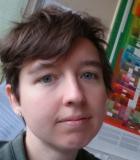
Funzione/Ruolo
Assegnista di Ricerca del CNR-IRPI, Istituto di Ricerca per la Protezione Idrogeologica, sezione di Padova
Percorso professionale
Dopo aver conseguito la laurea triennale in Ingegneria Civile nel 2007 e la laurea specialistica in Ingegneria per l'Ambiente e il Territorio nel 2010 presso l'università di Padova, nello stesso anno entra a far parte dell'Istituto di Ricerca per la Protezione Idrogeologica di Padova come borsista. Sempre nell'Istituto di Ricerca è assegnista di ricerca dal 2013 a oggi e contemporaneamente prosegue la sua formazione con un dottorato di ricerca, conseguito all'Università di Bologna in Ingegneria Civile, Ambientale e dei Materiali nel 2015.
Risultati scientifici
Giulia Bossi è un'esperta di meccanica delle terre e di frane. Si occupa, tra l'altro, di analisi statistica dell'errore associato alle semplificazioni del profilo stratigrafico nel modello numerico di frane; di simulazioni del runout per colate detritiche e valanghe di rocce, con ricostruzione della dinamica di eventi passati e scenari di rischio; dello studio di possibili interventi di mitigazione per frane; infine, di analisi di stabilità di versanti, dati di monitoraggio di frane e quantificazione del rischio. Durante il dottorato sviluppa una ricerca in cui presenta un nuovo approccio nella modellazione geotecnica che si basa sulla generazione stocastica di diverse distribuzioni di strati di terreno, secondo una logica booleana. Questo metodo è stato applicato all'analisi di stabilità di rilevati e fenomeni franosi in modelli bidimensionali e tridimensionali. All'interno del CNR-IRPI di Padova contribuisce alla definizione della dinamica di grandi frane distribuite tra Veneto, Alto Adige, Friuli Venezia Giulia e Argentina e gestisce l'attività di monitoraggio per le frane nel territorio italiano. Nell'ambito di progetti europei partecipa per conto del CNR al training di volontari per la gestione del rischio naturale. Collabora con l'Università Ca' Foscari di Venezia in un progetto per la modellizzazione del rischio per impatti tra avifauna e aerei nei pressi degli aeroporti, per cui gestisce il database spaziale e partecipa alla definizione del modello.
Attività editoriali e pubblicazioni
Giulia Bossi svolge l'attività di revisione per riviste scientifiche come Science of the total environment, Natural Hazard and Earth System Sciences, il Bulletin of Engineering Geology and the Environment e Computers & Geosciences.
È autrice di numerose pubblicazioni scientifiche nazionali e internazionali fra cui:
(2016) Bossi G, Mantovani M, Frigerio S, Schenato L, Marcato G, Pasuto A. A Monitoring Network to Map and Assess Landslide Activity in a Highly Anthropized Area. Geosciences (MDPI), 6, 40.
(2016) Bossi G, Zabuski L, Pasuto A, Marcato G. Capabilities of Continuous and Discontinuous Modelling of a Complex, Structurally Controlled Landslide. Geotechnical and Geological Engineering, 1-11.
(2016) Bossi G, Borgatti L, Gottardi G, Marcato G. The Boolean Stochastic Generation method - BoSG: A tool for the analysis of the error associated with the simplification of the stratigraphy in geotechnical models. Engineering Geology, 203:99-106.
(2016) Brezzi L, Bossi G, Gabrieli F, Marcato G, Pastor M, Cola S. A new data assimilation procedure to develop a debris flow run-out model. Landslides, 13(5):1083-1096.
(2015) Coccon F, Zucchetta M, Bossi G, Borrotti M, Torricelli P, Franzoi P. A land-use perspective for birdstrike risk assessment: The attraction risk index. Plos One, 10(6), e0128363.
(2015) Bossi G, Cavalli M, Crema S, Frigerio S, Quan Luna B, Mantovani M, Marcato G, Schenato L, Pasuto A. Multi-temporal LiDAR-DTMs as a tool for modelling a complex landslide: a case study in the Rotolon catchment (eastern Italian Alps). Natural Hazards and Earth System Sciences, 15:715-722.
(2014) Cortes Arevalo VJ, Charrière M, Bossi G, Frigerio S, Schenato L, Bogaard T, Bianchizza C, Pasuto A, Sterlacchini S. Evaluating quality of data collected by volunteers for first level inspection of hydraulic structures in mountain catchments. Natural Hazards and Earth System Sciences, 14:2681-2698.
(2014) Frigerio S, Schenato L, Mantovani M, Bossi G, Marcato G, Cavalli M, Pasuto A. A Web-based platform for automatic and continuous landslide monitoring: the Rotolon case study. Computers & Geosciences, (63):96-105.
(2013) Bossi G, Frigerio S, Mantovani M, Schenato L, Pasuto A, Marcato G. Hazard assessment of a potential rock avalanche in South Tyrol, Italy: 3D modeling and risk scenarios. Italian Journal of Engineering Geology and Environment, 6: 221-227.
(2012) Marcato G, Bossi G, Rivelli F, Borgatti L. Debris flood hazard documentation and mitigation on the Tilcara alluvial fan (Quebrada de Humahuaca, Jujuy province, North-West Argentina). Natural Hazards and Earth System Science, 12(6):1873-1882.
Riconoscimenti e premi
Nel 2014 è stata insignita del Premio Ivo Rocchetti per la migliore presentazione di una giovane ricercatrice al IX Convegno Nazionale "GIT-Geosciences and Information Technologies" di Montefalco (PG), per il lavoro Addressing ground lithological variability for numerical modelling through a stochastic approach: the Mortisa landslide case study. È inoltre componente di diverse società scientifiche quali l'International Association for Engineering Geology and the Environment (IAEG), l'European Geosciences Union (EGU) e l'Associazione Italiana di Geologia Applicata e Ambientale (AIGA).

Funzione/Ruolo
Professoressa ordinaria di Fisica all’Università degli studi di Milano e Presidente della Società Italiana di Fisica
Percorso professionale
Dopo la laurea in Fisica all’Università degli Studi di Milano ottiene il Ph.D. nel 1984 presso l’Università di Manitoba (Canada), che è una delle Università fondatrici del Laboratorio TRIUMF di Vancouver (Canada), dove conduce la sua ricerca nel campo della fisica nucleare sperimentale, concentrandosi sulla spettroscopia gamma per la struttura nucleare. Dopo il rientro in Italia come ricercatrice trascorre vari periodi presso il laboratorio ORNL (USA) e il Niels Bohr Institute di Copenhagen in Danimarca. A Milano diventa professoressa ordinaria nel 2002. Nel periodo 2005-2011 è presidente della Commissione Scientifica Nazionale di Fisica Nucleare dell’ INFN, nel 2011-2015 membro del consiglio direttivo INFN (Istituto Nazionale di Fisica Nucleare) come rappresentante MIUR e da gennaio 2020 è presidente della SIF (Società Italiana di Fisica). E’ stata membro e spesso presidente di numerosi comitati scientifici internazionali e di commissioni di valutazione.
Risultati scientifici
La ricerca condotta da Angela Bracco riguarda lo studio della struttura nucleare con esperimenti che utilizzano la spettroscopia gamma e fasci di ioni leggeri e pesanti da acceleratori. Tale ricerca si è concentrata sulle eccitazioni collettive dei nuclei, in particolare quella di tipo di dipolo elettrico. Questa eccitazione costituisce una sonda per le proprietà del nucleo come la forma, gli accoppiamenti a eccitazioni complesse che hanno analogie in altri sistemi fisici a multicorpi. Più recentemente l’attenzione si è rivolta alle vibrazioni dipolari in nuclei instabili con un numero innaturale di protoni e neutroni. Questi nuclei si generano in esplosioni stellari, e alcuni di essi sono prodotti in laboratorio come “fasci radioattivi”. La conoscenza delle oscillazioni dipolari in questi nuclei offre la possibilità di dare informazioni rilevanti per i modelli di nucleosintesi dei nuclei pesanti. Questa ricerca riguarda quindi un capitolo della fisica nucleare che ha implicazioni nell’ambito dell’astrofisica nucleare.
In particolare, si sta attualmente occupando delle oscillazioni dei neutroni alla superficie del nucleo in quanto la loro comprensione è rilevante per la descrizione delle stelle di neutroni che sono a loro volta sorgenti di onde gravitazionali.
Nel corso degli anni ha anche partecipato allo sviluppo e costruzione di nuovi rivelatori a scintillazione e a stato solido ad alta segmentazione per la misura della radiazione gamma. I nuovi rivelatori sono stati finalizzati a misure di alta selettività che hanno permesso di ottenere nuovi dati rilevanti per la struttura dei nuclei in regioni non ancora investigate che hanno importanti implicazioni astrofisiche.
Attività editoriali e pubblicazioni
Angela Bracco è direttrice delle riviste della Società Italiana di Fisica, supervisory editor di Nuclear Physics A (Elsevier) e membro dello Steering Committee di EPJ (Springer and Nature).
Di seguito una selezione delle sue più recenti pubblicazioni:
(2019) Bracco, A.; Lanza E. G.; Tamii, A. Isoscalar and isovector dipole excitations: Nuclear properties from low-lying states and from the isovector giant dipole resonance. PROGRESS IN PARTICLE AND NUCLEAR PHYSICS,106: 360-433.
(2018) Morales, A. I.; Benzoni, G.; Watanabe, H.; Bracco A. et al. Is seniority a partial dynamic symmetry in the first vg(9/2) shell? PHYSICS LETTERS B, 781:706.
(2017) Nakatsuka, N.; Baba, H.; Aumann, T.; A. Bracco et al. Observation of isoscalar and isovector dipole excitations in neutron-rich O-20, PHYSICS LETTERS B768: 387.
(2017) Leoni, S.; Fornal, B.; Marginean, N.; Bracco, A. et al. Multifaceted Quadruplet of Low-Lying Spin-Zero States in Ni-66: Emergence of Shape Isomerism in Light Nuclei. PHYSICAL REVIEW LETTERS 118 , 162502.
(2015) Ceruti, S.; Camera, F.; Bracco, A.; et al. Isospin Mixing in Zr-80: From Finite to Zero Temperature. PHYSICAL REVIEW LETTERS 115, 222502.
(2016) Bocchi, G.; Leoni, S.; Fornal, B.; Bracco A. et al. The mutable nature of particle-core excitations with spin in the one-valence-proton nucleus Sb-133. PHYSICS LETTERS B 760, 273.
(2015) Bracco, A.; Crespi, F. C. L.; Lanza, E. G. Gamma decay of pygmy states from inelastic scattering of ions. EPJA 51,99.
(2014) Pellegri, L.; Bracco, A.; Crespi, F. C. L.; et al. Pygmy dipole resonance in Sn-124 populated by inelastic scattering of O-17. PHYSICS LETTERS B (2014) Volume: 738, 519.
(2013) Crespi, F. C. L.; Bracco, A.; Nicolini, R.; et al. Isospin Character of Low-Lying Pygmy Dipole States in Pb-208 via Inelastic Scattering of O-17 Ions. PHYSICAL REVIEW LETTERS, 113, 1, 012501.
(2013) Bracco, A. Concluding remarks on the EMIS2012 conference. NIM 317, 810.
(2013) Larsen, A. C.; Blasi, N.; Bracco, A.; et al. Evidence for the Dipole Nature of the Low-Energy gamma Enhancement in Fe-56, PHYSICAL REVIEW LETTERS, 111, 242504.
Riconoscimenti e premi
Membro della Accademia Europea
Membro del Committee on International Scientific Affairs (CISA) dell'American Physical Society (APS)
Nel 2011 ha ricevuto il Premio della Fondazione EnergyLab
Nel 2018 ha ricevuto il premio GENCO membership dal GSI Exotic Nuclei Community (GSI, Laboratory, Germany)

Funzione/Ruolo
Direttrice dell'Oncologia dell'Ospedale Bellaria, Azienda Usl IRCCS Scienze Neurologiche di Bologna
Percorso professionale
Nel luglio 1981 si laurea in Medicina e Chirurgia all'Università degli studi di Padova con una la tesi sulla "Peptichemio nel trattamento del Carcinoma Ovarico". Successivamente si specializza nello studio dei tumori, conseguendo la specializzazione in Oncologia Medica con una tesi dal titolo: "Trattamento combinato chemio-chirurgico nel microcitoma polmonare". Frequenta il Radiotherapy Department Royal Marsden, Londra, l'Oncology Department MD Anderson Cancer Center di Houston, Texas, il Memorial Sloan Kettering Cancer Center, New York, USA. Prosegue la sua carriera di ricerca e diventa Direttrice della struttura semplice di Neuro-Oncologia, Azienda Ospedale-Università di Padova. Dal 2006 è Direttrice dell'Unità Operativa Complessa di Oncologia Medica AUSL di Bologna. È Principal Investigator mondiale di numerosi studi clinici.
Risultati scientifici
Alba Brandes ha steso la linea guida per il trattamento dei tumori cerebrali. E continua a fornire il suo contributo in qualità di Consulente Esperta dell' Agenzia europea per i medicinali (EMA Expert), Membro del Comitato Scientifico Internazionale per la valutazione di progetti oncologici presso il National Institute of the Cancer (INCa), Francia, Revisora linee guida oncologiche dell' Istituto Oncologico della Svizzera Italiana (IOSI), Membro del Response Assessment in Pediatric Neuro-Oncology (RAPNO), Membro dell'Immunotherapy Response Assessment in Neuro-Oncology (RANO), Membro del Gruppo Ristretto European Society of Medical Oncolgy (ESMO) per il trattamento dei Tumori Cerebrali, Coordinatrice Nazionale e Internazionale di Progetti di Ricerca dell'European Organization for Research and Treatment of Cancer (EORTC)/National Cancer Institute of Canada (NCIC), Coordinatrice delle Linee Guida Nazionali dell'Associazione Italiana di Oncologia Medica (AIOM) per il trattamento delle Neoplasie cerebrali, Referee ed esperta Nazionale dal 2009 per la Commissione Nazionale per la Formazione Continua: collaborazione (ECM nazionale) per la valutazione culturale e scientifica degli eventi e dei progetti formativi aziendali; Coordinatrice Scientifica (Principal Investigator) del progetto finanziato Fondazione Celeghin "Role of MGMT methylation status at time of diagnosis and recurrence for patients with glioblastoma: exploratory analysis and clinical implications", Membro del gruppo regionale dei tumori rari, Corresponsabile del percorso Aziendale PDTA Mammella e Polmone-AUSL Bologna, Responsabile Clinica PDTA Tumori cerebrali AUSL Bologna, Membro della Commissione Oncologica dell'Emilia Romagna.
Attività editoriali e pubblicazioni
Autrice di numerosi articoli scientifici nazionali ed internazionali tra cui:
(2016) Baumert BG, Hegi ME, van den Bent MJ, von Deimling A, Gorlia T, Hoang-Xuan K, Brandes AA, Kantor G, Taphoorn MJ, Hassel MB, Hartmann C, Ryan G, Capper D, Kros JM, Kurscheid S, Wick W, Enting R, Reni M, Thiessen B, Dhermain F, Bromberg JE, Feuvret L, Reijneveld JC, Chinot O, Gijtenbeek JM, Rossiter JP, Dif N, Balana C, Bravo-Marques J, Clement PM, Marosi C, Tzuk-Shina T, Nordal RA, Rees J, Lacombe D, Mason WP, Stupp R. Temozolomide chemotherapy versus radiotherapy in high-risk low-grade glioma (EORTC 22033-26033): a randomised, open-label, phase 3 intergroup study. The Lancet Oncology. pii: S1470-2045(16)30313-8. doi: 10.1016/S1470-2045(16)30313-8. [Epub ahead of print]. PMID: 27686946
(2016) Reijneveld JC, Taphoorn MJ, Coens C, Bromberg JE, Mason WP, Hoang-Xuan K, Ryan G, Hassel MB, Enting RH, Brandes AA, Wick A, Chinot O, Reni M, Kantor G, Thiessen B, Klein M, Verger E, Borchers C, Hau P, Back M, Smits A, Golfinopoulos V, Gorlia T, Bottomley A, Stupp R, Baumert BG. Health-related quality of life in patients with high-risk low-grade glioma (EORTC 22033-26033): a randomised, open-label, phase 3 intergroup study. The Lancet Oncology. pii: S1470-2045(16)30305-9. doi: 10.1016/S1470-2045(16)30305-9. [Epub ahead of print] PMID: 27686943
(2016) Schiffgens S, Wilkens L, Brandes AA, Meier T, Franceschi E, Ermani M, Hartmann C, Sandalcioglu IE, Dumitru CA. Sex-specific clinicopathological significance of novel (Frizzled-7) and established (MGMT, IDH1) biomarkers in glioblastoma. Oncotarget. doi: 10.18632/oncotarget.10465. [Epub ahead of print] PMID: 27409829
(2016) Wick W, Gorlia T, Bady P, Platten M, van den Bent MJ, Taphoorn MJ, Steuve J, Brandes AA, Hamou MF, Wick A, Kosch M, Weller M, Stupp R, Roth P, Golfinopoulos V, Frenel JS, Campone M, Ricard D, Marosi C, Villa S, Weyerbrock A, Hopkins K, Homicsko K, Lhermitte B, Pesce G, Hegi ME. Phase II Study of Radiotherapy and Temsirolimus versus Radiochemotherapy with Temozolomide in Patients with Newly Diagnosed Glioblastoma without MGMT Promoter Hypermethylation (EORTC 26082). Clinical Cancer Research. [Epub ahead of print] PMID: 27143690
(2016) Brandes AA, Finocchiaro G, Zagonel V, Reni M, Caserta C, Fabi A, Clavarezza M, Maiello E, Eoli M, Lombardi G, Monteforte M, Proietti E, Agati R, Eusebi V, Franceschi E. AVAREG: a phase II, randomized, noncomparative study of fotemustine or bevacizumab for patients with recurrent glioblastoma. Neuro Oncology, 18(9):1304-12. doi: 10.1093/neuonc/now035. PMID: 26951379
(2016) Brandes AA, Carpentier AF, Kesari S, Sepulveda-Sanchez JM, Wheeler HR, Chinot O, Cher L, Steinbach JP, Capper D, Specenier P, Rodon J, Cleverly A, Smith C, Gueorguieva I, Miles C, Guba SC, Desaiah D, Lahn MM, Wick W. A Phase II randomized study of galunisertib monotherapy or galunisertib plus lomustine compared with lomustine monotherapy in patients with recurrent glioblastoma. Neuro Oncology, 18(8):1146-56. doi: 10.1093/neuonc/now009. PMID: 26902851
(2015) Okada H, Weller M, Huang R, Finocchiaro G, Gilbert MR, Wick W, Ellingson BM, Hashimoto N, Pollack IF, Brandes AA, Franceschi E, Herold-Mende C, Nayak L, Panigrahy A, Pope WB, Prins R, Sampson JH, Wen PY, Reardon DA. Immunotherapy response assessment in neuro-oncology: a report of the RANO working group. The Lancet Oncology, 16(15): e534-42.
(2015) Pignata S, Lorusso D, Scambia G, Sambataro D, Tamberi S, Cinieri S, Mosconi AM, Orditura M, Brandes AA, Arcangeli V, Panici PB, Pisano C, Cecere SC, Di Napoli M, Raspagliesi F, Maltese G, Salutari V, Ricci C, Daniele G, Piccirillo MC, Di Maio M, Gallo C, Perrone F; MITO 11 investigators. Pazopanib plus weekly paclitaxel versus weekly paclitaxel alone for platinum-resistant or platinum-refractory advanced ovarian cancer (MITO 11): a randomised, open-label, phase 2 trial. The Lancet Oncolology,16(5):561-8. doi: 10.1016/S1470-2045(15)70115-4. Epub 2015 Apr 14. PMID: 25882986
(2015) Brandes AA, Bartolotti M, Marucci G, Ghimenton C, Agati R, Fioravanti A, Mascarin M, Volpin L, Ammannati F, Masotto B, Gardiman MP, De Biase D, Tallini G, Crisi G, Bartolini S, Franceschi E.New perspectives in the treatment of adult medulloblastoma in the era of molecular oncology. Critical Review in Oncology/Hematology, 94(3):348-59. doi: 10.1016/j.critrevonc.2014.12.016. Epub 2014 Dec 31. Review. PMID: 25600839
(2014) Brandes AA et al. Pattern of care and effectiveness of treatment for glioblastoma patients in the real world: Results from a prospective population-based registry. Could survival differ in a high-volume center?. Neuro-Oncology Practice, 1(4):166-171.
Riconoscimenti e premi
Nel 2001 viene nominata Cavaliere dell'Ordine al Merito della Repubblica Italiana per la sua attività di ricerca in ambito oncologico. Nel 2012 la Columbia University e la Cornell University insigniscono Alba Brandes del premio "Gruson", per la prima volta conferito a un ricercatore italiano per i suoi contributi nel campo della neuroncologia.
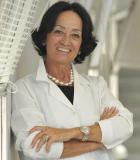
Funzione/Ruolo
Professoressa ordinaria di Endocrinologia all'Università degli Studi di Firenze
Percorso professionale
Laureata in Medicina e Chirurgia nel 1977 presso l'Università degli Studi di Firenze, si specializza nel 1980 in endocrinologia presso lo stesso ateneo, per poi conseguire nel 1988 il Dottorato di Ricerca in Biologia Molecolare all'Università degli Studi di Roma. Nel 2003 diventa ordinaria di Endocrinologia e Malattie del Metabolismo. Alla carriera accademica affianca quella clinica: dal 1992 è responsabile del Centro di Riferimento Tumori Endocrini Ereditari dell'Azienda Ospedaliero-Universitaria Careggi, dove dal 2007 è anche Direttrice dell'Unità Operativa di Malattie del Metabolismo Minerale ed Osseo. Dal 2016 coordina due European Reference Networks su malattie endocrine rare e su malattie rare dell'osso presso la suddetta azienda.
Risultati scientifici
Da anni impegnata nel campo della prevenzione e della cura delle malattie dello scheletro, non solo come medica e ricercatrice di spessore internazionale, con oltre 650 pubblicazioni su peer-reviewed Journals, ma anche come promotrice, attraverso il suo ruolo di Presidente di F.I.R.M.O (Fondazione Raffella Becagli) che si occupa di sostenere la prevenzione e la cura delle malattie dello scheletro, di un'attiva campagna di sensibilizzazione, tesa a diffondere, anche al di fuori della cerchia degli scienziati e degli ammalati, la conoscenza di queste patologie troppo poco note eppure capillarmente diffuse. Si adopera nel convogliare l'attenzione dell'opinione pubblica sui problemi delle malattie rare delle ossa, sulle malattie endocrine rare e sull'osteoporosi e nel sostenere campagne di comunicazione e prevenzione.
Attività editoriali e pubblicazioni
E' autrice di numerose pubblicazioni scientifiche, tra cui:
(1986) Brandi ML, Fitzpatrick LA, Coon HG, Aurbach GD. Bovine parathyroid cells: cultures maintained for more than l40 population doublings. Proceeding of the National Academy Society of the United States of America, 83:1709-1713.
(1986) Brandi ML, Aurbach GD, Fitzpatrick LA, Quarto R, Spiegel AM, Bliziotes MM, Norton JA, Doppman JL, Marx SJ. Parathyroid mitogenic activity in plasma from patients with multiple endocrine neoplasia type I. The New England Journal of Medicine, 314:1287-1293.
(1987) Sakaguchi K, Santora A, Zimering M, Curcio F, Aurbach GD, Brandi ML. Functional epithelial cell line cloned from rat parathyroid glands. Proceeding of the National Academy Society of the United States of America, 84:3269-3273.
(1992) Gattei V, Bernabei PA, Pinto A, Bezzini R, Ringressi A, Formigli L, Tanini A, Attadia V, Brandi ML. Phorbol ester induced osteoclast-like differentiation of a novel human leukemic cell line (FLG 29.1). The Journal of Cell Biology, 116:437-447.
(2001) Brandi ML, Gagel RF, Angeli A, Bilezikian JP, Beck-Peccoz P, Bordi C, Conte-Devolx B, Falchetti A, Gheri RG, Libroia A, Lips CJM, Lombardi G, Mannelli M, Pacini F, Ponder BA, Raue F, Skogseid B, Tamburrano G, Thakker RV, Thompson NW, Tommasetti P, Tonelli F, Wells SA Jr, Marx SJ. Guidelines for Diagnosis and Therapy of MEN Type1 and Type 2. The journal of Clinical Endocrinology & Metabolism, 86:5658-5671.
(2004) Khosla S, Riggs BL, Atkinson EJ, Oberg AL, Mavilia C, Del Monte F, Melton LJ 3rd, Brandi ML. Relationship of estrogen receptor genotypes to bone mineral density and to rates of bone loss in men. The Journal of Clinical Endocrinology & Metabolism, 89:1808-1816.
(2004) Falchetti A, Di Stefano M, Marini F, Del Monte F, Mavilia C, Strigoli D, De Feo ML, Isaia G, Masi L, Amedei A, Cioppi F, Ghinoi V, Maddali Bongi S, Di Fede G, Sferrazza C, Rini GB, Melchiorre D, Matucci-Cerinin M, Brandi ML. Two novel mutation at exon 8 of the Sequestosome 1 (SQSTM1) gene in an Italian series of patients affected by Paget's disease of bone (PDB). The Journal of Bone and Mineral Research, 19:1013-1017.
(2008) Luzi E, Marini F, Sala SC, Tognarini I, Galli G, Brandi ML. Osteogenic Differentiation of Human Adipose Tissue-Derived Stem Cells Is Modulated by the miR-26a Targeting of the SMAD1 Transcription Factor. The Journal of Bone and Mineral Research, 23(2):287-95.
(2012) Luzi E, Marini F, Tognarini I, Galli G, Falchetti A, Brandi ML, The Regulatory Network Menin-MicroRNA 26a As a Possible Target for RNA-Based Therapy of Bone Diseases.MulecularTherapyNucleic Acids, 22(2):103-8.
(2016) Brandi ML, Bilezikian JP, Shoback D, Bouillon R, Clarke BL, Thakker RV, Khan AA, Potts JT Jr. Management of Hypoparathyroidism: Summary Statement and Guidelines.The Journal of Clinical Endocrinology & Metabolism, Jun101(6):2273-83.
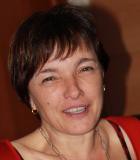
Funzione/Ruolo
Professoressa ordinaria e ex Prorettrice delegata del Polo Territoriale di Como del Politecnico di Milano
Percorso professionale
Dopo aver conseguito la laurea in Fisica all'Università degli Studi di Milano nel 1986, prosegue la sua formazione con un dottorato di ricerca in Scienze Geodetiche e Topografiche che consegue nel 1991 presso il Consorzio Interuniversitario di Milano, Torino e Pavia. Dal 1992 al 1994 è Ricercatrice all'Istituto Nazionale di Geofisica e Vulcanologia, dove contribuisce a creare l'International Geoid Service (IGeS) della Associazione Internazionale di Geodesia (IAG) ed entra a far parte del Comitato di redazione del Bollettino IGES, diventandone poi redattrice capo. Dal 1994 è Ricercatrice del Politecnico di Milano, e quattro anni più tardi diventa professoressa associata. Nel 1997 fonda e coordina il Laboratorio di Geomatica presso il Polo Territoriale di Como del Politecnico di Milano. Dal 2010 è professoressa ordinaria di Cartografia Numerica, Geographic Information Systems (GIS) e Internet GIS e dall'anno successivo prorettrice delegata presso il medesimo Polo Territoriale.
Risultati scientifici
L'attività di ricerca di Maria Antonia Brovelli è nell'ambito della geomatica (disciplina che si occupa dell'acquisizione, restituzione, analisi statistica e gestione di dati di natura metrica e tematica relativi alla superficie della Terra). Già dal 1988 inizia la sua carriera partecipando a progetti di ricerca nazionali e internazionali, dapprima dedicandosi alla geodesia operativa, alla radar-altimetria e alle analisi statistiche, e successivamente, dopo essere diventata professoressa associata, alla cartografia digitale e sistemi informativi geografici, principalmente liberi e open source. È stata ed è responsabile di contratti di ricerca e di consulenza relativi alla progettazione e realizzazione di Sistemi Informativi Territoriali, Geoservices web, sistemi di elaborazione dati GPS e dati telerilevati, sistemi di integrazione e di controllo della qualità dei modelli digitali del terreno. Negli ultimi anni si è occupata di VGI (Volunteer Geographic Information), Citizen Science e Big Geo Data.
Attività editoriali e pubblicazioni
Maria Antonia Brovelli è redattrice della rivista internazionale Applied Geomatics pubblicata da Springer, co-autrice di tre libri di testo sul trattamento dei dati statistici, di un volume sulle ortofoto, ovvero le fotografie aeree geometricamente corrette e georeferenziate in modo tale da essere utilizzate come carte, e modelli digitali del terreno, e autrice di oltre 150 pubblicazioni scientifiche fra cui:
(2018) Brovelli MA, Zamboni G, A new method for the assessment of spatial accuracy and completeness of OpenStreetMap building footprints, ISPRS International Journal of Geo-Information 7(8), 289.
(2016) Brovelli MA, Minghini M, Moreno Sanchez R, Oliveira R. Free anD Open Source Software for Geospatial Applications (FOSS4G) to support Future Earth. International Journal of Digital Earth, 1-19.
(2016) Brovelli MA, Minghini M, Molinari ME, Mooney P. Towards an automated comparison of OpenStreetMap with authoritative road datasets. Transactions in GIS.
(2015) Brovelli MA, Molinari ME, Hussein E, Chen J, Li R. The First Comprehensive Accuracy Assessment of GlobeLand30 at a National Level: Methodology and Results. Remote Sensing, 7(4):4191-4212.
(2015) Brovelli MA, Minghini M, Zamboni G. Public Participation GIS: a FOSS architecture enabling field-data collection. International Journal of Digital Earth, 8(5):345-363.
(2012) Valentini L, Brovelli MA, Zamboni G. Multi-frame and multi-dimensional historical digital cities: The Como example. International Journal of Digital Earth, 7(4):336-350.
(2011) Brovelli MA, Giori G, Mussin M, M. Negretti M. Improving the Monitoring of the Status of the Environment Through Web Geo-services: The Example of Large Structures Supervision. Transactions in GIS, 15(2), 173-188.
(2008) Brovelli MA, Crespi M, Fratarcangeli F, Giannone F, Realini E. Accuracy assessment of high resolution satellite imagery orientation by leave-one-out method. ISPRS Journal of Photogrammetry and Remote Sensing, 63(4):427-440.
(2004) Brovelli MA, Cannata M, Longoni UM. LIDAR Data Filtering and DTM Interpolation Within GRASS. Transactions in GIS, 8(2), 155-174.
(1993) Knudsen P, Brovelli MA. Collinear and cross-over adjustment of Geosat ERM and Seasat altimeter data in the Mediterranean Sea. Surveys in Geophysics, 14, 4-5:449-459.
(1993) Rummel R, Van Gelderan M, Koop R, Schrama E, Sansò F, Brovelli MA, Migliaccio F, Sacerdote F. Spherical Harmonic Analysis of Satellite Gradiometry. Publications on Geodesy, new series, number 39, Netherland Geodetic Commission, Delft, The Netherlands.
Riconoscimenti e premi
Nel settembre 2015 è stata insignita del Sol Katz Award 2015 per il Geospatial Libero e Open Source Software durante la conferenza FOSS4G 2015 a Seoul, Corea del Sud. Maria Antonia Brovelli fa parte del Direttivo della Società Italiana di Fotogrammetria e Topografia (SIFET) e del Comitato editoriale del bollettino. E' uno dei Direttori di OSGeo (Fondazione Internazionale dei GIS Open Source), Presidente del gruppo di lavoro IV/4 "Collaborative Crowdsourced Cloud Mapping (C³M)" della Società Internazionale di Fotogrammetria e Telerilevamento (ISPRS), membro di UN-GGIM Italia, Presidente del gruppo di lavoro "Capacity Building" del Progetto delle Nazioni Unite "UN OpenGIS", uno dei dieci membri del Task Team Internazionale (unica donna) con il compito di dare vita alla Rete Universitaria Internazionale di UN-GGIM. È inoltre co-organizzatrice dell'evento annuale "Europa NASA World Wind Challenge", che vede impegnati studenti e professionisti nello sviluppo di applicazioni basate sul globo virtuale della NASA.
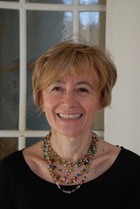
Area STEM: Scienze biomediche e biotecnologie
Competenze: applicazioni cliniche dell’intelligenza artificiale, clinica fisiopatologica in epatologia e gastroenterologia, management sanitario, ricerca traslazionale e clinico-patologica
Parole chiave: biologia molecolare, cirrosi epatica, epatite, epatocarcinoma, epatopatie, fegato, malattie delle vie biliari, statosi, virus dell'epatite B, virus dell'epatite C, virus dell'epatite D
Regione: Toscana
Funzione/Ruolo
Professoressa straordinaria di Medicina Interna presso il Dipartimento di Medicina Clinica e Sperimentale dell’Università di Pisa.
Percorso professionale
Dopo la laureata in Medicina e Chirurgia e la specializzazione in Malattie dell’Apparato Digerente conseguite rispettivamente nel 1984 e 1988 presso l’Università di Torino inizia il percorso professionale come assistente a tempo pieno dal 1988 e dal 1993 aiuto a tempo pieno presso la Divisione di Gastroenterologia, Ospedale S.Giovanni Battista di Torino. Nel 1989 consegue il diploma di perfezionamento in Diagnostica con Ultrasuoni in Medicina Interna presso l’Università degli Studi di Bologna. Nel 1998 si trasferisce a Pisa come Dirigente Medica di Primo Livello presso l’Unità Operativa Complessa di Gastroenterologia ed Epatologia, Spedali Riuniti di Santa Chiara e nel 2001 ne assume l’incarico di Direttrice facente funzioni. Dal 1999 dirige il Centro di Riferimento della Regione Toscana per le Epatopatie Croniche e i Tumori del Fegato. Dal 2003 è Direttrice dell’Unità Operativa Complessa di Epatologia e del Laboratorio di Fisiopatologia Epatica dell’ Azienda Ospedaliero Universitaria Pisana. Dal 2016 è Professoressa Straordinaria di Medicina Interna presso il Dipartimento di Medicina Clinica e Sperimentale dell’Università di Pisa e dal 2020 Direttrice del Dipartimento Assistenziale Integrato delle Specialità Mediche dell’Azienda Ospedaliero Universitaria Pisana.
Risultati scientifici
Maurizia Rossana Brunetto ha iniziato l’attività di ricerca biomedica nel 1981 come Allieva interna presso l’Istituto di Patologia Generale dell’Università di Torino e nel 1982 con uno Stage presso il Laboratorio del Department of Biochemistry della Brunel University Uxbridge, GB occupandosi del danno epatico da perossidazione lipidica. Successivamente si è dedicata allo studio della patogenesi e terapia dell'epatite B e nel 1989, Visiting Scientist presso il laboratorio di biologia molecolare del Max Plank Institut fuer Biochemie di Monaco di Baviera, Germania ha isolato e caratterizzato il mutante del virus dell’epatite B, difettivo per la secrezione del HBeAg, che causa la forma HBeAg negativa, anti-HBe positiva dell’epatite cronica B definita clinicamente presso la Divisione di Gastroenterologia dell’Ospedale Molinette di Torino. Nel 1993 e 1994 ha proseguito gli studi sulle implicazioni patogenetiche dell’eterogeneità virale dei virus epatitici (HBV e HCV) presso il II Dipartimento di Virologia del National Institute of Health di Tokyo, Giappone. Ha contribuito alla definizione dell’impatto del trattamento con Interferone dell’epatite cronica B e C in relazione al rischio di sviluppare l’ epatocarcinoma, del ruolo di marcatori virali quali HBsAg, HBcrAg nella gestione clinica dei portatori di infezione da HBV e delle linee guida nazionali e internazionali per il trattamento dell’epatite cronica B. Ha partecipato a disegno sperimentale e\o conduzione degli studi registrativi dei principali farmaci per il trattamento dell'epatite cronica B, D e C.
Attività editoriali e pubblicazioni
Maurizia Rossana Brunetto ha al suo attivo oltre 250 pubblicazioni. Di seguito una selezione.
(2021) Brunetto MR, Carey I, Maasoumy B, Marcos-Fosch C, Boonstra A, Caviglia GP, Loglio A, Cavallone D, Scholtes C, Ricco G, Smedile A, Riveiro-Barciela M, van Bömmel F, van der Eijk A, Zoulim F, Berg T, Cornberg M, Lampertico P, Agarwal K, Buti M. Incremental value of HBcrAg to classify 1582 HBeAg negative individuals in chronic infection without liver disease or hepatitis Aliment Pharmacol Ther.2021, Jan 19 doi:10.111/apt.16258
(2013) Brunetto MR, Marcellin P, Cherubini B, Yurdaydin C, Farci P, Hadziyannis SJ, Rothe V, Regep L, Bonino F. Response to peginterferon alfa-2a (40KD) in HBeAg-negative CHB: on-treatment kinetics of HBsAg serum levels vary by HBV genotype. J Hepatol. 2013 Dec;59(6):1153-9. doi: 10.1016/j.jhep.2013.07.017. Epub 2013 Jul 18. PubMed PMID: 23872601.
(2010) Brunetto MR, Oliveri F, Colombatto P, Moriconi F, Ciccorossi P, Coco B, Romagnoli V, Cherubini B, Moscato G, Maina AM, Cavallone D, Bonino F. Hepatitis B surface antigen serum levels help to distinguish active from inactive hepatitis B virus genotype D carriers. Gastroenterology. 2010 Aug;139(2):483-90. doi:10.1053/j.gastro.2010.04.052. Epub 2010 May 5. PubMed PMID: 20451520.
(2009) Brunetto MR, Moriconi F, Bonino F, Lau GK, Farci P, Yurdaydin C, Piratvisuth T, Luo K, Wang Y, Hadziyannis S, Wolf E, McCloud P, Batrla R, Marcellin P. Hepatitis B virus surface antigen levels: a guide to sustained response to peginterferon alfa-2a in HBeAg-negative chronic hepatitis B. Hepatology. 2009 Apr;49(4):1141-50. doi: 10.1002/hep.22760. PubMed PMID: 19338056.
(2007) Brunetto MR. Tailoring antiviral therapy in chronic hepatitis B patients with lamivudine resistance. J Hepatol. 2007 May;46(5):756-8. Epub 2007 Mar 9. PubMed PMID: 17383043.
(1998) Brunetto MR, Oliveri F, Koehler K, Zahm F, Bonino F and the International Interferon-alpha Study Group Effect of interferon-alpha on progression of cirrhosis to hepatocellular carcinoma: retrospective cohort study. Lancet 1998;351:1535-9.
(1993) Brunetto MR, Giarin M, Saracco G, Oliveri F, Calvo P, Capra G, Randone A, Abate ML, Manzini P, Capalbo M, et al. Hepatitis B virus unable to secrete e antigen and response to interferon in chronic hepatitis B.Gastroenterology. 1993 Sep;105(3):845-50. PubMed PMID: 7689519.
(1991) Brunetto MR, Oliveri F, Demartini A, Calvo P, Manzini P, Cerenzia MT, Bonino F. Treatment with interferon of chronic hepatitis B associated with antibody to hepatitis B e antigen. J Hepatol. 1991;13 Suppl 1:S8-11. Review. PubMed PMID:1960379.
(1989) Brunetto MR, Stemler M, Schodel F, Will H, Ottobrelli A, Rizzetto M, Verme G, Bonino F. Identification of HBV variants which cannot produce precore derived HBeAg and may be responsible for severe hepatitis. Ital. J. Gastroenterol.1989;Jun 21(3):151-154. WOSA1989AK15100003; ISSN: 0392-0623.
(1989) Brunetto MR, Oliveri F, Rocca G, Criscuolo D, Chiaberge E, Capalbo M, David E, Verme G, Bonino F. Natural course and response to interferon of chronic hepatitis B accompanied by antibody to hepatitis B e antigen.Hepatology. 1989 Aug;10(2):198-202. PubMed PMID: 2663695.
Riconoscimenti e premi
Maurizia Rossana Brunetto ha conseguito nel 1989 il «Young Investigator Award» della European Association for the Study of the Liver in occasione della XXIV Riunione Annuale dell’Associazione a Monaco di Baviera (Germania) per la scoperta del mutante del HBV, difettivo per la secrezione dell’HBeAg . Nel 2002 è stata insignita del «Young Investigator Award» dell’ Asian Pacific Association for the Study the Liver in Occasione della XVII Riunione Annuale dell’Associazione a Kyoto (Giappone) per la scoperta dell’epatite cronica B, HBeAg negativa e anti-HBe positiva e del virus che né è la causa.

Funzione/Ruolo
Ricercatrice presso l'Osservatorio astronomico di Cagliari
Percorso professionale
Dopo la laurea in Astronomia all'Università degli Studi di Bologna, nel 2000, prosegue i suoi studi nello stesso ateneo dove consegue il dottorato nel 2004. Pochi mesi dopo, diventa ricercatrice all'Osservatorio astronomico di Cagliari, dove si occupa di oggetti compatti (studio della materia ultra densa) e, in particolare, delle osservazioni e dell'indagine delle radio pulsar (uno dei diversi tipi di stelle che contengono molti più neutroni che protoni, chiamate così perché generano un impulso di radiazioni a brevi intervalli regolari). Dal 2012 fa parte della squadra di validazione scientifica del Sardinia Radio Telescope.
Risultati scientifici
L'attività scientifica di Marta Burgay si svolge prevalentemente nell'ambito dello studio delle stelle di neutroni e in particolare nel campo delle osservazioni e dell'indagine sulle emissioni radio delle pulsar. Il suo nome è collegato all'importante scoperta di un sistema binario chiamato J0737-3039A/B, che comprende due stelle di neutroni con caratteristiche pulsar: il primo e, ad oggi, unico sistema formato da due pulsar. Grazie alle sue numerose peculiarità (compresenza di due segnali pulsati, velocità orbitali elevatissime, geometria di taglio del sistema) la doppia pulsar rappresenta un laboratorio unico in svariati campi: nel campo della relatività generale, ad esempio, lo studio dei tempi di arrivo degli impulsi delle due stelle ha permesso di testare la validità della teoria della relatività generale con un margine di errore dello 0.05%. Successive osservazioni di questo sistema, tutt'ora in corso, permetteranno di migliorare ulteriormente questo limite e di testare teorie alternative alla relatività generale. Grazie allo studio della doppia pulsar sarà anche possibile avere la prima misura del momento di inerzia, che serve per descrivere il comportamento di corpi in rotazione intorno a un asse, di una stella di neutroni. Questi dati potrebbero porre nuovi limiti alle possibili equazioni di stato della materia nucleare. Inoltre, la mutua interazione tra la radiazione emessa da una pulsar e la magnetosfera dell'altra, permette di studiare i processi di emissione e i campi magnetici delle pulsar e di effettuare studi di fisica dei plasmi.
Dal 2008 Marta Burgay fa parte del progetto High Time Resolution Universe Survey for pulsars and transients e dal 2013 del progetto SUPERB (Survey for Pulsars and Extragalactic Radio Bursts) grazie ai quali sono già state scoperte quasi 200 nuove pulsar, tra cui più di 30 MSP (pulsar millisecondo), una magnetar (diverso tipo di stella di neutroni con un enorme campo magnetico) con emissioni in banda radio e una pulsar con un pianeta "di diamante".
Attività editoriali e pubblicazioni
Marta Burgay è (co)autrice di 106 articoli con referee pubblicati su riviste internazionali (tra cui 4 su Nature e 5 su Science) che hanno ricevuto un totale di 6784 citazioni. È (co)autrice di 21 comunicazioni scientifiche telematiche (Astronomer's Telegram, GCN Circulars) e (co)autrice di 58 atti di congresso. È editor in chief di un volume di atti congressuali.
[2016] Keane E F, Johnston S, Bhandari S, Barr E, Bhat NDR, Burgay M, Caleb M, Flynn C, Jameson A, Kramer M, Petroff E, Possenti A, van Straten W, Bailes M, Burke-Spolaor S, Eatough RP, Stappers BW, Totani T, Honma M, Furusawa H, Hattori T, Morokuma T, Niino Y, Sugai H, Terai T, Tominaga N, Yamasaki S, Yasuda N, Allen R, Cooke J, Jencson J, Kasliwal MM, Kaplan DL, Tingay SJ, Williams A, Wayth R, Chandra P, Perrodin D, Berezina M, Mickaliger M, Bassa C. The host galaxy of a fast radio burst, Nature, 530:453.
[2015] Lentati L, Taylor S R, Mingarelli C M F, Sesana A, Sanidas SA, Vecchio A, Caballero RN, Lee KJ, van Haasteren R, Babak S, Bassa CG, Brem P, Burgay M, Champion DJ, Cognard I, Desvignes G, Gair JR, Guillemot L, Hessels J W T, Janssen GH, Karuppusamy R, Kramer M, Lassus A, Lazarus P, Liu K, Osłowski S, Perrodin D, Petiteau A, Possenti A, Purver MB, Rosado PA, Smits R, Stappers B, Theureau G, Tiburzi C, Verbiest JPW. European Pulsar Timing Array limits on an isotropic stochastic gravitational-wave background, Monthly Notices of the Royal Astronomical Society, 453:2576.
[2013] Papitto A, Ferrigno C, Bozzo E, Rea N, Pavan L, Burderi L, Burgay M, Campana S, di Salvo T, Falanga M, Filipovic MD, Freire PCC, Hessels JWT, Possenti A, Ransom SM, Riggio A, Romano P, Sarkissian JM, Stairs I H, Stella L, Torres DF, Wieringa MH, Wong G F. Swings between rotation and accretion power in a binary millisecond pulsar, Nature, 501:517.
[2013] Thornton D, Stappers B, Bailes M, Barsdell B, Bates S, Bhat N D R, Burgay M, Burke-Spolaor S, Champion D J, Coster P, D'Amico N, Jameson A, Johnston S, Keith M, Kramer M, Levin L, Milia S, Ng C, Possenti A, van Straten W. A Population of Fast Radio Bursts at Cosmological Distances, Science, 341:53.
[2013] Burgay M, Keith MJ, Lorimer DR, Hassall TE, Lyne AG, Camilo F, D'Amico N, Hobbs GB, Kramer M, Manchester RN, McLaughlin MA, Possenti A, Stairs I H, Stappers BW.The Perseus Arm Pulsar Survey, Monthly Notices of the Royal Astronomical Society, 429:579.
[2011] Bailes M, Bates SD, Bhalerao V, Bhat NDR, Burgay M, Burke-Spolaor S, D'Amico N, Johnston S, Keith MJ, Kramer M, Kulkarni SR, Levin L, Lyne AG, Milia S, Possenti A, Spitler L, Stappers B, van Straten, W. Transformation of a Star into a Planet in a Millisecond Pulsar Binary, Science, 333:1717.
[2006] Kramer M, Stairs IH, Manchester RN, McLaughlin MA, Lyne AG, Ferdman RD, Burgay M, Lorimer DR, Possenti A, D'Amico N, Sarkissian J M, Hobbs G B, Reynolds J E, Freire PCC, Camilo F. Tests of General Relativity from Timing the Double Pulsar, Science, 314:97.
[2006] McLaughlin MA, Lyne AG, Lorimer DR, Kramer M, Faulkner AJ, Manchester RN, Cordes JM, Camilo F, Possenti A, Stairs IH, Hobbs G, D'Amico N, Burgay M, O'Brien JT. Transient radio bursts from rotating neutron stars, Nature, 439:817.
[2004] Lyne AG, Burgay M, Kramer M, Possenti A, Manchester RN, Camilo F, McLaughlin MA, Lorimer DR, D'Amico N, Joshi BC, Reynolds J, Freire PCC, A Double-Pulsar System - A rare Laboratory for Relativistic Gravity and Plasma Physics, Science, 303:1153L.
[2003] Burgay M, D'Amico N, Possenti A, Manchester RN, Lyne AG, Joshi BC, McLaughlin MA, Kramer M, Sarkissian JM, Camilo F, Kalogera V, Kim C, Lorimer DR. An increased estimate of the merger rate of double neutron stars from observations of a highly relativistic system, Nature, 426:531.
Riconoscimenti e premi
Marta Burgay ha ricevuto numerosi riconoscimenti, sin dall'inizio della sua carriera, oltre ad aver ricoperto importanti incarichi scientifici e istituzionali. La sua tesi di dottorato dal titolo "The Parkes High-Latitude Pulsar Survey and the Discovery of the First Double Pulsar" ha ricevuto il Premio Tacchini 2005 della Società Astronomica Italiana (SAIt). Pochi mesi dopo ha ricevuto il Premio Descartes 2005 Excellence in scientific collaborative science come membro del gruppo internazionale PulSE (Pulsar Science in Europe). Nel 2006 è stata premiata con due importanti riconoscimenti, il Premio della Società Italiana di Relatività Generale e Fisica della Gravitazione (SIGrav) per giovani ricercatori, in ambito nazionale, e il Premio della International Union for Pure and Applied Physics (IUPAP) per giovani fisici, in ambito internazionale. Nel 2010 ha vinto il Premio Marsden dell'European Astrosky Networke e il Vainu Bappu Award della Astronomical Society of India. Nel 2011 la XXIII edizione del Premio Marisa Bellisario dedicata a Donne innovazione e capitale umano l'ha premiata nella sezione riconoscimenti speciali ai giovani talenti per la ricerca. Nel 2014 è stata nominata Chevalier de l'autonomie della regione Valle d'Aosta e nel 2015 designata "donna sarda dell'anno" dal Club Lionees di Cagliari.

Funzione/Ruolo
Professoressa ordinaria di Gastroenterologia e Delegata alle Scuole di Specializzazione e all’Osservatorio per la formazione specialistica post lauream, all'Università degli studi di Padova.Responsabile dell'Unità di Trapianto Multiviscerale dell'Azienda Ospedale Università di Padova.
Percorso professionale
Dopo la laurea in Medicina e Chirurgia, conseguita all'Università degli Studi di Padova nel 1984, prosegue la sua formazione attraverso la specializzazione in Gastroenterologia ed Endoscopia Digestiva presso Scuola di Specializzazione di Padova. Nel 1993 consegue il dottorato di ricerca in Scienze Epatologiche. Dallo stesso anno entra nell'Azienda Ospedaliera - Università di Padova, prima come assistente di Gastroenterologia e dal 1997 come Dirigente Medico di I livello. Dal 2001 è ricercatrice universitaria di Gastroenterologia presso il Dipartimento di Scienze Chirurgiche, Oncologiche e Gastroenterologiche dell'Università di Padova. Dal 2004 al 2008 è Responsabile del Centro Regionale Specializzato di Terapia Cellulare delle Malattie Metaboliche, mentre dal 2010 è Responsabile della Struttura Semplice Dipartimentale "Trapianto Multiviscerale" dell'Azienda Ospedaliera - Università di Padova. Nel 2014 diventa professoressa associata e nel 2019 ordinaria di Gastroenterologia dell'Università di Padova. Dal 2015 al 2021 è prorettrice alla Formazione Post Lauream dell'Università di Padova. Dal 2021 Delegata alle Scuole di Specializzazione e all'Osservatorio per la formazione specialistica post lauream, presso lo stesso Ateneo.
Attualmente è Segretaria della Società Italiana di Gastroenterologia (SIGE), Presidente del North Italian Transplant program (NITp), e presidente eletta della commissione per gli affari pubblici dell’United European Gastroenterology (UEG). È inoltre presidente onoraria dell’European Board Transplant Medicine e Coordinatrice della Commissione Permanente Trapianti dell’Associazione Italiana Studio Fegato (AISF).
Risultati scientifici
Patrizia Burra svolge da anni ricerca clinica, occupandosi principalmente della cirrosi epatica, dell'epatopatia alcolica, delle malattie dismetaboliche e delle complicanze post-trapianto di fegato, concentrandosi inoltre sulla qualità della vita dei pazienti che hanno subito un trapianto. In passato ha svolto studi sulla funzione neurologica e sul flusso cerebrale regionale mediante la SPECT (tomografia ad emissione di fotone singolo) e ed ha condotto studi quantitativi sulla funzione neurologica, in soggetti candidati al trapianto di fegato mediante PET (tomografia a emissione di positroni). Oltre alla ricerca clinica, Patrizia Burra si è occupata di ricerca di base, principalmente svolgendo studi sulle colture primarie di epatociti umani, sui recettori per gli ormoni tiroidei e sulle cellule staminali dal cordone ombelicale e il loro differenziamento in epatociti.
Attività editoriali e pubblicazioni
Patrizia Burra è Associate Editor di Transplant International dal 2009 e dell'American Journal of Transplantation dal 2010 al 2015. È inoltre autrice di oltre 240 pubblicazioni scientifiche nazionali ed internazionali, fra cui:
(2016) Alisi A, Balsano C, Bernabucci V, Berzigotti A, Brunetto M, Bugianesi E, Burra P [....] Villa E, Mazzella G Women in Hepatology Group; Italian Association for the Study of the Liver (AISF). AISF position paper on liver transplantation and pregnancy: Women in Hepatology Group, Italian Association for the Study of the Liver (AISF). Digestive and Liver Disease, 48(8):860-868.
(2016) European Association for the Study of the Liver. Coordinator: Patrizia Burra; Panel members: Andrew Burroughs, Ivo Graziadei, Jacques Pirenne, Juan Carlos Valdecasas, Paolo Muiesan, Didier Samuel, Xavier Forns. EASL Clinical Practice Guidelines: Liver transplantation. Journal of Hepatology, 64(2):433-485
(2016) Burra P, Germani G. Organ allocation for liver transplantation: One size does not fill all. Liver Transplantation, 22(6):715-716.
(2016) Burra P, De Martin E, Zanetto A, Senzolo M, Russo FP, Zanus G, Fagiuoli S. Hepatitis C virus and liver transplantation: Where do we stand?. Transplant International, 29(2):135-152.
(2014) Rodríguez-Castro KI, De Martin E, Gambato M, Lazzaro S, Villa E, Burra P. Female gender in the setting of liver transplantation. World Journal of Transplantation, 4(4):229-242.
(2014) Fagiuoli S, Colli A, Bruno R, Craxì A, Gaeta GB, Grossi P, Mondelli MU, Puoti M, Sagnelli E, Stefani S, Toniutto P, Burra P. Management of infections pre- and post-liver transplantation: report of an AISF consensus conference. Journal of Hepatology, 60(5):1075-1089.
(2013) Burra P, De Martin E, Gitto S, Villa E. Influence of age and gender before and after liver transplantation. Liver Transplantation,19(2):122-134.
(2013) Burra P, Germani G, Adam R, Karam V, Marzano A, Lampertico P, Salizzoni M, Filipponi F, Klempnauer JL, Castaing D, Kilic M, Carlis LD, Neuhaus P, Yilmaz S, Paul A, Pinna AD, Burroughs AK, Russo FP. Liver transplantation for HBV-related cirrhosis in Europe: an ELTR study on evolution and outcomes. Journal of Hepatology, 58(2):287-296.
(2010) Burra P, Senzolo M, Adam R, Delvart V, Karam V, Germani G, Neuberger J; ELITA; ELTR LiverTransplant Centers. Liver transplantation for alcoholic liver disease in Europe: a study from the ELTR (EuropeanLiver Transplant Registry). American Journal of Transplantation, 10(1):138-148.
(2010) Burra P, Germani G, Masier A, De Martin E, Gambato M, Salonia A, Bo P, Vitale A, Cillo U, Russo FP, Senzolo M. Sexual dysfunction in chronic liver disease: is liver transplantation an effective cure?. Transplantation, 89(12):1425-1429.
Riconoscimenti e premi
Patrizia Burra è Presidente della Fondazione ONLUS Marina Minnaja per la ricerca e lo studio nel trapianto di fegato dal 1998. Fa parte inoltre di numerose società scientifiche italiane e internazionali, fra cui: l'AISF (Associazione Italiana Studio Fegato) dal 1985, la SIGE (Società Italiana di Gastroenterologia) dal 1985, l'ESOT (European Society Organ Transplantation) dal 1994, l'EASL (European Association Study of the Liver) dal 1995 e l'ILTS (International Liver Transplant) dal 2008.
Nel 2021 ha ottenuto il Fellow della American Association for the Study of Liver Diseases (FAASLD) ed ha ricevuto il premio di riconoscimento EASL 2021.

Funzione/Ruolo
Professoressa ordinaria di Psicologia sociale all'Università di Padova
Percorso professionale
Dopo la laurea in Filosofia presso l’università di Trieste (1988) ha conseguito il Dottorato di ricerca in Psicologia Sociale presso la University of Oregon nel 1996. Nel 1996 inizia, come ricercatrice, la sua carriera all'Università di Padova, dove attualmente è professoressa ordinaria.
Risultati scientifici
Attività di ricerca su temi legati al genere. Fra questi è stato indagato il problema dell’oggettivazione sessuale della donna e delle molestie sessuali ed il modo in cui i media, per esempio la TV italiana, sostengono tali fenomeni. Tale filone di ricerca ha dimostrato che la visione di spezzoni di TV italiana con una rappresentazione delle donne sessualmente oggettivate aumenta l’adesione alle norme di genere tradizionali, che a sua volta incrementa la propensione alle molestie sessuali. All’interno della costruzione di un programma di alfabetizzazione mediatica, è stato inoltre dimostrato come la visione di filmati di denuncia dell’oggettivazione sessuale femminile aumenti l’intenzione di intraprendere azioni collettive, come firmare una petizione contro i media sessisti e oggettivanti, ma solo da parte delle partecipanti donne. Inoltre, la visione da parte di un gruppo di partecipanti maschi di un filmato di denuncia è stata efficace nel ridurre le loro azioni di molestia sessuale, come l’invio di barzellette sessiste ad una donna sconosciuta, e la loro intenzione di intraprendere molestie sessuali più gravi come ricatti qui pro quo.
Attività editoriali e pubblicazioni
Associate Editor per l'European Journal of Social Psychology dal 2001 al 2004.
Revisora ad-hoc per le seguenti riviste scientifiche: Journal of Personality and Social Psychology, Journal of Experimental Social Psychology, European Journal of Social Psychology, Social Cognition, Group processes and Intergroup relations, British Journal of Social Psychology, Social Psychology and Personality Science, European Journal.
Di seguito una lista di pubblicazioni internazionali:
(2017) Fasoli, F., Cadinu, M., Carnaghi, A., Galdi, S., Guizzo, F., & Tassara, L. How do you self-categorize? Gender and sexual orientation self-categorization in homosexual/heterosexual men and women. Personality and Individual Differences. doi: https://doi.org/10.1016/j.paid.2017.11.011
(2017) Galdi, S., Maass, A., & Cadinu, M. Defending the Victim of Sexual Harassment: The Influence of Civil Courage and Media Exposure. Psychology of Women Quarterly, doi: 0361684317709770.
(2017) Guizzo, F., Cadinu, M. Galdi, S., Maass, A., Latrofa, M. Objecting to Objectification: Women's Collective Action Against Sexual Objectification on Television. Sex Roles. doi: 10.1007/s11199-016-0725-8
(2016) Guizzo, F., & Cadinu, M. Effects of Objectifying Gaze on Women’s Cognitive Performance: the Role of Flow Experience and Internalization of Beauty Ideals. British Journal of Social Psychology. doi: 10.1111/bjso.1217
(2016) Pacilli, M.G., Tomasetto, C. & Cadinu, M. Exposure to Sexualized Advertisements Disrupts Children’s Math Performance by Reducing Working Memory.Sex roles: A Journal of Research.DOI: 10.1007/s11199-016-0581-6.
(2015) Hunt, C. J., Fasoli, F., Carnaghi, A., & Cadinu, M. Masculine Self-Presentation and Distancing From Femininity in Gay Men: An Experimental Examination of the Role of Masculinity Threat. Psychology of Men & Masculinity. doi:10.1037/a0039545..
(2014) Galdi, S., Maass, A., & Cadinu, M. Objectifying media: Their effect on gender role norms and sexual harassment of women. Psychology of Women Quarterly, 38, 398-413. doi: 10.1177/0361684313515185.
(2013) Cadinu, M., Galdi, S., &Maass, A. Chameleonic social identities: Context induces shifts in homosexuals’ self-categorization and self-stereotyping. European Journal of Social Psychology, 43, 474-481. doi: 10.1002/ejsp.1957
(2013) Galdi, S. Cadinu, M., & Tomasetto, C. In Search of the Roots of Stereotype Threat: The Activation of Math-gender Stereotypes Disrupts Girls’ Performance in Absence of Stereotype Awareness. Child Development. doi:10.1111/cdev.12128
(2013) Maass, A., Cadinu, M., Galdi, S. Sexual Harassment: Motivations and consequences. In M.K. Ryan &N.R. Branscombe (Eds.) The Sage Handbook of Gender and Psychology (cap. 21, pp. 341-358). London: Sage.
(2013) Cadinu, M., Latrofa, M., &Carnaghi, A. Comparing Self-Stereotyping with Ingroup- Stereotyping and Outgroup-Stereotyping in Unequal Group Contexts: the case of Gender. Self and Identity, 12, 582-596. Taylor and Francis online. doi:10.1080/15298868.2012.712753.
(2006) Maass, A., & Cadinu, M. Protecting a threatened identity through sexual harassment: A social identity interpretation. In R. Brown &D. Capozza (Eds.). Social Identities: Motivational, emotional, cultural influences (pp. 109-131). Hove, England. Hove, England: Psychology Press/Taylor &Francis (UK).
Riconoscimenti e premi
Membro della Executive Committee della European Association of Social Psychology - mandato elettivo di 6 anni (2011-2017).

Funzione/Ruolo
Professoressa associata presso il Georgia Institute of Technology, Atlanta, Stati Uniti
Percorso professionale
Dopo aver conseguito la laurea in Fisica all'Università degli Studi di Milano, prosegue il suo percorso formativo presso la Princeton University, conseguendo prima un master nel 1998 e poi un dottorato di ricerca in Fisica nel 2001. Dallo stesso anno è post doc associata alla Princeton University, dal 2002 al 2004 invece ricopre lo stesso ruolo al MIT (Massachusetts Institute of Technology). Nel 2005 è research scientist al MIT, ruolo che ricopre fino al 2007, anno in cui diventa assistant professor della University of Massachusetts Amherst. Presso la stessa università nel 2012 è professoressa associata fino al 2015. Nel 2014 è vising scholar della Cardiff University per circa sei mesi. Dal 2015 è professoressa associata del Georgia Institute of Technology.
Risultati scientifici
La ricerca scientifica di Laura Cadonati riguarda le onde gravitazionali, nello specifico si occupa di individuare, caratterizzare e interpretare quelle di breve durata prodotte da eventi astrofisici di enorme portata come il collasso del nucleo delle supernova o le collisioni di buchi neri. Nel febbraio 2016 si è tenuta la conferenza stampa di presentazione della scoperta (avvenuta nel settembre 2015) che ha cambiato il modo di intendere l'astrofisica: Laura Cadonati e il gruppo di ricerca internazionale di cui fa parte dimostrano l'esistenza delle onde gravitazionali teorizzate da Albert Einsten nella Teoria della Relatività Generale. La scoperta è stata effettuata dall'osservatorio gravitazionale LIGO, negli Stati Uniti, in collaborazione con un team internazionale di un migliaio di scienziati di cui fanno parte anche i responsabili dell'esperimento italiano Virgo, a Cascina. Grazie a questo risultato ci saranno nuove applicazioni nel campo della fisica teorica e della fisica applicata: infatti la scoperta non si limita a fornire una miglior comprensione della teoria della relatività, ma offre nuove possibilità per la ricerca scientifica nel settore della nascita dell'universo, e della comprensione delle forze che ci circondano. La precedente attività di ricerca di Laura Cadonati include la rivelazione dei neutrini solari con l'esperimento Borexino e la partecipazione al progetto DarkSide per la ricerca della Materia Oscura, entrambi gli esperimenti si svolgono nei Laboratori Nazionali del Gran Sasso.
Attività editoriali e pubblicazioni
Laura Cadonati è autrice di numerose presentazioni di conferenze e workshop internazionali, oltre che di seminari e parti di libri universitari come:
"Listening to Space with LIGO." L. Cadonati. State of the Universe 2007 - New Images, Discoveries, and Events, 2006 Springer Praxis Books, Popular Astronomy Series. Ratcliffe Editore.
E' inoltre autrice di numerose pubblicazioni scientifiche fra cui:
(2016) LIGO-Virgo Collaboration. GW151226: Observation of Gravitational Waves from a 22 Solar-mass Binary Black Hole Coalescence. Physical Review Letters ,116, 241103.
(2016) LIGO-Virgo Collaboration. Observation of Gravitational Waves from a Binary Black Hole Merger. Physical Review Letters, 116, 061102.
(2016) LIGO-Virgo Collaboration. Characterization of transient noise in Advanced LIGO relevant to gravitational wave signal GW150914. Classical & Quantum Gravity, 33, 134001.
(2016) LIGO-Virgo Collaboration. Observing gravitational-wave transient GW150914 with minimal assumptions. Physical Review D, 93, 122004.
(2016) LIGO-Virgo Collaboration. Prospects for Observing and Localizing Gravitational-Wave Transients with Advanced LIGO and Advanced Virgo. Living Reviews in Relativity, 19, 1.
(2014) Clark J, Bauswein A, Cadonati L, Janka HT, Pankow C, Stergioulas N. Prospects For High Frequency Burst Searches Following Binary Neutron Star Coalescence With Advanced Gravitational Wave Detectors. Physical Review D, 90, 062004.
(2014) LIGO-Virgo Collaboration. Methods and results of a search for gravitational waves associated with gamma-ray bursts using the GEO600, LIGO, and Virgo detectors. Physical Review D, 89,122004.
(2014) LIGO Scientific Collaboration, Virgo Collaboration, NINJA Collaboration. The NINJA-2 project: Detecting and characterizing gravitational waveforms modelled using numerical binary black hole simulations. Classical & Quantum Gravity, 31, 115004.
(2014) Borexino Collaboration. Neutrinos from the primary proton-proton fusion process in the Sun. Nature, 512, 383-386.
(2008) Borexino Collaboration. Direct Measurement of the Be 7 Solar Neutrino Flux with 192 Days of Borexino Data. Physical Review Letters, 101, 091302.
Riconoscimenti e premi
Laura Cadonati dal 2002 da parte della LIGO Scientific Collaboration. Nel 2010 riceve il Career Award dalla National Science Foundation (NSF), nello stesso anno è eletta nell'executive committee del Topical Group on Gravitation dell'American Physical Society. Nel 2014 è eletta nella Chair-line del APS Topical Group on Gravitation (adesso Division of Gravity). L'anno successivo entra a far parte come Fellow dell'American Physical Society. Nel 2016 entra nell'Advisory Board del Classical and Quantum Gravity Journal.
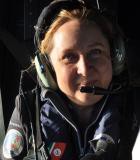
Funzione/Ruolo
Dirigente di Ricerca dell'Istituto Nazionale di Geofisica e Vulcanologia (INGV), Sezione Catania - Osservatorio Etneo
Percorso professionale
Dopo essersi laureata in geologia presso l'Università della Calabria, Sonia Calvari consegue un dottorato di ricerca in Pericolosità Vulcanica presso l'Università di Lancaster, in Inghilterra. La sua attività professionale inizia all'interno dell'Istituto Internazionale di Vulcanologia a Catania, un istituto del Consiglio Nazionale delle Ricerche (CNR) di cui fa parte dal 1987 al 1999, anno in cui questo e altri istituti del CNR che si interessavano di sismicità e vulcani sono confluiti nell'INGV. Lavora all'INGV dal 1999 ricoprendo diversi incarichi istituzionali: responsabile dell'Unità Funzionale di Vulcanologia e Geochimica (2002-2009); responsabile della Tematica Trasversale Coordinata (TTC) inerente la Sorveglianza dei vulcani attivi (2004-2013).
Risultati scientifici
Sonia Calvari e i suoi colleghi svolgono un costante lavoro di monitoraggio nelle aree vulcaniche italiane e partecipano a studi e ricerche, collaborando anche con ricercatori stranieri e applicando allo studio di vulcani all'estero le tecniche utilizzate in Italia. Gli studi riguardano la geologia dei sistemi vulcanici, con la produzione di carte geologiche e banche dati, la sorveglianza e il monitoraggio dei vulcani attivi, l'osservazione della messa in posto delle colate e dei campi lavici complessi e delle grotte laviche, con valutazioni del grado di pericolosità. I suoi studi includono l'attività esplosiva e parossistica come le fontane di lava, per l'analisi delle quali utilizza dati provenienti da sistemi multiparametrici e multidisciplinari. Si interessa attivamente di divulgazione e ha partecipato a diversi seminari e trasmissioni televisive, sia in Italia sia all'estero, come RAI Explora (RAI Educational), Geo & Geo (RAI3), "La TV delle Scienze", National Geographic, (Discovery Channel), senza dimenticare i suoi contributi a History Channel, CNN, BBC, Endemol UK, SWR (Germania), sempre con l'obiettivo di far conoscere l'attività dell'INGV.
Attività editoriali e pubblicazioni
Sonia Calvari è stata proponente e curatrice, insieme con altri colleghi, di due monografie geofisiche pubblicate dall'American Geophysical Union, di cui la prima riguarda lo studio dell'Etna (Bonaccorso A, Calvari S, Coltelli M, Del Negro C, Falsaperla S (eds), Mt. Etna: Volcano Laboratory. Geophysical Monograph Series, v. 143, 2004), e la seconda è inerente l'eruzione dello Stromoboli del 2002-2003 (Calvari S, Inguaggiato S, Puglisi G, Ripepe M and Rosi M (eds), The Stromboli Volcano: An integrated study of the 2002-2003 Eruption, Geophysical Monograph Series, 182, 2008). È anche autrice, con il professore Tanner, di un libro sui vulcani in lingua inglese pubblicato dal Museo di Storia Naturale di Albuquerque (New Mexico): Tanner LH and Calvari S, Volcanoes: Windows on the Earth. Albuquerque, New Mexico Museum of Natural History and Science, A Division of the Department of Cultural Affairs, 2012.
Sonia Calvari è Associate Editor della rivista Bulletin of Volcanology (dal 2011) ed è autrice di oltre 100 pubblicazioni scientifiche su riviste internazionali, fra cui:
(2016) Calvari S, Intrieri E, Di Traglia F, Bonaccorso A, Casagli A, Cristaldi A.Monitoring crater-wall collapse at active volcanoes: a study of the 12 January 2013 event at Stromboli. Bulletin of Volcanology, 78(5):1-16.
(2016) Cappello A, Ganci G, Calvari S, Pérez NM, Hernández PA, Silva SV et al. Lava flow hazard modeling during the 2014-2015 Fogo eruption, Cape Verde. Journal of Geophysical Research: Solid Earth, 121(4):2290-2303.
(2016) Harris AJL, Carn S, Dehn J, Del Negro C, Guđmundsson MT, Calvari S, et al.Conclusion: recommendations and findings of the RED SEED working group.Geological Society, London, Special Publications 426, SP426, 11.
(2015) Slatcher N, James MR, Calvari S, Ganci G, Browning J. Quantifying effusion rates at active volcanoes through integrated time-lapse laser scanning and photography. Remote Sensing, 7(11):14967-14987.
(2015) Marotta E, Calvari S, Cristaldi A, D'Auria L, Di Vito MA, Moretti R, Peluso R. Reactivation of Stromboli's summit craters at the end of the 2007 effusive eruption detected by thermal surveys and seismicity. Journal of Geophysical Research: Solid Earth, 120(11):7376-7395.
(2015) Bonaccorso A, Calvari S, Boschi E. Hazard mitigation and crisis management during major flank eruptions at Etna volcano: reporting on real experience.Geological Society, London, Special Publications 426, SP426, 4.
(2014) Hernández PA, Calvari S, Ramos A, Pérez NM, Márquez A, et al. Magma emission rates from shallow submarine eruptions using airborne thermal imaging.Remote Sensing of Environment, 154:219-225.
(2014) Bonaccorso A, Calvari S, Linde A, Sacks S. Eruptive processes leading to the most explosive lava fountain at Etna volcano: The 23 November 2013 episode. Geophysical Research Letters, 41(14):4912-4919.
(2014) Calvari S, Bonaccorso A, Madonia P, Neri M, Liuzzo M, Salerno GG, et al, Major eruptive style changes induced by structural modifications of a shallow conduit system: the 2007-2012 Stromboli case. Bulletin of volcanology, 76(7):1-15.
(2013) Spampinato L, Ganci G, Hernandez PA, Calvo D, Tedesco D, Calvari S, Pérez NM, et al. Thermal insights into the dynamics of Nyiragongo lava lake from ground and satellite measurements. Journal of Geophysical Research: Solid Earth, 118(11):5771-5784.
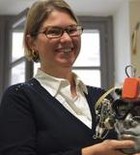
Funzione/Ruolo
Professoressa ordinaria di Ingegneria informatica al Politecnico di Torino e direttrice dell’Hub AI@polito
Percorso professionale
Si laurea in Fisica nel 1998 all'Università La Sapienza di Roma, proseguendo la sua formazione con un Master in Biomedical Signal and Image Processing. Il suo percorso di ricerca continua all'estero, prima presso l'Università di Erlangen-Norimberga, poi presso l'Istituto di ricerca Smith-Kettlewell Eye a San Francisco e al Royal Institute of Technology (KTH) di Stoccolma, dove consegue il dottorato di ricerca in Informatica nel 2005. Barbara Caputo si trasferisce in Svizzera per lavorare all'Istituto di ricerca Idiap a Martigny e in seguito diventa responsabile del gruppo di ricerca sui sistemi cognitivi artificiali dello stesso Istituto Idiap. Tornata in Italia, nel 2013 è professoressa associata del Dipartimento di Ingegneria informatica automatica e gestionale all'Università La Sapienza di Roma. Oggi è professoressa ordinaria di Ingegneria informatica al Politecnico di Torino e senior researcher all'Istituto Italiano di Tecnologia.
Risultati scientifici
Il principale interesse di ricerca di Barbara Caputo, definita dai media "la donna che parla con i robot", è lo sviluppo di algoritmi per l'apprendimento, il riconoscimento e la categorizzazione di modelli visivi e multimodali per sistemi autonomi artificiali, come appunto i robot. Alla guida del gruppo di ingegneria robotica Visual Learning and Multimodal Perception (VALEM) dal 2013, Barbara Caputo, con i suoi colleghi, sta sviluppando degli algoritmi per permettere ai robot di apprendere le informazioni direttamente da internet. Sarà così possibile creare dei robot capaci di apprendere ma anche di interagire e reagire agli imprevisti con una vasta possibilità di impieghi, dalla home robotica all'assistenza di anziani, disabili e bambini.
Attività editoriali e pubblicazioni
Barbara Caputo è autrice di diverse pubblicazioni su riviste internazionali, fra cui:
(2016) Kuzborskij I, Orabona F, Caputo B. Scalable Greedy Algorithms for Transfer Learning. Computer Vision and Image Understanding, arXiv:1408.1292.
(2015) Atzori M, Gijsberts A, Kuzborskij I, Caputo B, et al. Characterization of a Benchmark Database for Myoelectric Movement Classification.IEEE Transactions on Neural Systems and Rehabilitation Engineering, 23(1):73-83.
(2014) Castellini C, Artemiadis P, Wininger M, Caputo B, et al. Proceedings of the first workshop on Peripheral Machine Interfaces: Going beyond traditional surface electromyography. Frontiers in Neurorobotics, 8:22.
(2014) Gijsberts A, Bohra R, Sierra Gonzalez D, Caputo B, et al. Stable Myoelectric Control of a Hand Prosthesis using Non-Linear Incremental Learning.Frontiers in Neurorobotics, 25:8.
(2014) Tommasi T, Orabona F, Caputo B. Learning Categories From Few Examples With Multi Model Knowledge Transfer. The IEEE Transactions on Pattern Analysis and Machine Intelligence, 36(5):928-41.
(2013) Gijsberts A, Caputo B. Exploiting accelerometers to improve movement classification for prosthetics.IEEE International Conference on Rehabilitative Robotics, 2013:6650476.
(2012) Atzori M, Gijsberts A, Heynen S, Hager AG, Castellimi C, Caputo B, Müller H.Experiences in the creation of an electromyography database to help hand amputated persons. Studies in Health Technology and Informatics,180:828-32.
Riconoscimenti e premi
Nel 2014 Barbara Caputo si è aggiudicata il prestigioso Starting Grant dell'European Research Council (ERC) per il progetto "RoboExNovo Robots learning about objects from externalized knowledge sources". Lo Starting Grant è un riconoscimento che premia i nuovi talenti della ricerca mondiale che si impegnano a costruire il loro laboratorio in un paese Europeo.

Area STEM: Scienze biomediche e biotecnologie
Competenze: sicurezza alimentare
Parole chiave: animali domestici, animali selvatici, coronavirus, Covid-19, Covid-19: animali, encefalopatie animali, istopatologia, mammiferi marini, medicina veterinaria, mucca pazza, vaccini negli animali, zooprofilassi
Regione: Piemonte
Funzione/Ruolo
Direttrice della Struttura Complessa Neuroscienze e Centro Nazionale per la BSE dell’Istituto Zooprofilattico del Piemonte, Liguria e Valle d’ Aosta
Percorso professionale
Dopo essersi laureata in Medicina veterinaria all'Università degli studi di Torino, si specializza in Ispezione degli alimenti di origine animale presso la stessa università. In seguito consegue un dottorato di ricerca in Patologia veterinaria comparata presso l'Università degli Studi di Milano. Nel 1990 entra a far parte dell'Istituto zooprofilattico sperimentale di Piemonte, Liguria e Valle d'Aosta come veterinaria del Dipartimento di Diagnostica Generale. Nove anni dopo, diventa responsabile del Laboratorio di Istopatologia dello stesso istituto zooprofilattico. Dal 2001 è responsabile del Centro di Referenza Nazionale per le Encefalopatie Animali (in base al decreto 3/8/1991) e nel 2005 anche dell'area Neuropatologica e Genetica. Dal 2009 ottiene la carica di direttrice sanitaria dell'intero Istituto zooprofilattico sperimentale di Piemonte, Liguria e Valle d'Aosta. Nel 2012 ottiene la carica di Direttrice Generale f.f. dell'Istituto zooprofilattico sperimentale di Piemonte, Liguria e Valle d'Aosta e dall'inizio del 2016 è direttrice generale dell'Istituto.
Risultati scientifici
Maria Caramelli è una delle massime esperte mondiali di encefalopatia spongiforme bovina (BSE), nota come morbo della "mucca pazza". L'ipotesi eziologica secondo cui l'agente scatenante è una proteina alterata e malevola, il prione, che provoca lesioni ed è infettiva è stata confermata da diversi esperimenti in tutto il mondo: il prione innesca la produzione di altre proteine patologiche determinando la tipica «spongiosi» (cioè i buchi nel cervello), da cui il nome di "encefalopatie spongiformi". Attualmente con la sua équipe Maria Caramelli lavora sulla rilevazione di ceppi diversi, cioè su forme della malattia mai identificate prima: a Torino ne è stata scoperta in particolare una, detta BASE (da Bovine amyloid spongiform encephalopathy), tipica dei bovini anziani, originata da un prione probabilmente più aggressivo e virulento di quello della BSE. Si è recentemente impegnata su altri versanti della sicurezza alimentare, tra i quali ad esempio, lo "strano caso" delle mozzarelle blu, lo scandalo europeo delle lasagne a base di cavallo da corsa, i cinghiali contaminati con il Cesio137 e il problema l'epatite A nei frutti di bosco surgelati.
Attività editoriali e pubblicazioni
È autrice del libro Per non scoprirlo mangiando.... La sicurezza alimentare nel nostro paese(Instar Libri, 2013)
È autrice inoltre di più di cento pubblicazioni su riviste nazionali ed internazionali, fra cui:
(2015) Berrone E, Corona C, Mazza M, Vallino Costassa E, Lo Faro M, Properzi F, Guglielmetti C, Maurella C, Caramelli M, Deregibus MC, Camussi G, Casalone C. Detection of cellular prion protein in exosome derived from ovine plasma. Journal of General Virology, 96(12):3698-3702.
(2015) Orrú CD, Favole A, Corona C, Mazza M, Manca M, Groveman BR, Hughson AG, Acutis PL, Caramelli M, Zanusso G, Casalone C, Caughey B. Detection and discrimination of classical and atypical L-type bovine spongiform encephalopathy by real-time quaking-induced conversion. Journal of Clinical Microbiology, 53(4):1115-20
(2014) Guglielmetti C, Mazza M, Pagano M, Carrella S, Sciuto S, Nodari S, Pezzolato M, Richelmi GB, Baioni E, Caramelli M, Acutis PL, Bozzetta E. Identification by a proteomic approach of a plasma protein as a possible biomarker of illicit dexamethasone treatment in veal calves. Food additives & contaminants. Part A, Chemistry, analysis, control, exposure & risk assessment, 31(5): 833-8.
(2014) Chieppa MN, Perota A, Corona C, Grindatto A, Lagutina I, Vallino Costassa E, Lazzari G, Colleoni S, Duchi R, Lucchini F, Caramelli M, Bendotti C, Galli C, Casalone C. Modeling amyotrophic lateral sclerosis in hSOD1 transgenic swine. Neurodegenerative Diseases, 13(4):246-54.
(2013) Sciuto S, Martucci F, Desiato R, Mazza M, Guglielmetti C, Dell'Atti L, Ubaldi A, Ru G, Acutis PL, Caramelli M. Evaluation of the DR-CALUX® bioassay as screening method for the detection of contamination by dioxins in milk in Piedmont. Large Animal Review, 19(3):107-114.
(2013) Richelmi GB, Pezzolato M, Gili S, Gallina S, Decastelli L, Tarasco R, Abete MC, Ingravalle F, Serracca L, Pavino D, Vivaldi B, Riina MV, Acutis PL, Prearo M, Caramelli M, Bozzetta E. Pilot project to set up a control programme on fishery products. Italian Journal of Food Safety, 2(2):25.
(2013) Bianchi DM, Barbaro A, Gallina S, Vitale N, Chiavacci L, Caramelli M, Decastelli L. Monitoring of foodborne pathogenic bacteria in vending machine raw milk in Piedmont, Italy. Food Control, 33(2):435-439.
(2013) Meloni D, Pitardi D, Maurella C, Di Vietro D, Nocilla L, Piscopo A, Pavoletti E, Negro M, Caramelli M, Bozzetta E. Reducing the contamination of beef carcasses by specified risk materials during slaughter. Italian Journal of Food Safety, 2(1):3.
(2013) Vrentas CE, Greenlee JJ, Baron T, Caramelli M, Czub S, Nicholson EM. Stability properties of PrP(Sc) from cattle with experimental transmissible spongiform encephalopathies: use of a rapid whole homogenate, protease-free assay. BMC Veterinary Research, 9:167.
(2013) Pezzolato M, Richelmi GB, Maurella C, Pitardi D, Varello K, Caramelli M, Bozzetta E. Histopathology as a simple and reliable method to detect 17β-oestradiol illegal treatment in male calves. Food additives & contaminants. Part A, Chemistry, analysis, control, exposure & risk assessment, 30(6): 1096-9.
Riconoscimenti e premi
Nel 2005 vince il Premio AIDDA (Associazione Imprenditrici e Donne Dirigenti D'Azienda), nel 2011 viene premiata dalla Camera di Commercio di Torino con il Premio Bogianen, due anni dopo riceve il Premio Verde Ambiente (VAS Onlus) e nello stesso anno anche il Premio Tecnovisionaria (Associazione Donne e Tecnologie). Nel 2013 il Sole 24 ore l'ha inserita fra le 10 scienziate che fanno onore all'Italia. Nel 2016 riceve il premio Sapio per la Ricerca e l'Innovazione per il suo impegno di scienziata.

Funzione/Ruolo
Direttrice dell'Istituto di Astrofisica Spaziale e Fisica Cosmica di Milano (IASF)
Percorso professionale
Dopo la laurea in Fisica conseguita presso l'Università di Milano nel 1977, trascorre un periodo all'estero durante il quale è prima collaboratrice temporanea al Service d'Astrophysique del C.E.A. di Saclay (Francia) e poi Research Assistant presso la Catholic University of America al Goddard Space Flight Center della NASA. Nel 1978 entra a far parte, prima come borsista poi come ricercatrice, dell'Istituto di Fisica Cosmica Tecnologie Relative del CNR di Milano, poi confluito nell'Istituto Nazionale di Astrofisica (INAF). Continua la sua attività di studio e ricerca in Italia e all'estero partecipando a numerosi studi. Nel 1997 diventa professoressa a contratto dell'Università di Pavia e dal 2002 è Dirigente di Ricerca ed attualmente Direttrice dell'Istituto di Astrofisica Spaziale e Fisica Cosmica di Milano (IASF). Ha collaborato a diverse missioni spaziali internazionali dedicate all'astrofisica delle alte energie a cominciare dalla missione europea Cos-B. Oggi è coinvolta nella missione europea Integral, nella missione della NASA Swift, nella missione italiana AGILE e nella missione NASA Fermi, tutte in orbita e pienamente operative. Dal gennaio 2012 è responsabile per la partecipazione dell'INAF al Cherenkov Telescope Array. Il CTA coinvolge milletrecento scienziati di 32 Paesi ed è composto da due reti di telescopi che copriranno l'osservazione dell'intero cielo: il sito primario sarà nell'emisfero sud, in Cile, da dove è visibile la maggior parte della via Lattea, la nostra galassia; il secondo sito, per coprire il cielo nord, sarà nell'isola di La Palma e sarà dedicato all'osservazione delle sorgenti extragalattiche.
Risultati scientifici
Il suo campo d'interesse principale è il comportamento delle stelle di neutroni alle diverse lunghezze d'onda. È stata tra i primi a capire il ruolo fondamentale delle stelle di neutroni nell'astrofisica delle alte energie. In anni di sforzi volti all'identificazione della sorgente Geminga, riconosciuta come la prima pulsar senza emissione radio, ha messo a punto una strategia multilunghezze d'onda per l'identificazione delle sorgenti gamma galattiche. Durante le prime fasi della carriera i suoi campi d'interesse sono stati l'analisi e l'interpretazione dei dati di astronomia gamma raccolti dal satellite Cos-B e, dall'inizio dell'attività in astronomia X, l'analisi dei dati raccolti da Einstein e da EXOSAT. Successivamente, Patrizia Caraveo indaga l'astronomia multilunghezze d'onda, focalizzando in particolare la sua attenzione sull'astronomia ottica. A seguito di diverse campagne di osservazioni Patrizia Caravero e colleghi giungono alla scoperta e alla comprensione di Geminga, stella di neutroni isolata, la prima a non mostrare alcuna evidenza di emissione radio. Si apre così un nuovo campo di ricerca nell'astrofisica delle alte energie: lo studio delle sorgenti gamma non identificate diventato uno dei principali temi di ricerca da parte di diversi gruppi in tutto il mondo. Il gruppo di ricerca di Patrizia Caraveo, oltre a misurare il moto proprio di diverse stelle di neutroni, ha misurato lo spostamento parallattico di Geminga, ottenendo la prima misura ottica della distanza di una stella di neutroni isolata. Attualmente Caraveo coordina tra l'altro un programma riguardante lo studio delle sorgenti gamma non ancora identificate alla ricerca dei segni caratteristici delle stelle di neutroni. In effetti, la missione Fermi si è rivelato un efficace cacciatore di stelle di neutroni senza emissione radio e la famiglia delle stelle di neutroni simili a Geminga è arrivata a quasi cinquanta membri.
Attività editoriali e pubblicazioni
Patrizia Caraveo è autrice di numerose pubblicazioni scientifiche nazionali ed internazionali, con quasi 50.000 citazioni complessive. La lista completa è disponibile online all'indirizzo: https://fisica.unipv.it/personale/PersFiles/Publ_357.pdf.
Ha inoltre scritto 5 libri di divulgazione scientifica:
Sidereus Nuncius 2.0. I messaggeri celesti della nuova astronomia (Mondadori Università, 2021)
(con Giovanni Bignami) I marziani siam noi. All ricerca di un'altra terra (Zanichelli 2019)
Conquistati dalla Luna. Storia di un'attrazione senza tempo (Raffaello Cortina Editore)
L'universo violento (Lezioni di fisica, Corriere della sera, 2019)
Uomini e Donne: stessi diritti? (Castelvecchi editore, 2017)
Riconoscimenti e premi
Patrizia Caraveo fa parte dell'Unione Astronomica Internazionale, e ha condiviso con i colleghi dei team Swift, Fermi e AGILE, il premio Bruno Rossi della American Astronomical Society rispettivamente nel 2007, 2011 e 2012.
Grazie al successo di Geminga, nel 2009 è stata insignita del premio Nazionale Presidente della Repubblica "per i contributi dati alla comprensione dell'emissione di alta energia delle stelle di neutroni".
Nel marzo 2014 ha ricevuto lo "Outstanding Achievement Award" di Women in Aerospace-Europe.
A giugno 2014 Thomson Reuters l'ha inclusa nella lista degli "Highly Cited Researchers" per la disciplina "Space Science". Fa inoltre parte del Gruppo 2003.
Nel 2021 ha ricevuto il premio "Enrico Fermi" (ex aequo con la prof.ssa Elena Aprile) " per il suo ruolo di leader mondiale nel campo dell'emissione di alta energia delle stelle di neutroni e per il suo contributo all'identificazione di Geminga."

Funzione/Ruolo
Security Managing Director presso Accenture Italia
Percorso professionale
Dopo la laurea in Ingegneria Informatica all'Università Federico II di Napoli nel 2005, prosegue gli studi ottenendo un dottorato di ricerca in Ingegneria Informatica e Automatica presso lo stesso Ateneo nel 2008. Nel 2007 è Visiting Researcher presso il CSR (Center for Software Reliability) della London City University dove si specializza in algoritmi e modelli di reliability growth (crescita dell'affidabilità). Al termine del dottorato viene assunta in Selex Sistemi Integrati, società del gruppo Finmeccanica (ora Leonardo) in cui porta avanti le sue attività di ricerca su sistemi software altamente critici applicandone metodologie e risultati a sistemi per il controllo del traffico aereo, navale e per il controllo costiero. Durante la sua esperienza in Leonardo, segue progetti di ricerca industriale nell'ambito di programmi europei e nazionali oltre che di attività di dependability assessment e improvement (valutazione e miglioramento dell'affidabilità) su soluzioni industriali. Nel 2014 inizia a specializzarsi in metodologie e approcci basati sull'apprendimento automatico, per la riduzione dei difetti nei sistemi software e l'incremento della produttività. È stata Visiting Researcher presso l'Università di Coimbra nell'ambito del programma Marie Sklodowska Curie finalizzato alla valutazione dell'affidabilità di sistemi software critici OTS (off-the-shelf).
Da sempre interessata alle tematiche di resilienza, sicurezza e affidabilità delle infrastrutture critiche, nel 2016 diventa Cloud Advisory Manager in Accenture, dove si interessa di tematiche di trasformazione e migrazione verso sistemi cloud con particolare attenzione agli aspetti di cyber-security. A maggio 2017 consegue il Master in Business Administration (MBA) presso la Bologna Business School. Nel frattempo prosegue la carriera in Accenture ricoprendo diversi ruoli, nell'ambito del Security Management, sino a ricoprire la posizione attuale di Security Managing Director.
Risultati scientifici
Nell'arco della sua carriera professionale ha coordinato due progetti europei per la SESAR JU, finalizzati alla realizzazione di sistemi software innovativi per la supervisione di sistemi del controllo del traffico aereo e aeroporti, e un progetto nazionale (PON) per lo sviluppo di metodologie e tecniche innovative per la verifica e la validazione di sistemi software quasi in tempo reale. Dal 2013 collabora con la Commissione Europea in veste di esperta esterna per la revisione di progetti di ricerca nell'ambito del programma Horizon 2020. Le sue maggiori aree di interesse e di ricerca sono le strategie di software fault injection, dependability assessment, reliability testing, defect management e sicurezza di infrastrutture cloud. Nel 2014 ha ideato un framework per la misurazione della difettosità del software basato su analisi statica del codice finalizzato alla predizione (failure prediction) di guasti software. Gabriella Carrozza è presente nei comitati di programma di alcune delle più importanti conferenze nella comunità dei sistemi software affidabili e revisora di numerosi articoli scientifici del settore. Dal 2017 fa parte di Cloud Security Alliance Italy.
Attività editoriali e pubblicazioni
Ha pubblicato un libro su strategie di diagnosi di guasti software e diversi capitoli in pubblicazioni europee sui sistemi affidabili. È autrice di oltre 50 articoli scientifici in conferenze e riviste internazionali, tra cui:
[2015] Carrozza G. Software Faults Diagnosis in Complex Mission Critical Systems: A novel, recovery oriented, approach. Lambert Academic Publishing, ISBN-13:978-3-659-67232-3 ISBN-10:3659672327.
[2015] Carrozza G, Pietrantuono R, Russo S. Defect analysis in mission-critical software systems: a detailed investigation. Journal of Software: Evolution and Process, 27(1):22-49.
[2015] Pecchia A, Cinque M, Carrozza G, Cotroneo D. Industry Practices and Event Logging: Assessment of a Critical Software Development Process. IEEE/ACM 37th IEEE International Conference on Software Engeneering, 2:169-178.
[2014] Carrozza G, Pietrantuono R, Russo S. Dynamic test planning: a study in an industrial context. International Journal on Software Tools for Technology Transfer, 16(5):593-607.
[2013] Carrozza G, Faella M, Fucci F, Pietrantuono R, Russo S. Engineering Air Traffic Control Systems with a Model-Driven Approach. IEEE Software, 30(3):42-48.
[2013] Carrozza G, Manetti V, Marotta A, Canonico R, Avallone S. Exploiting SDN Approach to Tackle Cloud Computing Security Issues in the ATC Scenario. Dependable Computing: 54-60.
[2013] Carrozza G, Cotroneo D, Natella R, Pietrantuono R, Russo S. Analysis and Prediction of Mandelbugs in an Industrial Software System. ICST 2013, IEEE Computer Society: 262-271.
[2011] Carrozza G, Natella R. A Recovery-Oriented Approach for Software Fault Diagnosis in Complex Critical Systems. International Journal of Adaptive, Resilient and Automatic System, 2(1):77-104.
[2011] Bovenzi A, Cinque M, Cotroneo D, Natella R, Carrozza G. OS-level hang detection in complex software systems. International Journal of Critical ComputeBased System, 2(3/4):352-377.
[2010] Carrozza G, Cotroneo D, Natella R, Pecchia A, Russo S. Memory leak analysis of mission-critical middleware. Journal of Systems and Software, 83(9):1556-1567
Riconoscimenti e premi
Nel 2014 ha ricevuto il premio FINMECCANICA Innovation Silver Award per le sue attività innovative in tema di miglioramento della qualità del software. Nello stesso anno è stata Industrial Chair del 33mo IEEE Symposium on Reliable and Distributed Systems per cui ha ricevuto ufficiale riconoscimento IEEE.
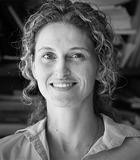
Funzione/Ruolo
Capo del Dipartimento di Supporto alle Emergenze e Prima ricercatrice presso l'EUCENTRE (Centro Europeo di Ricerca e Formazione in Ingegneria Sismica) di Pavia
Percorso professionale
Dopo aver conseguito la laurea in Ingegneria Edile/Architettura presso l'Università degli Studi di Pavia nel 2001, prosegue il suo percorso formativo con un dottorato di ricerca in ingegneria sismica nel 2004. Nel 2005 si sposta negli Stati Uniti, dove aveva già lavorato durante il dottorato, in qualità di Post doctoral research scholar presso la University of California a San Diego. Rientrata a Pavia, lavora come assegnista di ricerca all'Università. Dal 2006 è consulente per il Centro Europeo di Formazione e Ricerca in Ingegneria Sismica (EUCENTRE) dove attualmente è coordinatrice scientifica delle prove su sistemi di isolamento e dissipazione condotte presso il laboratorio sperimentale TREES Lab, e responsabile delle attività di risposta rapida alle emergenze sismiche.
Risultati scientifici
I principali interessi scientifici di Chiara Casarotti riguardano la ricerca applicata e sperimentale nel campo dell'ingegneria sismica, del comportamento dinamico delle strutture in cemento armato, dei sistemi di isolamento sismico e della valutazione strutturale post-emergenza. Nello specifico, si è occupata di procedure statiche lineari per la valutazione della risposta dinamica di strutture in cemento armato. La ricerca numerica e sperimentale si è poi spostata sui sistemi e dispositivi di isolamento e dissipazione antisismica testati a scala reale nelle strutture di prova del TREES Lab. Negli ultimi anni le attività di Chiara Casarotti si sono concentrate sulla gestione tecnica e la risposta rapida all'emergenza sismica, nell'ambito di progetti italiani ed Europei che l'hanno vista coinvolta sul campo sia in contesti esercitativi sia in terremoti reali: il tema è quello della valutazione, attraverso un'indagini sperimentali, degli edifici e delle infrastrutture nel post terremoto. Dopo il sisma dell'Aquila del 2009 e quello dell'Emilia del 2012, Casarotti viene chiamata a fornire supporto al Dipartimento di Protezione Civile per rilievi di agibilità ordinari su strutture di destinazione d'uso (residenziale, industriale, commerciale) e rilievi strumentali su strutture speciali, come l'Ospedale San Salvatore o la Di.co.ma.C di Bologna.
Attività editoriali e pubblicazioni
È autrice di numerose pubblicazioni nazionali ed internazionali fra cui:
(2014) Monteiro R, Marques M, Adhikari G, Casarotti C, Pinho R. Spectral reduction factors evaluation for seismic assessment of frame buildings. Engineering Structures, 77:129-142.
(2013) Pinho R, Marques M, Monteirom Casarotti C, et al. Evaluation of Nonlinear Static Procedures in the Assessment of Building Frames.Earthquake Spectra, 29(4):459-1476.
(2012) Casarotti C, Pavese A, Peloso S. Valutazione delle strutture nella fase post terremoto. Il modulo sviluppato da Eucentre e l'attività sul campo. Progettazione Sismica, 3:37-48.
(2009) Casarotti C, Pavese A, Peloso S. Seismic Response of the San Salvatore Hospital of Coppito (L'Aquila) during the 6th April 2009 earthquake. Progettazione Sismica, 3, Special Abruzzo, Italiano (163-176) e Inglese (159-172).
(2009) Benzoni C, Casarotti C. Effects of Vertical Load, S train Rate and Cycling on the Response of Lead-Rubber Seismic Isolators. Journal of Earthquake Engineering, 13:293-312.
(2009) Casarotti C, Monteiro R & Pinho R. Verification of spectral reduction factors for seismic assessment of bridges. Bulletin of the New Zealand Society for Earthquake Engineering, 42(2).
(2009) Pinho R, Monteiro R, Casarotti C, Delgado R. Assessment of Continuous Span Bridges through Nonlinear Static Procedures. Earthquake Spectra, 25(1):143-159.
(2007) Pinho R, Casarotti C, Antoniou S. A comparison of Single-Run Pushover Analysis Techniques for seismic assessment of bridges. Earthquake Engineering & Structural Dynamics, 36:1347-1362.
(2007) Casarotti C, Pinho R. An adaptive capacity spectrum method for assessment of bridges subjected to earthquake action. Bulletin of Earthquake Engineering, 5:377-390.
(2006) Casarotti C, Pinho R. Seismic response of continuous span bridges through fibre-based finite element analysis. Earthquake Engineering and Engineering Vibrations 5(1):119-131.
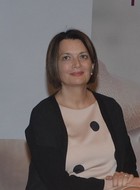
Funzione/Ruolo
Dirigente medica di I Livello, Neurologa presso il reparto di Neurologia e Stroke Unit dell’Ospedale S. Maria della Misericordia di Perugia
Percorso professionale
Specializzazione in Neurologia conseguita nel 1999, presso l’Università di Perugia.
Nel 1997 ha ottenuto una borsa di studio ERASMUS presso il Dipartimento di Neurologia dell’Università di Kiel in Germania, per approfondire le competenze in merito alla terapia acuta nell’ictus. Nel 2000 ha ottenuto una fellowship presso la Intensive Care Unit del Dipartimento di Neurologia dell’Università di Heidelberg, per lo sviluppo di terapie innovative per l’ictus. Nel 2003 ha conseguito il Dottorato di Ricerca in Malattie Cerebrovascolari, presso l’Università di Perugia. Ha partecipato inoltre al gruppo di lavoro ESO (European Stroke Organization) per la stesura delle prime linee guida europee per il trattamento dell’ictus in fase acuta.
Risultati scientifici
Dal 2003 ha iniziato ad occuparsi attivamente di ricerca sulle donne e malattie cerebrovascolari, pubblicando vari articoli scientifici sulle differenze di genere in questa patologia. L’obiettivo di questa ricerca è stato di sensibilizzare la comunità scientifica e professionale dimostrando come le donne abbiano minor accesso alle cure dedicate e siano più frequentemente escluse dagli studi clinici.
Nel 2014 ha fondato il gruppo WISE (Women Intiative for Stroke in Europe), producendo diverse pubblicazioni e progetti scientifici, incluso uno studio internazionale e multicentrico sull’ictus in gravidanza, che ad oggi rappresenta una delle cause più importanti di mortalità materna ed infantile. Questo gruppo sta lavorando attualmente alla stesura delle linee guida per l’ictus nella donna.
Nel 2014 è stata eletta presidente dell’ESO (prima donna a coprire questo ruolo), con la missione programmatica di aumentare la rappresentanza femminile nelle posizioni chiave delle società scientifiche collegate, come relatrici e responsabili delle commissioni scientifiche. Sempre nel 2014 ha ottenuto Abilitazione Scientifica Nazionale da Professore Associato, e nel 2017 quella da professore ordinario. Il progetto scientifico più importante al quale sta partecipando attualmente è il Progetto Horizon 2020 PRESTIGE AF con il ruolo di coordinatrice internazionale del gruppo di lavoro sulle diseguaglianze di genere (Prestige AF” Project ID: 7545 17/01/01/2017-31/12/2021 https://www.prestige-af.org/). Obiettivo finale di questa ricerca è di favorire l’inclusione delle donne negli studi clinici, e di individuare gli ostacoli legati alle diminuite condizioni socio-economici della donna (il cosidetto gap pensionale tra uomo e donna) ed alla “autoesclusione” delle pazienti dalle cure.
Attività editoriali e pubblicazioni
Valeria Caso è associate editor di Neurological Sciences e membro dei comitati editoriali di numerose riviste scientifiche come International Stroke Journal e European Stroke Journal. Ha pubblicato libri e capitoli in tre lingue: tedesco, italiano ed inglese. Attualmente vanta più di 300 pubblicazioni scientifiche tra le quali:
(2021) Caso V. Editorial: Coronavirus disease 2019 and stroke: how to avoid a new lockdown for stroke patients. Curr Opin Neurol. 2021 Feb 1;34(1):1-2. doi: 10.1097/WCO.0000000000000892. PMID: 33278147.
(2020) Caso V, Federico A. No lockdown for neurological diseases during COVID19 pandemic infection. Neurol Sci. 2020 May;41(5):999-1001. doi: 10.1007/s10072-020-04389-3. PMID: 32270358; PMCID: PMC7138901.
(2020) Aguiar de Sousa D, van der Worp HB, Caso V, Cordonnier C, Strbian D, Ntaios G, Schellinger PD, Sandset EC; European Stroke Organisation. Maintaining stroke care in Europe during the COVID-19 pandemic: Results from an international survey of stroke professionals and practice recommendations from the European Stroke Organisation. Eur Stroke J. 2020 Sep;5(3):230-236. doi: 10.1177/2396987320933746. Epub 2020 Jun 10. PMID: 33072876; PMCID: PMC75387
(2020) Zedde M, Pezzella FR, Paciaroni M, Corea F, Reale N, Toni D, Caso V. Stroke care in Italy: An overview of strategies to manage acute stroke in COVID-19 time. Eur Stroke J. 2020 Sep;5(3):222-229. doi: 10.1177/2396987320942622. Epub 2020 Jul 26. PMID: 33072875; PMCID: PMC7538763
(2020) Beghi E, Feigin V, Caso V, Santalucia P, Logroscino G. COVID-19 Infection and Neurological Complications: Present Findings and Future Predictions. Neuroepidemiology. 2020;54(5):364-369. doi: 10.1159/000508991. Epub 2020 Jul 1. PMID: 32610334; PMCID: PMC7445369.
(2020) Leira EC, Russman AN, Biller J, Brown DL, Bushnell CD, Caso V, Chamorro A, Creutzfeldt CJ, Cruz-Flores S, Elkind MSV, Fayad P, Froehler MT, Goldstein LB, Gonzales NR, Kaskie B, Khatri P, Livesay S, Liebeskind DS, Majersik JJ, Moheet AM, Romano JG, Sanossian N, Sansing LH, Silver B, Simpkins AN, Smith W, Tirschwell DL, Wang DZ, Yavagal DR, Worrall BB. Preserving stroke care during the COVID-19 pandemic: Potential issues and solutions. Neurology. 2020 Jul 21;95(3):124-133. doi: 10.1212/WNL.0000000000009713. Epub 2020 May 8. PMID: 32385186; PMCID: PMC7455350.
(2019) Sandset E, de Sousa Aguiar D, Christensen H, Cordonnier C, Fischer U, Katan M Kremer C Pavlovic A Sprigg N, van der Worp HB, Zedde M, Caso V. Women in the European Stroke Organisation: One, two, many. . . – A top Down and Bottom Up approach ESJ, 4, 3, 2019: 247-253.
(2019) Acciarresi M, Altavilla R, Mosconi MG, Caso V. Management of intracranial haemorrhage, unruptured aneurysms and arteriovenous malformations during and after pregnancy. Curr Opin Neurol. 2019 32(1):36-42.
(2018) Baschieri F, Acciarresi M, Caso V. Gender-Based Approaches for the Prevention and Control of Noncommunicable Diseases. Stroke , 49 (12), 2810-2811
(2017) Cordonnier C, Sprigg N, Sandset EC, Pavlovic A, Sunnerhagen KS, Caso V, Christensen H, Stroke in women – from evidence to inequalities, Women Initiative for Stroke in Europe (WISE) group. Nat Rev Neurol.;13(9):521-532.
(2017) Tsivgoulis G, Katsanos AH, Caso V, Under-representation of women in stroke randomized controlled trials: inadvertent selection bias leading to suboptimal conclusions, Ther Adv Neurol Disord. 10:241-24.
(2017) Caso V, Falorni A, Bushnell CD, Acciarresi M, Remohí J, Sprigg N, Gerli S. Pregnancy, Hormonal Treatments for Infertility, Contraception, and Menopause in Women After Ischemic Stroke: A Consensus Document. Stroke;48:501-506.
(2017) Caso V, Paciaroni M. Sex Is Not a Risk Factor in Outcome When a Stroke Unit Treats the Patient. Stroke;48:250-251.
(2016) Arnao V, Acciarresi M, Cittadini E, Caso V. Stroke incidence, prevalence and mortality in women worldwide. Int J Stroke. 2016;11:287-301.
(2014) Acciarresi M, De Luca P, Caso V, Agnelli G, D'Amore C, Alberti A, Venti M, Paciaroni M. Acute stroke symptoms: do differences exist between sexes? J Stroke Cerebrovasc Dis.;23:2928-33.
(2014) Pezzella FR, Santalucia P, Vadalà R, Giugni E, Zedde ML, Sessa M, Anticoli S, Caso V; Women Stroke Association. Women Stroke Association Statement on Stroke. Int J Stroke;9:20-27.
(2013) De Rango P, Brown MM, Leys D, Howard VJ, Moore WS, Paciaroni M, Ringleb P, Rockman C, Caso V. Management of carotid stenosis in women: consensus document. Neurology;80:2258-68.
(2013) Santalucia P, Pezzella FR, Sessa M, Monaco S, Torgano G, Anticoli S, Zanoli E, Maimone Baronello M, Paciaroni M, Caso V; Women Stroke Association (WSA). Sex differences in clinical presentation, severity and outcome of stroke: results from a hospital-based registry. Eur J Intern Med;24:167-71.
(2010) Caso V, Paciaroni M, Agnelli G, Corea F, Ageno W, Alberti A, Lanari A, Micheli S, Bertolani L, Venti M, Palmerini F, Billeci AM, Comi G, Previdi P, Silvestrelli G. Gender differences in patients with acute ischemic stroke. Womens Health (Lond). 2010;6:51-7.
Riconoscimenti e premi
2015 - Socia onoraria della “Société française neuro-vasculaire”
2017 - Premio della Critica del R.O.S.A., Club Canova Roma
2017 - Premio Toshkent Tibbiyot Akademiyasi
2018 - Premio Umbria in Rosa 2018
2019 - ESO-Angels Award for EXCELLENT STROKE CARE and EXCEPTIONAL STROKE PRACTITIONERS

Funzione/Ruolo
Ricercatrice presso l’IBFM-CNR (Istituto di Bioimmagini e Fisiologia Molecolare – Consiglio Nazionale delle Ricerche) di Milano
Percorso professionale
Dopo la laurea in Fisica presso l'università di Milano nel 1993, ha conseguito una formazione scientifica nel settore della fisica applicata alla medicina, (più recentemente ai beni culturali e ambiente), in particolare in applicazioni della diagnostica per immagini combinata a tecniche computazionali avanzate. Dal 1997 è Ricercatrice presso l’Istituto di Bioimmagini e Fisiologia Molecolare del Consiglio Nazionale delle Ricerche (IBFM-CNR), presso cui, dal 2011, è anche Componente del Consiglio d’Istituto.Dal 2010 al 2016 è stata docente a contratto dell’Università di Milano-Bicocca. Ha maturato esperienze di responsabilità di ricerca attraverso la creazione e gestione di un proprio gruppo di ricerca presso l’IBFM-CNR, consolidatosi, nel 2011, in un Laboratorio di ricerca (Laboratorio di Integrazione&Innovazione in Imaging Molecolare, INLAB www.inlab.ibfm.cnr.it), che ospita attualmente 10 ricercatori con competenze nel settore della fisica delle bioimmagini, informatica, biologia e biotecnologia.
Risultati scientifici
Ha ottenuto importanti risultati scientifici in: 1) caratterizzazione fisica dei sistemi di imaging diagnostico, in particolare tomografia a emissione di positroni (PET), tomografia a emissione di fotoni singoli (SPECT), tomografia computerizzata (CT), risonanza magnetica (MRI), imaging a fluorescenza / bioluminescenza e spettroscopia nel vicino infrarosso (fNIRS), 2) sviluppo di metodi di acquisizione ed elaborazione di immagini diagnostiche per applicazioni mediche e culturali, 3) sviluppo di metodi e modelli per la correzione di effetti fisici, fonti di rumore negli studi di diagnostica per immagini (es. attenuazione, dispersione, effetto volume parziale), 4) sviluppo di metodi di quantificazione e estrazione di caratteristiche da immagini diagnostiche (ad esempio analisi di mappatura parametrica statistica, radiomica, analisi delle componenti principali, apprendimento macchina), 5) creazione di database di immagini mediche sintetiche per la convalida di metodi di elaborazione e quantificazione delle immagini mediche. Dal 2010 ha coordinato 13 progetti di ricerca scientifica finanziati su bandi competitivi o mediante contratti, per un finanziamento totale netto a fondo perduto pari a 2M€, e 12 progetti di ricerca in convenzione con IRCCS e Aziende Ospedaliere). Ha presentato i risultati delle sue ricerche in più di 50 seminari e lezioni in convegni nazionali e internazionali, università e istituti di ricerca. E’ co-inventrice di quattro software per l’estrazione e la quantificazione di biomarcatori da immagini e dati biomedici, in uso presso strutture sanitarie nazionali ed estere. Dal 2012 al 2015 è stata Mentore di due spin off nel settore delle tecnologie biomediche.
Attività editoriali e pubblicazioni
Ha al suo attivo 112 pubblicazioni scientifiche in riviste scientifiche ISI, tra le quali Science, Nucleic Acids Research, Theranostics, European Journal of Nuclear Medicine and Molecular Medicine, Cerebral Cortex; in oltre il 70% delle pubblicazioni è in posizione primaria (con ruolo di primo, corresponding o ultimo autore).
[2005] Berti A, Bottini G, Gandola M, Pia L, Smania N, Stracciari A, Castiglioni I, Vallar G. Shared cortical anatomy for motor awareness and motor control. Science, 309(5733):488-91.
[2014]Picchio M, Kirienko M, Mapelli P, Dell'Oca I, Villa E, Gallivanone F, Gianolli L, Messa C, Castiglioni I. Predictive value of pre-therapy (18)F-FDG PET/CT for the outcome of (18)F-FDG PET-guided radiotherapy in patients with head and neck cancer. Eur J Nucl Med Mol Imaging, 41(1):21-31.
[2015] Bertoli G, Cava C, Castiglioni I. MicroRNAs: New Biomarkers for Diagnosis, Prognosis, Therapy Prediction and Therapeutic Tools for Breast Cancer. Theranostics, 5(10):1122-43.
[2015] Salvatore C, Cerasa A, Battista P, Gilardi MC, Quattrone A, Castiglioni I; Alzheimer's Disease Neuroimaging Initiative. Magnetic resonance imaging biomarkers for the early diagnosis of Alzheimer's disease: a machine learning approach. Front Neurosci, 9:307. doi: 10.3389/fnins.2015.00307. eCollection 2015.
[2016] Colaprico A, Silva TC, Olsen C, Garofano L, Cava C, Garolini D, Sabedot TS, Malta TM, Pagnotta SM, Castiglioni I, Ceccarelli M, Bontempi G, Noushmehr H. TCGAbiolinks: an R/Bioconductor package for integrative analysis of TCGA data. Nucleic Acids Res, 44(8):e71. doi: 10.1093/nar/gkv1507.
[2017] Antunovic L, Gallivanone F, Sollini M, Sagona A, Invento A, Manfrinato G, Kirienko M, Tinterri C, Chiti A, Castiglioni I.[18F]FDG PET/CT features for the molecular characterization of primary breast tumors. Eur J Nucl Med Mol Imaging, 44(12):1945-1954.
[2017] Berti A, Della-Torre E, Gallivanone F, Canevari C, Milani R, Lanzillotta M, Campochiaro C, Ramirez GA, Bozzalla Cassione E, Bozzolo E, Pedica F, Castiglioni I, Arcidiacono PG, Balzano G, Falconi M, Gianolli L, Dagna L. Quantitative measurement of 18F-FDG PET/CT uptake reflects the expansion of circulating plasmablasts in IgG4-related disease.Rheumatology, 56(12):2084-2092.
[2018] Gargano M, Galli A, Bonizzoni L, Alberti R, Aresi N, Caccia M, Castiglioni I, Interlenghi M, Salvatore C, Ludwig N, Martini M. The Giotto's workshop in the XXI century: looking inside the “God the Father with Angels” gable. Journal of cultural heritage: https://doi.org/10.1016/j.culher.2018.09.016
[2019] Cantini L, Bertoli G, Cava C, Dubois T, Zinovyev A, Caselle M, Castiglioni I, Barillot E, Martignetti L. Identification of microRNA clusters cooperatively acting on Epithelial to Mesenchymal Transition in Triple Negative Breast Cancer.NAR, in press (Published on-line).
[2019] Musazzi L, Sala N, Tornese P, Gallivanone F, Belloli S, Conte A, Di Grigoli G, Fenghua C, Treccani G, Bazzini C, Castiglioni I, Nyengaard JR, Wegener G, Moresco RM, Popoli P. Acute inescapable stress rapidly increases synaptic energy metabolism in prefrontal cortex and alters working memory performance.Cerebral Cortex, in press.
Riconoscimenti e premi
Dal 2007 al 2009 è stata Tutor di Foreign Scientific Visitors per l'Agenzia Internazionale di Energia Atomica (IAEA).E’ valutatrice scientifica di progetti di ricerca per Istituzioni Internazionali (Engineering in Medical and Biology Society, Fundacao para a Cienca e a Tecnologia FCT–Portugal, French Institute National du Cancer, Poland National Science Center, Horizon2020).É revisora scientifica in riviste scientifiche internazionali nel settore delle bioimmagini e della diagnostica molecolare e svolge attività editoriale, in qualità di Associate Editor e Guest Editor. In particolare è stata Lead Guest Editor delloSpecial Issue “Frontiers in Biomarkers for theranostics” in Frontiers in Bioscience – Landmark, dello Special Issue “Frontiers from Radiomics in Molecular Imaging” in Contrast Media and Molecular Imaging, e dello Special Issue “Imaging biomarkers for the diagnosis and prognosis of neurodegenerative diseases” in Frontiers in Neuroscience.
Nel settembre 2021 viene nominata fra le 50 donne italiane di maggiore ispirazione per il mondo della tecnologia con il riconoscimento InspiringFifty for Italy.

Funzione/Ruolo
Professoressa ordinaria di Ingegneria informatica e Direttrice del Dipartimento di Ingegneria informatica, automatica e gestionale dell'Università La Sapienza di Roma.
Percorso professionale
Dopo aver conseguito la laurea in Ingegneria Elettronica all'Università La Sapienza di Roma nel 1987, prosegue la sua formazione con un dottorato in Informatica nella stessa università. Dal novembre 2000 è professoressa ordinaria di Sistemi di Elaborazione delle Informazioni presso la Facoltà di Ingegneria Informatica, Informatica e Statistica della Università la Sapienza di Roma. Dal 2009 all'ottobre 2014 è presidente del Centro InfoSapienza. Dal novembre 2010 all'aprile 2014 è prorettrice per le Infrastrutture e le Tecnologie e coordinatrice dell'Organismo di Indirizzo e Raccordo (OIR) della stessa università. Dal 2014 è direttrice del Centro Interuniversitario sull'Elaborazione Cognitiva in Sistemi Naturali e Artificiali (ECONA). Dal maggio 2015 è direttrice del centro interdipartimentale di ricerca "Sapienza Design Research". Dal luglio 2015 è presidente di KION S.p.A., una azienda appartenente al gruppo CINECA. Dal 2018 è Direttrice del Dipartimento di Ingegneria informatica, automatica e gestionale dell'Università La Sapienza di Roma.
La professoressa Catarci è molto attiva nella lotta contro le disparità di genere e nella promozione delle discipline STEM tra le studentesse, promuovendo progetti dedicati sia a livello scolastico che universitario e fungendo da modello per "Inspiring Girls" e altre iniziative.
Risultati scientifici
L'attività di ricerca di Tiziana Catarci si concentra sin dai suoi esordi sull'interazione persona-calcolatore, fornendo uno tra i primi e più significativi contributi a livello internazionale relativamente alle tematiche di interazione utente e usabilità applicate al settore delle basi di dati. Avendo iniziato a lavorare in questa area alla fine degli anni Ottanta, quando i sistemi interattivi erano agli esordi, Tiziana Catarci e il suo gruppo hanno di recente ripreso, sviluppato e reso attuali molti dei risultati di quegli anni, ora che l'usabilità, e più in generale la "user experience" sono tra le caratteristiche essenziali della cosiddetta "smart interaction". Rimanendo nell'ambito applicativo delle basi di dati, Tiziana Catarci, consapevole che con lo sviluppo e la diffusione di Internet sempre un maggior numero di utenti avrebbe iniziato a interagire con una enorme quantità di informazioni spesso disomogenee e destrutturate, ha sviluppato nuove interfacce che permettono di reperire, integrare e manipolare dati multimediali provenienti da fonti diverse in modo che tutto sia accessibile anche a chi, tra gli utenti, non possiede particolari conoscenze tecniche. Nella sua attività di ricerca Tiziana Catarci si è anche interessata a problematiche specifiche delle basi di dati, quali la modellazione e interrogazione di sorgenti eterogenee, su cui ha ottenuto interessanti risultati, e, recentemente, alla qualità dei dati, che costituisce oggi una tematica fortemente innovativa e di cruciale importanza per i moderni sistemi informativi e la società digitale.
Attività editoriali e pubblicazioni
Tiziana Catarci fa parte del Comitato scientifico e svolge attività di revisione per molte importanti riviste scientifiche e conferenze internazionali dei settori di interesse, incluse ACM Transactions on Computer-Human Interaction, ACM Transactions on Information Systems, VLDB Journal, IEEE Transactions on Knowledge and Data Engineering, WWW Journal, Journal of Visual Languages and Computing, ACM Interact, Computing Surveys, VLDB, ACM Sigmod, IEEE Multimedia, ACM CHI.
È autrice di oltre 200 articoli scientifici su riviste internazionali, fra cui:
(2014) Bauleo E, Carnevale S, Catarci T, Kimani S, Leva M, Mecella M. Design, realization and user evaluation of the SmartVortex Visual Query System for accessing data streams in industrial engineering applications. Journal of Visual Languages and Computing 25(5):577-601.
(2010) Catarci T, Dix AJ, Kimani S, Santucci G. User-Centered Data Management. Morgan & Claypool Publishers.
(2010) Bianchini D, Montanelli S, Catarci T, et al. Emergent Semantics and Cooperation in Multi-knowledge Communities: the ESTEEM Approach. World Wide Web Journal, 13(1):3-31.
(2008) Catarci T, et al. Pervasive Software Environments for Supporting Disaster Responses. IEEE Internet Computing, 12(1):26-37.
(2006) Czerwinski M, Gage DW, Gemmell J, Marshall CC, Pérez-Quiñones MA, Skeels MM, Catarci T. Digital memories in an era of ubiquitous computing and abundant storage. Communications of the ACM, 49(1):44-50.
(2003) Mecella M, Scannapieco M, Virgillito A, Baldoni R, Catarci T, Batini C. Managing Data Quality in Cooperative Information Systems. Journal on Data Semantics (LNCS subline, Springer), 1:208-232.
(2000) Catarci T. What Happened When Database Researchers Met Usability. Information Systems, 25(3):177-212.
(1997) Catarci T, Costabile MF, Levialdi S, Batini C. Visual Query Systems for Databases: A Survey. Journal of Visual Languages and Computing, 8(2), 215-260.
(1993) Catarci T, Lenzerini M. Representing and Using Interschema Knowledge in Cooperative Information Systems. Journal of Intelligent and Cooperative Information Systems, 2(4):375-398.
(1990) Angelaccio M, Catarci T, Santucci G. QBD: A Graphical Query Language with Recursion. IEEE Transactions on Software Engineering, 16(10):1150-1163.
Riconoscimenti e premi
Nel 2003 vince l'IBM Eclipse Innovation Award per il progetto SEAWER, SEmantic Annotation of WEb Resources.
Nel 2014 è la prima candidata donna alla carica di Rettore nella secolare storia della Università la Sapienza.
Nel 2015 riceve l'onorificenza di Commendatore della Repubblica Italiana.
Nel 2016, è invitata a far parte della prestigiosa European Academy of Sciences and Arts.
Nel 2021 vince il premio internazionale "Le Tecnovisionarie".
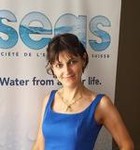
Area STEM: Ingegneria
Competenze: acustica ambientale, acustica edilizia, cicli termodinamici, efficienza energetica, energie alternative, fisica tecnica, ingegneria civile, trasmissione del calore, trattamento dell'aria
Parole chiave: ambiente, awa modula, carenza idrica, cicli termodinamici, edilizia sostenibile, estrazione di acqua dall'aria, fonti rinnovabili, risparmio energetico, seas-sa, trasmissione del calore
Regione: ESTERO
Funzione/Ruolo
Responsabile Ricerca & Sviluppo presso la SEAS-SA. Ricercatrice esterna e docente a contratto presso l'Università degli studi di Pavia.
Percorso professionale
Dopo la laurea in Ingegneria Civile, indirizzo Idraulico, conseguita all'Università degli Studi di Pavia nel 2001, prosegue gli studi con un Master di primo livello sulla Tutela delle acque superficiali presso la stessa università. In seguito, frequenta un corso di acustica alla F.A.S.T. (Federazione delle associazioni scientifiche e tecniche) diventando "tecnico competente in acustica ambientale". Dal 2001 al 2014 presta servizio, prima come tutor poi come collaboratrice esterna alla ricerca e alla didattica, presso l'Università di Pavia, facoltà di ingegneria, per l'insegnamento di Fisica Tecnica. Parallelamente, consegue il dottorato di ricerca in Tecnologie per l'energia e per l'ambiente all'Università degli studi di Bergamo, con una tesi sull'edilizia energeticamente sostenibile. Oltre ad essere "certificatore energetico" in Lombardia e in Liguria, viene scelta per insegnare in numerosi corsi per la formazione di questi professionisti. Nel frattempo si dedica anche alla libera professione come tecnica competente in acustica. Nel 2012, Lucia Cattani partecipa al progetto, in collaborazione con l'Università di Pavia, che permette a lei e ai colleghi di realizzare un prototipo di macchina per l'estrazione di acqua dall'aria. Attualmente è responsabile della divisione ricerca e sviluppo per SEAS-SA, la start up svizzera creata per commercializzare macchine integrate per l'estrazione di acqua dall'aria e l'ottimizzazione energetica degli impianti negli edifici.
Risultati scientifici
Grazie alla specializzazione ottenuta con il lavoro di didattica e ricerca e con il dottorato in Fisica Tecnica, Lucia Cattani, accanto alla formazione di base in idraulica e trattamento delle acque, acquista una vasta esperienza in ambito di risparmio energetico, energie alternative, cicli termodinamici, sistemi cogenerativi, trattamento dell'aria e della condensa, acustica ambientale. Competenze che le consentono di entrare nel gruppo di progettazione di un prototipo di macchina per estrarre acqua dall'aria e di diventare R&D manager della SEAS-SA per la costruzione e vendita di tali macchine. Il principio fisico alla base del sistema è l'accelerazione dalla naturale condensazione del vapore contenuto nell'aria per mezzo di un ciclo inverso a compressione. L'evoluzione del progetto, che ha portato alla creazione della macchina commerciale AWA modula, ha permesso di sfruttare al meglio tutti gli effetti positivi del sistema e la possibilità di integrarlo negli impianti esistenti negli edifici. In tal modo, con un'unica spesa energetica, si ottiene acqua di ottima qualità, un contributo per il riscaldamento e uno per il raffreddamento. Il prodotto, che si pone come una soluzione alla carenza idrica e al risparmio energetico, è già commercializzato in diverse parti del mondo tra cui Italia, Emirati Arabi, Caraibi, Messico, Perù, Tunisia, Libia.
Attività editoriali e pubblicazioni
Lucia Cattani partecipa a conferenze nazionali ed internazionali ed è autrice di numerosi articoli scientifici, tra cui:
(2024) L. Cattani; A. Magrini; A. Chiari. A Method and Metrics to Assess the Energy Efficiency of Smart Working. Buildings 14(3), 741; https://doi.org/10.3390/buildings14030741
(2023) P. Cattani; L. Cattani; A. Magrini. Tyre–Road Heat Transfer Coefficient Equation Proposal. Appl. Sci. 2023, 13, 11996. https://doi.org/10.3390/app132111996 publisher’s link https://www.mdpi.com/2076-3417/13/21/11996
(2023) L. Cattani; P. Cattani; A. Magrini; R. Figoni; D. Dondi; D. Vadivel. Suitability and Energy Sustainability of Atmospheric Water Generation Technology for Green Hydrogen Production. Energies 2023, 16, 6440. https://doi.org/10.3390/en16186440 publisher’s link https://www.mdpi.com/1996-1073/16/18/6440
(2023) L. Cattani; P. Cattani; A. Magrini. Air to Water Generator Integrated System Real Application: A Study Case in a Worker Village in United Arab Emirates. Appl. Sci. 2023, 13, 3094. https://doi.org/10.3390/app13053094 publisher’s link https://www.mdpi.com/2076-3417/13/5/3094
(2022) L. Cattani; A. Magrini; V. Leoni. Energy Performance of Water Generators from Gaseous Mixtures by Condensation: Climatic Datasets Choice. Energies 2022, 15, 7581. https://doi.org/10.3390/en15207581, publisher’s link https://www.mdpi.com/1996-1073/15/20/7581
(2021) L. Cattani; P. Cattani; A. Magrini. Air to Water Generator Integrated Systems: The Proposal of a Global Evaluation Index—GEI Formulation and Application Examples. Energies 2021, 14, 8528. https://doi.org/10.3390/en14248528, publisher’s link https://www.mdpi.com/1996-1073/14/24/8528
(2021) L. Cattani; P. Cattani; A. Magrini. Extraction from Air: A Proposal for a New Indicator to Compare Air Water Generators Efficiency. Energies 2021, 14, 224. https://doi.org/10.3390/en14010224, publisher’s link https://www.mdpi.com/1996-1073/14/1/224
(2021) L. Cattani; P. Cattani; A. Magrini. Photovoltaic Cleaning Optimization: A Simplified Theoretical Approach for Air to Water Generator (AWG) System Employment. Energies 2021, 14, 4271. https://doi.org/10.3390/en14144271, publisher’s link https://www.mdpi.com/1996-1073/14/14/4271
(2018) Cattani L. Magrini A., Cattani P. Water Extraction from Air by Refrigeration¡ªExperimental Results from an Integrated System Application, Applied Sciences. 2018; 8(11):2262.
(2017) Magrini A, Cattani L, Cartesegna M, Magnani L.Water Production from Air Conditioning Systems: Some Evaluations about a Sustainable Use of Resources, Sustainability 2017, 9(8), 1309; doi:10.3390/su9081309.
(2015) Magrini A, Cattani L, Cartesegna M, Magnani L. Production of water from the air: the environmental sustainability of air-conditioning systems through a more intelligent use of resources. The advantages of an integrated system. Energy Procedia, 78:1153-1158.
(2015) Magrini A, Cattani L, Cartasegna M, Magnani L. Integrated systems for air conditioning and production of drinking water - Preliminary considerations. Energy Procedia, 75:1659-1665.
(2010) Magrini A, Cattani L, Magnani L. A global index to evaluate the acoustical and thermal behavior of buildings: first evaluations and applications to common building walls. ISRA Melbourne, Victoria, Australian Acoustical Society.

Area STEM: Matematica
Competenze: applicazioni economiche, finanziarie e assicurative del controllo stocastico, applicazioni economiche, finanziarie e assicurative del filtraggio stocastico, calcolo delle probabilità, matematica applicata
Parole chiave: calcolo stocastico, modelli stocastici, processi stocastici
Regione: Lazio
Funzione/Ruolo
Professoressa ordinaria di Metodi Matematici dell’Economia e delle Scienze Attuariali e Finanziarie presso la Facoltà di Economia (Dip. MEMOTEF) dell’Università di Roma La Sapienza. Componente della Commissione Scientifica dell’Unione Matematica Italiana.
Percorso professionale
Claudia Ceci ha conseguito la laurea (con lode) in Matematica nel 1990 e nel 1996 il Dottorato di Ricerca in Calcolo delle Probabilità presso l’Università di Roma la Sapienza.
Nell’anno accademico 1991-92 ha usufruito di una borsa C.N.R. per l’estero trascorrendo un periodo di ricerca presso il "Laboratoire des Probabilites" dell’Università di Parigi VI.
Dal 1993 al 1998 è stata ricercatrice universitaria presso l’Università di Firenze. Nel 1998 ha vinto il concorso nazionale per professore di seconda fascia in Probabilità e Statistica Matematica, prendendo servizio come professoressa associata presso l’Università di Chieti-Pescara. Nella stessa Università nel 2011 è diventata Professoressa ordinaria nel medesimo settore scientifico disciplinare. Dal 1 settembre 2022 è professoressa ordinaria di Metodi Matematici dell’Economia e delle Scienze Attuariali e Finanziarie presso la Facoltà di Economia dell’Università di Roma Sapienza.
Ha svolto diverse attività gestionali presso l’Università di Chieti-Pescara, tra le quali Presidente del Corso di laurea in Economia e Commercio e Coordinatrice del Dottorato di Ricerca in Scienze.
Risultati scientifici
Claudia Ceci ha ottenuto risultati di rilievo nell’ambito del filtraggio stocastico e controllo stocastico e delle loro applicazioni. La sua ricerca da diversi anni si focalizza principalmente nelle applicazioni economiche, finanziarie e assicurative; in particolare, nell’ambito di modelli di mercati finanziari incompleti anche in contesto d'informazione parziale con dinamiche di puro salto e di diffusione con salti, tra cui hedging e pricing di titoli derivati inclusi quelli creditizi e di tipo assicurativo con rischio di mortalità. Molteplici lavori riguardano problemi di scelta di portafogli finanziari e riassicurativi discussi con l’approccio classico di controllo stocastico basato sulla risoluzione dell’equazione di Hamilton-Jacobi-Bellman, o con tecniche basate sulle BSDEs (equazioni differenziali stocastiche retrograde) che sono versatili in contesto non-markoviano e infinito-dimensionale. Recentemente si è appassionata alla modellizzazione, tramite processi di contagio, di fenomeni che presentano clusters, come le perdite assicurative dovute ad eventi catastrofici.
Claudia Ceci ha partecipato ha numerosi Progetti di Ricerca, svolgendo il ruolo di responsabile di Unità per tre progetti d’interesse nazionale: COFIN 1999, PRIN 2006 e PRIN 2008. Ha diretto tre progetti GNAMPA-INdAM (Istituto Nazionale di Alta Matematica) nel 2016, 2020 e 2022.
Attualmente è responsabile di Unità del PRIN 2022 “Optimal control and games and the role of information” e dal 2024 dirige un Progetto Grande Sapienza, triennale, dal titolo “Stochastic Optimization Problems in Insurance, Finance and Economics”.
Attività editoriali e pubblicazioni
Claudia Ceci è autrice di più di 50 articoli su riviste scientifiche internazionali. Ha presentato i risultati della propria ricerca a circa 60 conferenze e workshops internazionali in Italia e all’estero. Molte delle presentazioni sono state su invito.
Fa parte dell’Editorial Board di due riviste scientifiche internazionali: Journal Stochastic Analysis and Applications e AIMS Mathematics . E’ stata Guest Editor della Special Issue Stochastic Optimization Methods in Economics, Finance and Insurance, Mathematics. Svolge il ruolo di reviewer per numerose riviste scientifiche internazionali, di tesi di dottorato e di progetti di ricerca.
Tra le principali pubblicazioni:
M.Brachetta, G.Callegaro, C.Ceci, C.Sgarra: Optimal reinsurance via BSDEs in a partially observable model with jump clusters, Finance and Stochastics, 2023.
C.Ceci, K.Colaneri, A.Cretarola: Optimal Reinsurance and Investment under Common Shock Dependence Between Financial and Actuarial Markets, Insurance: Mathematics and Economics, 2022.
M.Brachetta, C.Ceci: A Stochastic Control Approach to Public Debt Management, Mathematics and Financial Economics, 2022.
M.Brachetta, C.Ceci: A BSDE-based approach for the optimal reinsurance problem under partial information , Insurance: Mathematics and Economics, 2020.
C.Ceci, K.Colaneri, A.Cretarola: Indifference pricing of pure endowments via BSDEs under partial information , Scandinavian Actuarial Journal, published online 2020, https://doi.org/10.1080/03461238.2020.1790030.
G.Callegaro, C.Ceci, G.Ferrari: Optimal reduction of public debt under partial observation of the economic growth , Finance and Stochastics, 2020, https://doi.org/10.1007/s00780-020-00438-z.
C.Ceci, K.Colaneri, R.Frey, V.Koeck: Value adjustments and dynamic hedging of Reinsurance Counterparty Risk , SIAM Journal on Financial Mathematics, 2020.
L.Bo, C.Ceci: Locally Risk-Minimizing Hedging of Counterparty Risk for Portfolio of Credit Derivatives , Applied Mathematics and Optimization, 2020.
C.Ceci, K.Colaner, A.Cretarola: Local risk-minimization under restricted information on asset prices, Electronic Journal of Probability, 2015.
C.Ceci, A.Cretarola, F.Russo: BSDES under partial information and financial applications, Stochastic Processes and their Applications, 2014, http://dx.doi.org/10.1016/j.spa.2014.03.003.
C.Ceci, K.Colaneri: The Zakai equation of nonlinear filtering for jump-diffusion observation: existence and uniqueness, Applied Mathematics and Optimization, 2014.
C.Ceci, K.Colaneri: Nonlinear filtering for jump diffusion observations, Advances in Applied Probability, 2012.
Riconoscimenti e premi
Nel 1990 ha ricevuto il Premio di laurea in ricordo della Prof. ssa Gabriella Del Grosso, Dip. di Matematica Castelnuovo, Università di Roma Sapienza.
Ha vinto due borse C.N.R., la prima per laureandi nel 1989 (classificandosi al settimo posto su 30 borse) e la seconda per ricerca all’estero nel 1990 (classificandosi terza su 23 posti) , che ha usufruito presso il "Laboratoire des Probabilites" dell’Università Paris VI.
Dal 2020 fa parte della Giunta del Gruppo UMI-PRISMA (Probability In Statistics, Mathematics and Applications) e dal 2021 è componente della Commissione Scientifica dell’Unione Matematica Italiana (https://umi.dm.unibo.it/organi-direttivi/).
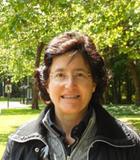
Funzione/Ruolo
Professoressa ordinaria di Matematica all'Università Tor Vergata di Roma e membro del Consiglio Direttivo dell'ANVUR
Percorso professionale
Dopo la laurea in Matematica presso l'Università La Sapienza di Roma, prosegue la sua formazione attraverso un dottorato di ricerca in matematica presso il Politecnico Federale di Zurigo (ETH) nel 1989. In seguito diventa ricercatrice confermata presso il Dipartimento di Matematica, raggruppamento Fisica Matematica dell'Università de L'Aquila fino al 1999. Da quell'anno è professoressa associata di Fisica Matematica all'Università di Roma Tor Vergata. Dal 2013 è professoressa ordinaria presso la stessa università e dal 2015 al 2018 è direttrice del Dipartimento di Matematica sempre all'Università di Tor Vergata, dal 2010 al 2020 è anche coordinatrice del Master di II livello in "Scienza e Tecnologia Spaziale". Nel 2019 viene nominata Consigliera di Amministrazione dell'Agenzia Spaziale Italiana, ruolo che mantiene fino al febbraio 2020. Da aprile 2020 è membro del Consiglio Direttivo dell'ANVUR.
Risultati scientifici
Gli interessi di ricerca di Alessandra Celletti comprendono la meccanica celeste, la teoria dei sistemi dinamici, le traiettorie interplanetarie e lo studio della dinamica dei detriti spaziali. Scienza di antichissime origini, la Meccanica Celeste studia la dinamica degli oggetti del sistema solare, dalla Luna ai pianeti, alle sonde spaziali e ai satelliti artificiali. Sono molteplici le domande a cui si cerca di rispondere: ad esempio se il futuro del sistema solare preveda collisioni tra pianeti e dove sia possibile costruire le autostrade interplanetarie. E ancora si indaga sul destino finale dei detriti spaziali o su quanto sia reale (e come sia evitabile) la minaccia che un piccolo asteroide entri in rotta di collisione con la Terra.
Attività editoriali e pubblicazioni
È autrice di diversi libri, sia a livello universitario che divulgativi:
Celletti A, Esercizi di Meccanica Razionale, Aracne editrice, 1999.
Celletti A, Stability and Chaos in Celestial Mechanics, Springer-Praxis, 2010.
Celletti A, Perozzi E, Celestial Mechanics: The Waltz of the Planets, Springer-Praxis, 2007. Celletti A, Perozzi E, Pianeti per caso, UTET, 2012.
Alessandra Celletti è anche autrice di numerosi articoli scientifici pubblicati su riviste nazionali e internazionali tra cui:
(2016) Celletti A, Gales C, Pucacco G. Bifurcation of lunisolar secular resonances for space debris orbits. SIAM, Journal on Applied Dynamical Systems, 15(3):1352-1383.
(2016) Gkolias I, Celletti A, Efthymiopoulos C, Pucacco G. The theory of secondary resonances in the spin-orbit problem. Monthly Notices of the Royal Astronomical Society, 459:1327-1339.
(2016) Lhotka C, Celletti A, Gales C. Poynting-Robertson drag and solar wind in the space debris problem. Monthly Notices of the Royal Astronomical Society, 460(1):802-815.
(2015) Celletti A, Gales C. Dynamical investigation of minor resonances for space debris. Celestial Mechanics and Dynamical Astronomy, 123(2):203-222.
(2015) Celletti A, Pucacco G, Stella D. Lissajous and Halo orbits in the restricted three-body problem. Journal of Nonlinear Science, 25(2):343-370.
(2014) Celletti A, Gales C. On the dynamics of space debris: 1:1 and 2:1 resonances. Journal of Nonlinear Science, 24(6):1231-1262.
(2014) Calleja R, Celletti A, Falcolini C, de la Llave R. An extension of Greene's criterion for conformally symplectic systems and a partial justification. SIAM Journal on Mathematical Analysis, 46(4):2350-2384.
(2013) Calleja R, Celletti A, de la Llave R. A KAM theory for conformally symplectic systems: efficient algorithms and their validation. Journal of Differential Equations, 255(5):978-1049.
(2011) Celletti A, Stefanelli L, Lega E, Froeschle' C. Global dynamics of the regularized restricted three-body problem with dissipation. Celestial Mechanics and Dynamical Astronomy, 109:265-284.
(2009) Celletti A, Chierchia L. Quasi-periodic attractors in Celestial Mechanics. Archive for Rational Mechanics and Analysis, 191(2):311-345.
Riconoscimenti e premi
Dal 2001 al 2013 presiede la Società Italiana di Meccanica Celeste e Astrodinamica (SIMCA), inoltre l'asteroide 2005 DJ1, n. 117539 porta il nome Alessandra Celletti. Nel 2010 è eletta componente a vita del Celestial Mechanics Institute, organizzazione internazionale composta da 20 esperti di Meccanica Celeste e, nel 2011, riceve dalla Comunità Europea un grant per il progetto ASTRONET-II "Marie Curie Initial Training Networks", settore Matematica. Nel 2012 è relatrice invitata al sesto convegno della European Mathematical Society e nello stesso anno ottiene dalla Comunità Europea un grant per il progetto STARDUST "Marie Curie Initial Training Networks". Nel 2015 è vice-presidente eletta della Commissione Scientifica di Meccanica Celeste dell'International Astronomical Union ed è eletta anche nella commissione scientifica dell'Unione Matematica Italiana. Nel 2016 è eletta Editor in Chief della rivista internazionale "Celestial Mechanics & Dynamical Astronomy" (edita dalla Springer), pubblicazione di riferimento nel campo della meccanica celeste e della dinamica del volo spaziale. Fa parte della società scientifica European Women in Mathematics/European Mathematical Society. Dal settembre 2018 è Presidente Commissione Scientifica di Meccanica Celeste dell'International Astronomical Union.
Nel 2023 vince il più importante premio nell'ambito della Meccanica Celeste il Brouwer Award.
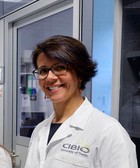
Area STEM: Scienze biomediche e biotecnologie
Competenze: biologia, biologia cellulare, biologia molecolare, biotecnologie, virologia
Parole chiave: analisi di immagini, apprendimento, attenzione, cancro alla prostata, CRISPR-Cas, editing del genoma, Editing del genoma, progettazione di nucleasi, terapia genica, terapie geniche, vettori virali, virus, virus dell'immunodeficienza umana del tipo 1 (HIV-1)
Regione: Trentino-Alto Adige
Funzione/Ruolo
Professoressa ordinaria di Biologia Molecolare all'Università di Trento, Group Leader Laboratory of Molecular Virology
Percorso professionale
Dopo la laurea in Scienze Biologiche all’Università di Genova nel 1990 si trasferisce negli Stati Uniti, Bethesda MD, al National Institute of Health (NIH) dove studia la biologia molecolare dei retrovirus. Nel 1998 si trasferisce a New York dove lavora come postdoc alla Cornell University e poi come Instructor all’Institute of Gene Therapy, Mount Sinai School of Medicine. Al suo rientro in Italia lavora all’Istituto Superiore di Sanità e in seguito all’International Centre of Genetic Engineering and Biotechnology, ICGEB, di Trieste. In seguito, diventa ricercatrice alla Scuola Normale di Pisa dove guida il Laboratorio di Biologia Molecolare. Attualmente è Professoressa Ordinaria di Biologia Molecolare all’Università di Trento dove insegna Virologia Molecolare e Terapia Genica. All’interno del Dipartimento CIBIO, dell’Università di Trento, conduce attività di ricerca per lo sviluppo biotecnologico di strumenti molecolari per l’editing genomico da applicare in terapia genica per la cura di malattie genetiche, con particolare interesse per la cura di fibrosi cistica. È co-inventrice di tre brevetti e co-fondatrice e scientific advisor di una start-up accademica, Alia Therapeutics, con finalità di sviluppo di strategie di editing genomico per la terapia genica.
Risultati scientifici
La sua carriera scientifica inizia nel laboratorio di Robert Gallo all’NIH, di Bethesda negli Sati Uniti dove studia i meccanismi di trasformazione cellulare causati da HTLV-1, un retrovirus umano che causa un tipo leucemia, la Adult T-cell Leukemia. I suoi studi hanno dato un contributo importante alla comprensione nel campo dell’oncogenesi permettendo di chiarire meccanismi alla base dei tumori causati dai virus. I tre principali articoli relativi all’attività di ricerca di questo periodo sono: i) Science, 1995. 269(5220): p. 79-81. 31.8, ii) Blood, 1996. 88(5): p. 1551-60.10.1 and iii) Oncogene, 1999. 18(15): p. 2441-50.
I suoi studi continuano nel campo della retrovirologia per indagare i meccanismi molecolari alla base dell’infezione da HIV-1, il virus che causa l’AIDS. La sua ricerca si focalizza sugli eventi centrali del ciclo replicativo di HIV-1 che avvengono nei nuclei delle cellule infette. Nei suoi studi utilizza metodi sperimentali innovativi integrando tecniche di biologia molecolare con strumenti avanzati di microscopia a fluorescenza per esaminare la dinamica nucleare del virus e gli eventi che portano a fondere il genoma virale con quello cellulare. I tre principali articoli relativi all’attività di ricerca di questo periodo sono: i) Cell Host Microbe. 2011 Jun 16;9(6):484-95, ii) Proc Natl Acad Sci U S A. 2013 Apr 2;110(14):5636-41 and Methods Mol Biol. 2014;1087:47-54.
Recentemente la sua ricerca è volta allo sviluppo biotecnologico di strumenti molecolari per l’editing genomico per il loro utilizzo in terapia genica per la cura diu malattie genetiche. Con il suo gruppo ha dato importanti contributi nel campo della terapia genica sviluppando nuovi sistemi di trasferimento genico sia di tipo virale che non-virale per molecole dell’ editing genomico e con l’identificazione di una tra le più precise varianti di Cas9 (evoCas). Ha svolto studi per la messa a punto di strategie per correggere mutazioni alla base di malattie genetiche con particolare attenzione verso una delle più frequenti malattie genetiche, la Fibrosi Cistica. I tre principali articoli relativi all’attività di ricerca di questo periodo sono: Nat Commun. 2019 Aug 7;10(1):3556, Mol Ther Nucleic Acids. 2018; 12:453-462, Nat Biotechnol. 2018; 36(3):265-271).
Attività editoriali e pubblicazioni
(2020) Leslie W, Frati G, Felix T, Hardouin G, Casini A, Wollenschlaeger C, Meneghini V, Masson C, De Cian A, Chalumeau A, Mavilio F, Amendola M, Andre-Schmutz I, Cereseto A, El Nemer W, Concordet JP, Giovannangeli C, Cavazzana M, Miccio. Editing a γ-Globin Repressor Binding Site Restores Fetal Hemoglobin Synthesis and Corrects the Sickle Cell Disease Phenotype. Science Advances 2020 6 (7): eaay9392.
(2019) Maule G, Casini A, Montagna C, Ramalho AS, De Boeck K, Debyser Z, Carlon MS, Petris G, Cereseto A. Allele specific repair of splicing mutations in cystic fibrosis through AsCas12a genome editing. Nat Commun. 2019 Aug 7;10(1):3556. doi: 10.1038/s41467-019-11454-9.
(2018) Montagna C, Petris G, Casini A, Maule G, Franceschini GM, Zanella I, Conti L, Arnoldi F, Burrone OR, Zentilin L, Zacchigna S, Giacca M, Cereseto A. VSV-G Enveloped Vesicles for Traceless Delivery of CRIAPR-Cas9. Mol Ther Nucleic Acids. 2018; 12:453-462.
(2018) Casini A, Olivieri M, Petris G, Montagna C, Reginato R, Maule G, Lorenzin F, Prandi D, Romanel A, Demichelis F, Inga A, Cereseto A. In vivo screening of highly specific SpCas9 variants. Nat Biotechnol. 2018; 36(3):265-271
(2017) Romanel A, Garritano S, Stringa B, Blattner M, Dalfovo D, Chakravarty D, Soong D, Cotter KA, Petris G, Dhingra P, Gasperini P, Cereseto A, Elemento O, Sboner A, Khurana E, Inga A, Rubin MA, Demichelis F. Inherited determinants of early recurrent somatic mutations in prostate cancer. Nat Commun 2017;8:48.
(2017) Petris G, Casini A, Montagna C, Lorenzin F, Prandi D, Romanel A, Zasso J, Conti L, Demichelis F, Cereseto A. Hit and go CAS9 delivered through a lentiviral based self-limiting circuit. Nat Commun 2017;8:15334.
(2016) Quercioli V, Di Primio C, Casini A, Mulder LCF, Vranckx LS, Borrenberghs D, Gijsbers R, Debyser Z, Cereseto A. Comparative Analysis of HIV-1 and Murine Leukemia Virus Three-Dimensional Nuclear Distributions. J Virol 2016;90:5205–5209.
(2015) Casini A, Olivieri M, Vecchi L, Burrone OR, Cereseto A. Reduction of HIV-1 infectivity through endoplasmic reticulum-associated degradation-mediated Env depletion. J Virol 2015;89:2966–2971.
(2014) Cereseto A, Giacca M. Imaging HIV-1 nuclear pre-integration complexes. Methods Mol Biol Clifton NJ 2014;1087:47–54.
(2013) Di Primio C, Quercioli V, Allouch A, Gijsbers R, Christ F, Debyser Z, Arosio D, Cereseto A. Single-cell imaging of HIV-1 provirus (SCIP). Proc Natl Acad Sci U S A 2013;110:5636–5641.
(2011) Allouch A, Di Primio C, Alpi E, Lusic M, Arosio D, Giacca M, Cereseto A. The TRIM family protein KAP1 inhibits HIV-1 integration. Cell Host Microbe 2011;9:484–495.
(2010) Manganaro L, Lusic M, Gutierrez MI, Cereseto A, Del Sal G, Giacca M. Concerted action of cellular JNK and Pin1 restricts HIV-1 genome integration to activated CD4+ T lymphocytes. Nat Med 2010;16:329–333.
Riconoscimenti e premi
Anna Cereseto ha ricevuto supporto finanziario per la sua ricerca dalla Comunità Europea sia nel contesto del Framework Programme 7 che 8 (Horizon 2020), dal Ministero della Salute (Bandi AIDS) e dalla Fondazione Italiana per la Fibrosi Cistica. È reviewer per agenzie di finanziamento di ricerca internazionali (Flanders Research Fundation, Austrian Science Fund, MRC-University of Cambridge and Czech Science Fundation) e funge da peer-reviewer per giornali internazionali incluso Nature Biotechnology, Nature Communications, Nature Methods e Cell Reports Medicine. È stata selzionata per un premio (fellowship) AIRC e dal Fogarty International Center Research (NIH).

Funzione/Ruolo
Direttrice di Ricerca dell’Istituto Nazionale di Fisica Nucleare (INFN) presso la Sezione di Torino.
Percorso professionale
Dopo la laurea in Fisica teorica a Torino nel 1984, ha ottenuto il PhD dalla State University of New York at Stony Brook nel 1989 e lavorato al CALTECH in California, per poi rientrare nel 1993 come Ricercatrice e docente presso il Politecnico di Torino. È dirigente di ricerca presso la Sezione di Torino dell'INFN, dove dal 2015 al 2022 ha coordinato il Gruppo di Fisica Teorica. La sua ricerca esplora le teorie quantistiche delle interazioni fondamentali e della gravità, con applicazioni allo studio dei buchi neri ed alla cosmologia. Dal 2017 guida un progetto di ricerca nazionale sulla Teoria dei campi e delle Stringhe. È stata team member dell’ERC “Superfields” e working group leader nel progetto europeo COST “The String Theory Universe”. E’ attiva nella promozione della dimensione di genere in Fisica Teorica e fra le fondatrici del gruppo GenHET presso il CERN. Collabora in diverse vesti a iniziative di diffusione della scienza con vari linguaggi, incluso quello teatrale; è infatti fra le ideatrici di La forza nascosta: scienziate nella fisica e nella storiata: scienziate nella fisica e nella storia e presidente dell’associazione Teatro&Scienza a Torino.
Risultati scientifici
La sua attività di ricerca ha riguardato la Fisica teorica delle alte energie. Si è dedicata alla costruzione di nuove teorie quantistiche che, estendendo la Relatività Generale di Einstein ed il Modello Standard per le particelle elementari, possano descrivere l'unificazione della gravità con le altre interazioni fondamentali fra particelle elementari. La sua attenzione si è focalizzata sulle strutture matematiche e sulle simmetrie che regolino l’interazione di spazio, tempo e materia. È esperta di modelli in cui lo spazio-tempo possiede più di 4 dimensioni, di teorie con invarianza conforme e di teorie di campo con supersimmetria: supergravità, teorie di stringa, teorie olografiche. Ha contribuito anche con le loro applicazioni allo studio dei buchi neri ed alla cosmologia.
I suoi risultati più rilevanti riguardano la costruzione di modelli generali di supergravità in 4 e 5 dimensioni spazio-temporali atti a descrivere l'interazione fra (super) gravità e materia, l’analisi delle loro simmetrie di dualità elettromagnetica, gli studi sulla consistenza del principio olografico e la descrizione di buchi neri in supergravità mediante equazioni di flusso.
Attività editoriali e pubblicazioni
Le sue pubblicazioni comprendono oltre 60 lavori di ricerca pubblicati su riviste internazionali ed un volume specialistico nel campo della fisica teorica delle alte energie e della fisica matematica. Di seguito, una selezione.
[2019] Castellani L., Ceresole A., D'Auria R., Fré P. Tullio Regge: An Eclectic Genius: From Quantum Gravity to Computer Play. World Scientific, ISBN 978-981-12-1343-4, doi 10.1142/11643.
[2014] Ceresole A., Dall'Agata G., Ferrara S., Trigiante M., Van Proeyen A. A search for an N=2 inflaton potential, Fortsch. Phys. 62 (2014) 584 [arXiv:1404.1745 [hep-th]].
[2007] Ceresole A., Dall'Agata G. Flow equations for non-BPS extremal black holes, JHEP 0703 (2007) 110 [arXiv:hep-th/0702088].
[2006] Ceresole A., Dall'Agata G., Giryavets A., Kallosh R., Linde A. Domain walls, near-BPS bubbles, and probabilities in the landscape, Phys. Rev. D 74 (2006) 086010 [arXiv:hep-th/0605266].
[2000] Ceresole A., Dall'Agata G. General Matter Coupled N=2, D = 5 Gauged Supergravity, Nucl. Phys. 585 (2000)143{170, [hep-th/0004111].
[2001] Ceresole A., Dall'Agata G., Kallosh R., Van Proeyen A. Hypermultiplets, Domain Walls and Supersymmetric Attractors, Phys. Rev. D 64 (2001) 104006 (23 pages) [arXiv:hep-th/0104056].
[2000] Ceresole A., Dall'Agata G., D'Auria R., Ferrara S. Spectrum of type IIB supergravity on AdS(5)xT11: Predictions on N = 1 SCFT's" , Phys. Rev. D61 066001-19, [hep-th/9905226].
[1997] Andrianopoli L., Bertolini M., Ceresole A., D'Auria R., Ferrara S., Fre P., Magri T. N=2 Supergravity and N=2 Super Yang-Mills Theory on General Scalar Manifolds: Symplectic Covariance, Gaugings and the Momentum Map, J. Geom. Phys. 23, 111 (1997), [hep-th/9605032].
[1995] Cadavid A. C., Ceresole A., D'Auria R., Ferrara S. 11-Dimensional Supergravity Compactified on Calabi Yau Threefolds, Phys. Lett B357 (1995) 76-80, [hep-th/9506144].
[1995] Ceresole A., D'Auria R., Ferrara S., Van Proeyen A. Duality Transformations in N=2 Supersymmetric Yang Mills Theories coupled to Supergravity, Nucl. Phys. B444 (1995) 92-124, [hep-th/9502072].
[1992] Ceresole A., D'Auria R., S. Ferrara S., Lerche W., Louis J. Picard-Fuchs equations and special geometry, Int. J. Mod. Phys. A, 8 (1993) 79-114 [hep-th/9204035 [hep-th]].
[1985] Ceresole A., Frè P., Nicolai H. Multiplet Structure and Spectra of N=2 Supersymmetric Compactifications, Class.Quant.Grav. 2 (1985) 133.
Riconoscimenti e premi
Fulbright e Angelo Della Riccia grantist, Caltech Prize Fellowship in Theoretical Physics.

Funzione/Ruolo
Direttrice Ricerca & Sviluppo e membro del Consiglio Direttivo del Gruppo Dr. Schär
Percorso professionale
Dopo la laurea in Scienze e Tecnologie alimentari conseguita nel 1994 presso l'Università di Udine, Virna Cerne si trasferisce in Germania dove è Project leader di ricerca e sviluppo della società Zuegg Fruchtig a Berlino. Nel 1996 rientra in Italia ed è Responsabile del Controllo Qualità e del dipartimento di ricerca e sviluppo di Dr. Schär, azienda leader in Europa per l'alimentazione priva di glutine. Dal 2003 è direttrice e responsabile ricerca e sviluppo dell'intero gruppo Dr. Schär, di cui diventa nel 2015 direttrice esecutiva.
Risultati scientifici
Porta il nome di Virna Cerne e Ombretta Polenghi l'innovativo brevetto che permette di estrarre proteine simili al glutine dal granoturco da poter addizionare agli alimenti per celiaci. Il processo prevede di isolare due proteine simili al glutine derivanti dal mescolamento di acqua, alcol e granoturco in una sospensione riscaldata. Attraverso questo procedimento è poi possibile integrare le proteine isolate nelle preparazioni per celiaci, replicando il gusto e la consistenza dei prodotti realizzati con la tradizionale farina di grano. Il brevetto è una vera rivoluzione per tutti coloro che soffrono di celiachia, malattia autoimmune a causa della quale il glutine danneggia le pareti dell'intestino compromettendo l'assorbimento delle sostanze nutrienti. Questa condizione crea nel celiaco carenze di vitamine, anemia e fatica cronica: l'unica terapia è una dieta rigorosamente priva di glutine. Grazie alla scoperta di Cerne e Polenghi la dieta potrà essere più facile da seguire e soprattutto più gustosa.
Riconoscimenti e premi
Nel 2016 Virna Cerne e il gruppo di ricerca Dr. Schär sono fra i tre finalisti dell'European Inventor Award, nella categoria Industry, gli unici nel settore alimentare. Si tratta di uno dei premi europei più importanti sui temi dell'innovazione.

Funzione/Ruolo
Professoressa aggregata in Fisica Matematica e Delegata del Rettore per le politiche di genere presso l'Università del Salento
Percorso professionale
Dopo la laurea in matematica con lode presso l’università di Bologna, Anna Maria Cherubini consegue un PhD in Matematica presso la stessa università, con una tesi sulla teoria delle perturbazioni in meccanica semiclassica. Nei due anni seguenti lavora come post-doc all’università di Padova, su problemi di teoria delle perturbazioni hamiltoniana da un punto di vista analitico e numerico. Lavora anche presso l’università di Verona, tenendo corsi di analisi matematica.
Dalla sua nomina come ricercatrice all’Università del Salento amplia i suoi interessi di ricerca ad altre aree, quali le transizioni critiche in sistemi complessi, con applicazioni all’ecologia, e ai sistemi dinamici con una componente causale. Nel 2013 è visiting researcher presso il Department of Mathematics dell’Imperial College London, dove rimane per due anni, collaborando con il gruppo di sistemi dinamici. Attualmente è professoressa aggregata presso il Dipartimento di Matematica e Fisica dell’Università del Salento, dove tiene corsi di fisica matematica. Dal novembre 2019 è Delegata del Rettore per le politiche di genere; è altresì componente della Commissione di genere della Conferenza Nazionale dei Rettori delle Università Italiane; del comitato direttivo di European Women in Mathematics (EWM), di cui coordina anche il team editoriale; del Comitato di Presidenza della Conferenza Nazionale degli Organismi di Parità Universitari e del Comitato per le Pari Opportunità dell'Unione Matematica Italiana.
Risultati scientifici
Gli interessi di ricerca di Anna Maria Cherubini comprendono vari aspetti della fisica matematica e della teoria dei sistemi dinamici. Un campo di interesse sono i sistemi hamiltoniani, sistemi con una particolare struttura geometrica, fondamentali in fisica e in particolare in dinamica classica e quantistica. In particolare ha studiato teoria della perturbazioni di sistemi hamiltoniani (in senso molto generale, si tratta di tecniche che permettono di trattare problemi aperti come ‘piccole’ variazioni di sistemi noti) sia dal punto di vista teorico che numerico (algoritmi simplettici).
Ha lavorato a problemi di transizioni critiche (o tipping points) in sistemi complessi, ovvero cambiamenti di stato repentini e irreversibili in sistemi non lineari con numerosissime variabili in interazione. Tali sistemi sono di grande interesse per il mondo reale, per esempio in ecologia, clima, finanza, dove le transizioni critiche possono avere conseguenze drammatiche. In particolare si è occupata di applicazioni all’ecologia, usando tecniche di teoria della percolazione e automi cellulari stocastici per studiare il rischio di desertificazione in territori semi-aridi, anche con lo scopo di identificare segnali precoci di transizione.
Altro campo di lavoro sono i sistemi dinamici con una componente causale: in questo ambito ha studiato fenomeni come la risonanza stocastica (un fenomeno presente in natura e usato in tecnologia nel quale il rumore ambientale amplifica un segnale invece di renderlo meno nitido).
Al momento si sta occupando di problemi che uniscono l’aspetto hamiltoniano a componenti casuali, come problemi di meccanica hamiltoniana con rumore o l’uso di tecniche di teoria ergodica in problemi di meccanica celeste.
Attività editoriali e pubblicazioni
Anna Maria Cherubini è responsabile dell’editorial team per la newsletter di European Women in Mathematics e autrice di pubblicazioni in ambito fisico-matematico nonché relative alla parità di genere nella scienza. Di seguito, una selezione scelta.
ARTICOLI
P. Cherubini, C. Reverberi, M. Mantovani and A.M. Cherubini. Dentro la teoria del prospetto: come la probabilità degli esiti cambia gli atteggiamenti verso il rischio Sistemi intelligenti, ISSN 1120-9550, (2024), in print.
C. Cerroni and A.M. Cherubini. A che punto è la notte: i numeri delle donne nella matematica italiana. Matematica, Cultura e Società 3 (2018), 5-11.
A.M. Cherubini, J.S.W. Lamb, M. Rasmussen, and Y. Sato. A random dynamical system perspective on stochastic resonance. Nonlinearity 30 (2017), 2835–2853.
F. Bagarello, A.M. Cherubini and F. Oliveri. An operatorial description of desertification. SIAM Journal on Applied Mathematics, 76.2 (2016), 433–597.
R. Corrado, A.M. Cherubini and C. Pennetta. Critical Desertification Transition in Semi-Arid Ecosystems: the role of local facilitation and colonization rate, Communications in Nonlinear Science and Numerical Simulations, 22.1 (2015), 3–12.
R. Corrado, A.M. Cherubini and C. Pennetta. Desertification transitions in semi-arid ecosystems and directed percolation, ISCS 2014: Interdisciplinary Symposium on Complex Systems, A. Sanayei, O. E. R¨ossler, I. Zelinka eds, Series: Emergence, complexity and computation, 14, Springer (2015), 99–107.
R. Corrado, A.M. Cherubini and C. Pennetta. Early warning signals of desertification transitions in semi-arid ecosystems. Physical Review E 90.6 (2014): 062705.
K. Mazzocco, A.M. Cherubini and P. Cherubini. On the short horizon of spontaneous iterative reasoning in logical puzzles and games, Organizational Behavior and Human Decision Processes 121 (2013),14–40.
A.M. Cherubini, G. Metafune and F. Paparella. On the stopping time of a bouncing ball, Discrete and Continous Dynamical Systems-B 10:1 (2008), 43–72.
P. Cherubini, E. Castelvecchio and A.M. Cherubini. Generation of hypotheses in Wason’s 2-4-6 task: an information theory approach, Quarterly Journal of Experimental Psychology 158A:2 (2005), 309–332.
G. Benettin, A.M. Cherubini and F. Fass`o. Regular and chaotic motions of the fast rotating rigid body: a numerical study, Discrete and Continous Dynamical Systems-B 2:4 (2002), 43–72.
G. Benettin, A.M. Cherubini and F. Fass`o. A ”changing chart” symplectic algorithm for rigid bodies and other dynamical systems on manifolds, SIAM Journal on Scientific Computing 23:4 (2001), 1189–1203.
LIBRI
A.M. Cherubini, P. Colella and C. Mangia eds. Empowerment e orientamento di genere nella scienza. Dalla teoria alle buone pratiche. Franco Angeli Edizioni (2011), pp.208, ISBN 9788856839623.
Riconoscimenti e premi
Anna Maria Cherubini ha coordinato il progetto STReGA per le donne nella ricerca scientifica, finanziato dal Ministero del Lavoro e delle Politiche Sociali nell'ambito del Piano di Azioni Positive (2008-2011). È stata nel core team dell'Università del Salento del progetto europeo "CALIPER: Linking research and innovation for gender equality" (SwafS-09-2018-2019-2020), oltre che nel core team di progetti per la European Researchers’ Night tra cui l’ultimo, appena approvato, ERN APULIA MED. Ha partecipato alla rete europea dottorale ITN CRITICS su transizioni critiche in sistemi complessi, e a vari progetti PRIN di interesse di ricerca nazionale.
È delegata del rettore alle politiche di genere per Unisalento.
È componente del comitato direttivo di European Women in Mathematics (EWM), di cui coordina anche il team editoriale, del Comitato Pari Opportunità dell'Unione Matematica Italiana, del Comitato di Presidenza della Conferenza Nazionale degli Organismi di Parità Universitari e della Commissione di Genere della Confererenza dei Rettori delle Università Italiane (CRUI) per la quale, tra l’altro, ha partecipato alla stesura delle linee guida per i Gender Equality Plan delle università.

Funzione/Ruolo
Professoressa ordinaria di Ingegneria elettronica e Telecomunicazioni, TNG Group, Politecnico di Torino
Percorso professionale
Dopo la laurea in Ingegneria Elettronica all'Università di Firenze nel 1996, prosegue gli studi ottenendo un dottorato di ricerca in Ingegneria Elettronica e delle Telecomunicazioni presso il Politecnico di Torino nel 2000. Dallo stesso anno entra nel Dipartimento di Elettronica e Telecomunicazioni presso il Politecnico di Torino, prima con una borsa di Cselt (oggi Telecom Italia) su reti ATM senza fili, poi con una posizione di breve termine come assistente. Dal 1998 al 2003, svolge lavoro di ricerca presso il Centro di comunicazioni wireless e il California Institute per le telecomunicazioni e Information Technology dell'Università della California, a San Diego. Nel 2012 e 2016, è visiting professor alla Monash University (Australia). Attualmente è professoressa ordinaria al Dipartimento di Elettronica e Telecomunicazioni, e dal 2012 al 2018 è la coordinatrice del Master in Comunicazione e Ingegneria Informatica presso il Politecnico di Torino. Dal marzo 2018 è Delegata del Rettore per gli Alumni e l'Orientamento alla Carriera.
Risultati scientifici
Chiasserini ha partecipato a diversi progetti nazionali ed europei sui sistemi di rete wireless, come i progetti RAMON, VICOM, PATTERN, NEWCOM++, NEWCOM#, MEADOW, VICSUM, FIGARO, ed è stata Principal Investigator per i progetti nazionali MASP, TA_SL, IoT_|_ToI, e LIMPID, così come per i progetti H2020 5G-Crosshaul, H2020 5G-TRANSFORMER, e H2020 I-REACT. È stata coordinatrice del progetto internazionale QNRF GAD sulle reti di accesso wireless di prossima generazione (2012-2015), del progetto internazionale FLAG sulla radio full-duplex e del progetto MIMOSE sulla connettività mobile locale. È stata Principal Investigator anche per i contratti tra il Politecnico di Torino e ALCATEL, Telecom Italia, Magneti Marelli, INLAB, FCA, e TIM.
I suoi interessi di ricerca sono principalmente nel campo delle reti wireless e mobili. I suoi articoli sono stati pubblicati su riviste specializzate di grande prestigio, e ha ricevuto diversi Best Paper Awards. Carla è anche coautrice di sei brevetti.
Attività editoriali e pubblicazioni
Carla è Editor-in-Chief della rivista Computer Communications ed è un Associate Editor della ACM/IEEE Transactions on Networking. Ha fatto parte per diversi anni dell'Editorial Board delle IEEE Transactions on Mobile Computing, delle IEEE Transactions on Wireless Communications, e dell'Ad Hoc Networks Journal, e dell'Executive Editorial Committee delle IEEE Transactions on Wireless Communications.
È co-autrice di più di 300 articoli, tra cui:
(2019) Agarwal, S.; Malandrino, F.; Chiasserini, C. F.; De, S., VNF Placement and Resource Allocation for the Support of Vertical Services in 5G Networks. IEEE-ACM Transactions on Networking
(2018) Malandrino, F.; Chiasserini, C. F.; Kirkpatrick, S., Cellular Network Traces Towards 5G: Usage, Analysis and Generation, IEEE Transactions on Mobile Computing
(2015) Malandrino F, Limani Z, Casetti C, Chiasserini CF. Interference-aware downlink and uplink resource allocation in HetNets with D2D support. IEEE Transactions on Wireless Communications.
(2006) Chiasserini, C. F.; Garetto, M., An Analytical Model for Wireless Sensor Networks with Sleeping Nodes, IEEE Transactions on Mobile Computing.
(2005) Srinivasan, V.; Nuggehalli, P.; Chiasserini, C.F.; Rao, R.R., An Analytical Approach to the Study of Cooperation in Wireless Ad Hoc Networks, IEEE Transactions on Wireless Communications.
Riconoscimenti e premi
Nel 2010 Carla Fabiani Chiasserini riceve il premio "Best Editor" dalla Ad Hoc Networks Journal. Co-autrice di tre brevetti, fa anche parte del Comitato Scientifico della Fondazione Bruno Kessler ed è affiliata anziana della IEEE (Institute of Electrical and Electronics Engineers) e componente di ACM (Association for Computing Machinery).
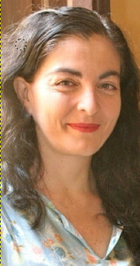
Funzione/Ruolo
Professoressa associata di Fisica all'Università di Pisa
Percorso professionale
Dopo aver conseguito la laurea in Fisica all’Università di Pisa nel 1992 e il PhD alla Scuola Normale Superiore (SNS) in1996, entrambi cum laude, alla SNS è stata postdoc e quindi ricercatrice (1998-2002, 2004-2007), lavorando tra il 2002 e il 2004 con la professora Anna Nobili. Dal 2007 è professora associata all’Università di Pisa (abilitata come ordinaria). Insegna due corsi di fisica di base per Farmacia, uno specialistico per la magistrale e il dottorato di Fisica, e la Fisica di tutti i giorni per insegnare a insegnare la fisica. Contribuisce al Centro Interdisciplinare di Scienze per la Pace, al Centro Interdipartimentale per Aggiornamento, Formazione e Ricerca Educativa, e al gruppo Ricerca e Innovazione Responsabile di UNIPI.
Ha coordinato progetti di ricerca disciplinare e didattica, finanziati da CINECA, SNS, ASI, INFN, MIT-UNIPI, KITP, Erasmus+ e CISIA.
Ha svolto parte della sua attività di ricerca in Istituzioni scientifiche internazionali, tra cui: IRC Cambridge, TU-Eindhoven, Institut Poincaré (Paris), CNRS (Grenoble), University of Auckland, Strathclyde University (UK), ICTP, ECT e CRS-BEC (Trento), e Los Alamos National Labs, Aspen Center for Physics, Kavli Institute for Theoretical Physics, Stanford, Harvard e MIT (US). Lunghi e solidi legami sono con il JILA (Boulder, US), dove ha fatto ricerca sulla fisica dei fluidi atomici quantistici per periodi di 1-2 mesi quasi ogni anno dal 1995 nei gruppi di Murray Holland o Debbie Jin, attorno agli esperimenti pioneri dei Nobel laureates Carl Wiemann ed Eric Cornell.
Risultati scientifici
Ha sviluppato la teoria bipolaronica per la superconduttività ad alta temperatura critica, di cui a una monografia, contribuendo al contempo allo studio di bosoni carichi fortemente correlati. A partire dall’osservazione nel 1995 al JILA e MIT della condensazione di Bose-Einstein in atomi ultrafreddi (cioè a miliardesimi di Kelvin dallo zero assoluto), si è dedicata allo studio di questi sistemi come piattaforma per ingegnerizzare tecnologie quantistiche basate sul controllo di temperatura, interazioni e dimensioni spaziali. Per questo, ha anche sviluppato metodi di simulazione e teorici, come la teoria del funzionale di densità dipendente dal tempo per superfluidi. Il lavoro più rilevante e citato è l’ideazione con Murray Holland della teoria della superfluidità fermionica risonante, successivamente osservata da Debbie Jin al JILA.
In un felice parentesi di ricerca nel gruppo di Anna Nobili, ha sviluppato un ambiente di simulazione per il test Galileo Galilei on the Ground del principio di equivalenza, con corpi macroscopici. Questa interdisciplinarietà continua a caratterizzare l’attività di ricerca, in due direzioni: tecnologie quantistiche per la fisica fondamentale con interferometria atomica (è coautrice di diversi proposals tra i quali Atomic Experiments for Dark Matter and Gravity Exploration in Space per la call Voyage2050 di ESA); lo sviluppo di una “quantum black box” per risolvereproblemi quantistici che, mediante ideazione di videogiochi, modellizzazione del comportamento umano, e uso di machine learning, integra la potenza di creatività/intuizione della mente umana con quella di macchine (classiche o quantistiche). Per questo coordina con Sabrina Maniscalco (Turku University) il proposal interdisciplianre Integrating Human and Machine Minds for Quantum Technologies (IQHuMinds) tra fisica quantistica, neuroscienze, informatica, gamification, con partners europei e US di Università (Turku e Pisa, ICFO, JILA) e aziende di settore (VIS, MiTale, QuSide, IBM-Zurich, Unity).
Associa alla ricerca disciplinare quella didattica per la fisica di outreach. Ha ideato diversi format ed eventi per radio (tra cui Piacere, Scienza! con Sara Maggi), video, e spettacoli di arte e scienza. Ha collaborato suscienza&società con Rai-Radio3, Repubblica, Focus Junior, Scienzainrete, Ingenere, Corriere della Sera, DireDonne.
Attività editoriali e pubblicazioni
[2019] Lucchesi L and Chiofalo ML, Many-body Entanglement of Fermi Gases with Short-Range Interactions. Phys. Rev. Lett. 123: 60406.
[2018] Colella E, Citro R, Barsanti M, Rossini D, and Chiofalo ML, Quantum Phases of Spinful Fermi Gases in Optical Cavities. Phys. Rev. B 97: 134502.
[2014] Iadonisi G, Cantele G, Chiofalo ML, Introduction to Solid State Physics and Crystalline Nanostructures, SPRINGER VERLAG- Italia (2014) 685 pp.
[2008] Ivanov V, Alberti A, Schioppo M, Ferrari G, Artoni M, Chiofalo ML and Tino G, Coherent delocalization of atomic wavepackets in driven lattice potentials. Phys. Rev. Lett. 100: 43601.
[2007] Citro R, Orignac E, de Palo S, and Chiofalo ML, Evidence of Luttinger liquid behavior in one-dimensional dipolar quantum gases, Phys. Rev. A Rapid Comm. 75: 51602.
[2006] Chiofalo ML, Giorgini S, and Holland MJ, Released Momentum Distribution of a Fermi Gas in the BCS-BEC Crossover. Phys. Rev. Lett. 97: 070404.
[2003] Nobili AM, Bramanti D, Comandi GL, Toncelli R, Polacco E, and Chiofalo ML, GALILEO GALILEI-GG: design, requirements, error budget and significance of the ground prototype. Phys. Lett. A.318: 172.
[2001] Holland MJ, Kokkelmans SJJMF, Chiofalo ML and Walser R, Resonance superfluidity in a quantum degenerate Fermi gas. Phys. Rev. Lett. 87: 120406.
[2001] Chiofalo ML and Tosi MP, Time-dependent density-functional theory for superfluids. Europhys. Lett. 53:162.
[2001] Burger S, Cataliotti FS, Fort C, Minardi F, Inguscio M, Chiofalo ML and Tosi MP, Superfluid and Dissipative Dynamics of a Bose-Einstein Condensate in a Periodic Optical Potential. Phys. Rev. Lett. 86: 4447.
[1998] Iadonisi G, Schrieffer RJ and Chiofalo ML Eds., Models and Phenomenology for conventional and high-Tcsuperconductivity, Proceedings del CXXXVI Corso della Scuola Internazionale di Fisica "Enrico Fermi", IOS.
[1997] Holland M, Jin J, Chiofalo ML and Cooper J, Emergence of interaction effects in Bose--Einstein condensation. Phys. Rev. Lett. 78: 3801.
Riconoscimenti e premi
Ha ricevuto il premio per giovani della Società Italiana di Fisica (1997). Il lavoro sulla Teoria del funzionale di densità dipendente dal tempo per superfluidi è stato selezionato come Highlight INFM (1998). Ha ricevuto i Premi Cultura della solidarietà (Pistoia, 2014) e Donne che ce l’hanno fatta (Sportello Donna di Pavia e Fondazione Gaia, Milano, 2016, evento Pechino+20). Secondo Ladynomics, è tra le 150 femministe più influenti del 2019.
Ha organizzato numerosi eventi come parte del comitato scientifico, tra cui la CXXXVI International School of Physics Enrico Fermi (Varenna 1997, sulla superconduttività ad alta temperatura con i direttori R. J. Schrieffer(Nobel laureate) e G. Iadonisi. Ha ideato e diretto il Festival MusicalMente per il Campus delle arti in Sangemini, e presiede la serie di Conferenze Quantum gases, Fundamental interactions, and Cosmology (2017-). È parte dei comitati scientifici di CISP Magazine, Collana Cultura e formazione (D. Pardini e M. Agujari eds.), e Premio Cosmos per la divulgazione scientifica presieduto da Gianfranco Bertone. Ha svolto funzioni di valutatrice tra pari per VQR 2011-2014, ERC Starting Grant 2019, e per Istituzioni accademiche (Stanford, Harvard, LKB Paris). È componente del board di Photonics. Svolge attività di referee per Physical Review (Letters, A, B, E, X), Nature, NJP, EPJ, Europhysics Letters.

Funzione/Ruolo
Professoressa ordinaria di Psichiatria dell'Università Vita-Salute San Raffaele e Responsabile dell'Unità Operativa Complessa di Riabilitazione dei Disturbi dell'Umore dell'Ospedale San Raffaele di Milano
Percorso professionale
Dopo la laurea in Medicina e Chirurgia all'Università degli Studi di Milano e l'abilitazione alla professione medica nel 1985, Cristina Colombo prosegue la sua formazione come frequentatrice volontaria presso il Laboratorio di Neurofisiologia Clinica della Clinica Psichiatrica dell'Università degli Studi di Milano. Contemporaneamente svolge l'attività di assistente medico presso la Divisione di Psichiatria 3 del Dipartimento di Scienze Neuropsichiche, IRCCS Ospedale San Raffaele. L'anno successivo consegue la specializzazione in Psichiatria presso l'Università di Milano. Nel 1991 conclude un corso di perfezionamento in bioetica al Dipartimento di Scienze e Tecnologie Biomediche, IRCCS Ospedale San Raffaele. Nel 2001 ottiene una seconda specializzazione in Criminologia Clinica, sempre all'Università di Milano. Ad oggi è Professoressa di prima fascia di Psichiatria all'Università Vita-Salute San Raffaele, responsabile dell'Unità Operativa Complessa di Riabilitazione dei Disturbi dell'Umore all'Ospedale San Raffaele di Milano e Direttrice del Master di II livello Psicopatologia Forense e Criminologia dell'Università Vita-Salute San Raffaele.
Risultati scientifici
L'attività di ricerca di Cristina Colombo si estende da tecniche di elettroencefalografia computerizzata, di brain mapping e di visualizzazione cerebrale (TAC, RM, PET), fino a giungere alla posizione attuale di coordinamento del gruppo di ricerca dell'Unità di Cronobiologia del Centro per i Disturbi dell'umore dell'Ospedale San Raffaele. All'interno del centro lei e i suoi colleghi svolgonoattività di ricerca scientifica specifica sui disturbi dell'umore, i principali scopi della ricerca sono volti non solo di ampliare le conoscenze circa questa patologia, ma anche di ideare e sviluppare strumenti di diagnosi e misurazione. Le principali linee di ricerca scientifica del Centro coordinato da Cristina Colombo sono rappresentate dal neuroimaging funzionale, dalla psicopatologia dei disturbi dell'umore, dalla cronobiologia e dalla cronoterapia e la somatoteria (TMS, tecnica non invasiva di sollecitazione delle aree del cervello legate ai disturbi depressivi).
Attività editoriali e pubblicazioni
Cristina Colombo fa parte dei comitati scientifici di numerose riviste internazionali ed è autrice di più di 100 articoli su riviste internazionali, tra cui:
(1993) Colombo C, Bonfanti A, Livian S, Abbruzzese M, Scarone S. Size of the corpus callosum and auditory comprehension in schizophrenics and normal controls. Schizophrenia Research, 11:63-70.
(1999) Smeraldi E, Benedetti F, Barbini B, Campori C, Colombo C. Sustained antidepressant effect of sleep deprivation combined with pindolol in bipolar depression: a placebo-controlled trial. Neuropsychopharmacology, 20(4):380-385.
(2000) Moresco RM, Colombo C, Fazio F, Bonfanti A, Lucignani G, Messa C, Gobbo C, Galli L, Del Sole A, Lucca A, Smeraldi E. Effects of fluvoxamine treatment on the in vivo binding of [F-18]FESP in drug naive depressed patients: a PET study. Neuroimage, 12(4):452-465.
(2002) Benedetti F, Colombo C, Barbini B, Smeraldi E. Sleep deprivation and biological rhytms in bipolar disorder. Journal of Affective Disorders, (68):88-89.
(2007) Benedetti F, Barbini B, Colombo C, Smeraldi E. Chronoterapeutics in a psychiatric ward. Sleep Medicine Reviews, 11:509-522.
(2011) Benedetti F, Colombo C. Sleep deprivation in mood disorders. Neuropsychobiology, 64:141-151.
(2014) Benedetti F, Bollettini I, Radaelli D, Poletti S, Locatelli C, Falini A, Smeraldi E, Colombo C. Adverse childhood experiences influence white-matter microstructure in patients with bipolar disorder. Psychological Medicine, 44:3069-3082.
(2014) Benedetti F, Riccaboni R, Poletti S, Radaelli D, Locatelli C, Lorenzi C, Pirovano A, Smeraldi E, Colombo C. The serotonin transporter genotype modulates the relationship between early stress and adult suicidality in bipolar disorder. Bipolar disorders, 16: 857-866.
(2015) Benedetti F, Poletti S, Radaelli D, Locatelli C, Pirovano A, Lorenzi C, Vai B, Bollettini I, Falini A, Smeraldi E, Colombo C. Lithium and GSK-3beta promoter gene variants influence cortical gray matter volumes in bipolar disorder. Psychopharmacology.
(2015) Benedetti F, Riccaboni R, Dallaspezia S, Locatelli C, Smeraldi E, Colombo C. Effects of CLOCK gene variants and early stress on hopelessness and suicide in bipolar depression. Chronobiology International, Posted online on July 23, 2015.

Area STEM: Ingegneria
Competenze: Data science, fabbricazione additiva, ingegneria della produzione, ingegneria meccanica, intelligenza artificiale, machine learning, manifattura avanzata, statistica industriale
Parole chiave: biostampa 3D, controllo statistico di processo, processi manifatturieri avanzati, stampa 3D
Regione: Lombardia
Funzione/Ruolo
Professoressa ordinaria di Tecnologie e Sistemi di Lavorazione al Politecnico di Milano. Visiting professor al MIT (Massachusetts Institute of Technology). Presidente del Comitato tecnico-scientifico di MICS (Made in Italy Circolare e Sostenibile). Membro del Gruppo di supporto strategico alla Commissione Europea MANUFUTURE. Membro del CdA di MADE – Competence Center Industria 4.0.
Percorso professionale
Dopo la laurea in Ingegneria Gestionale al Politecnico di Milano (1996), ha conseguito un Dottorato di ricerca in Tecnologie e Sistemi di Lavorazione (2001). Nello stesso anno è stata visiting post-PhD presso la Pennsylvania State University (PSU), con cui collabora tuttora. Ricercatrice dal 1999, professoressa associata dal 2003, è dal 2014 professoressa ordinaria al Politecnico di Milano.
Nel 2025 è stata Visiting Professor presso il Department of Mechanical Engineering del Massachusetts Institute of Technology (MIT), dove ha insegnato il corso di Additive Manufacturing nello Spring Semester.
Risultati scientifici
Il suo principale interesse di ricerca è lo sviluppo di processi manifatturieri “intelligenti” e “autonomi”, basati sull’analisi di big data (segnali, immagini, video) per la manifattura avanzata, con particolare attenzione alla fabbricazione additiva (Additive Manufacturing) e alla biostampa 3D.
Ha coordinato diversi progetti europei e nazionali sulla manifattura digitale, intelligente e circolare. Collabora con l’Agenzia Spaziale Europea, l’Agenzia Spaziale Italiana e con gruppi di ricerca internazionali, tra cui MIT, Georgia Institute of Technology, Technical University of Munich (TUM) e Imperial College London.
Attività editoriali e pubblicazioni
È Senior Editor o Department Editor di riviste scientifiche di rilievo internazionale, tra cui IISE Transactions, Informs Journal of Data Science, Journal of Quality Technology, Progress in Additive Manufacturing e Additive Manufacturing Letters.
È autrice di oltre 200 pubblicazioni scientifiche sui temi di ricerca e presidente del Comitato tecnico-scientifico del progetto Made in Italy Circolare e Sostenibile (Next Generation EU). Fa parte del gruppo di supporto della Commissione Europea sulle strategie di ricerca per il futuro del manifatturiero.
Riconoscimenti e premi
Bianca Maria Colosimo è la ricercatrice con il maggior numero di pubblicazioni al mondo sul tema “in-situ monitoring additive manufacturing” (Scopus, ultimo aggiornamento al marzo 2025).
Premi e riconscimenti recenti
2024 Inserita nella lista World Top 2% Scientist (Stanford University & Elsevier)
2023 George Box Medal Award (European Network for Business and Industrial Statistics)
2023 Jacob Wallenbergs Foundation Award (Royal Swedish Academy of Engineering Sciences) per la ricerca nei materiali avanzati
2023 ASQ Brumbaugh Award (American Society for Quality)
2023 Certificazione ad honorem – Esperta Internazionale di Additive manufacturing - European Welding Foundation (EWF)



